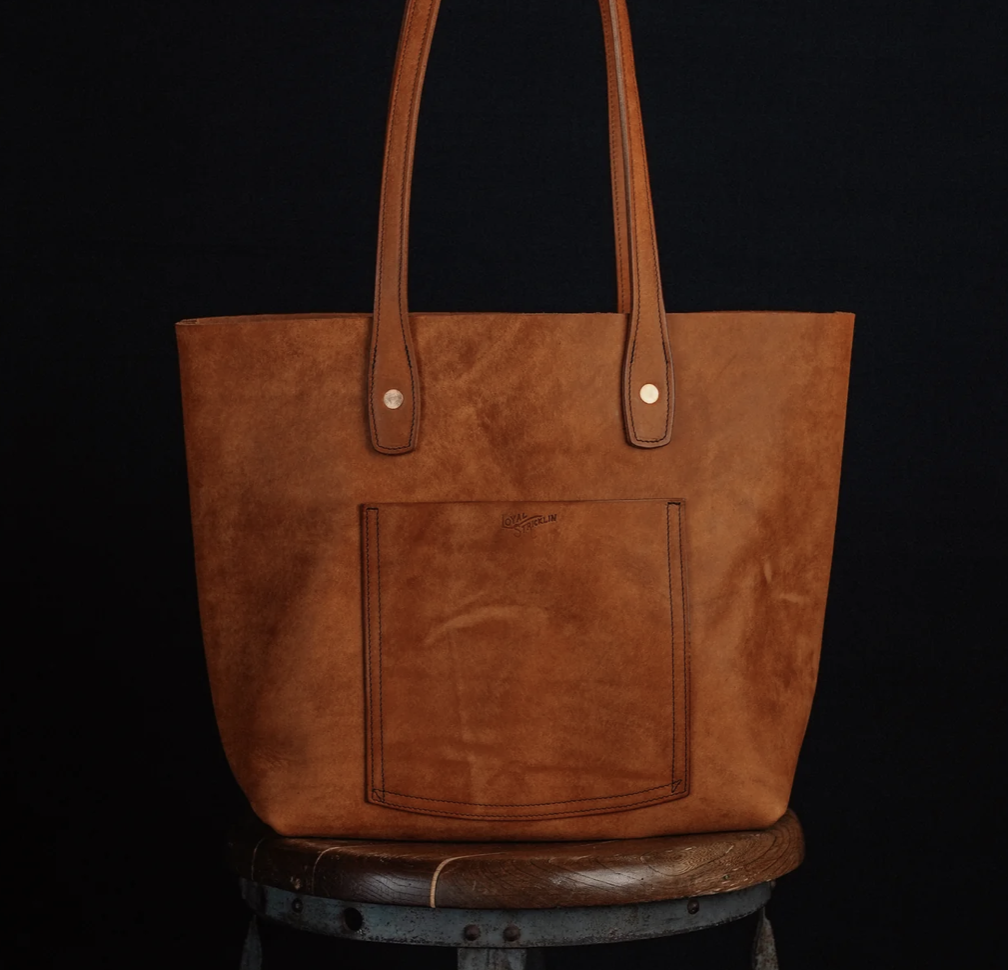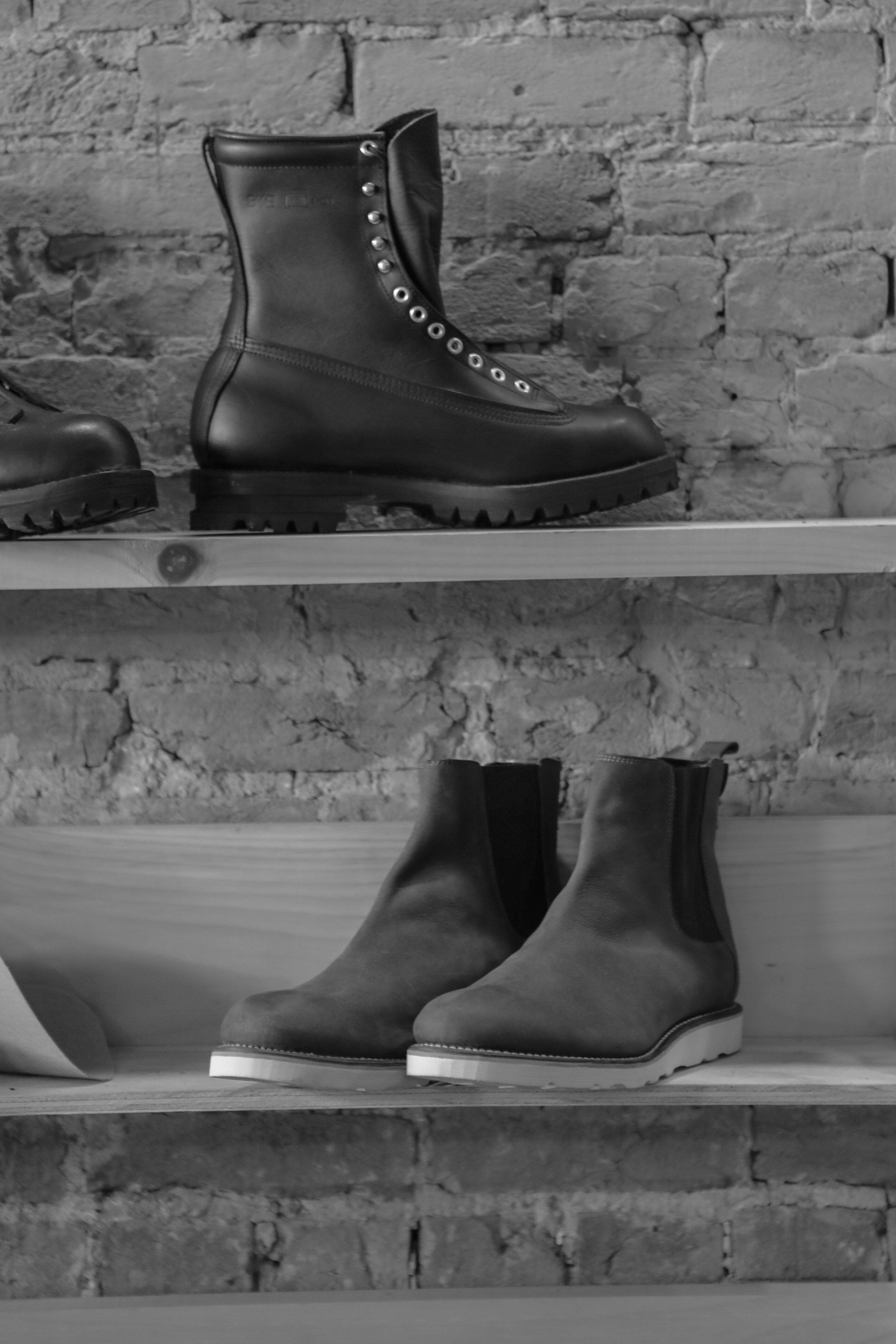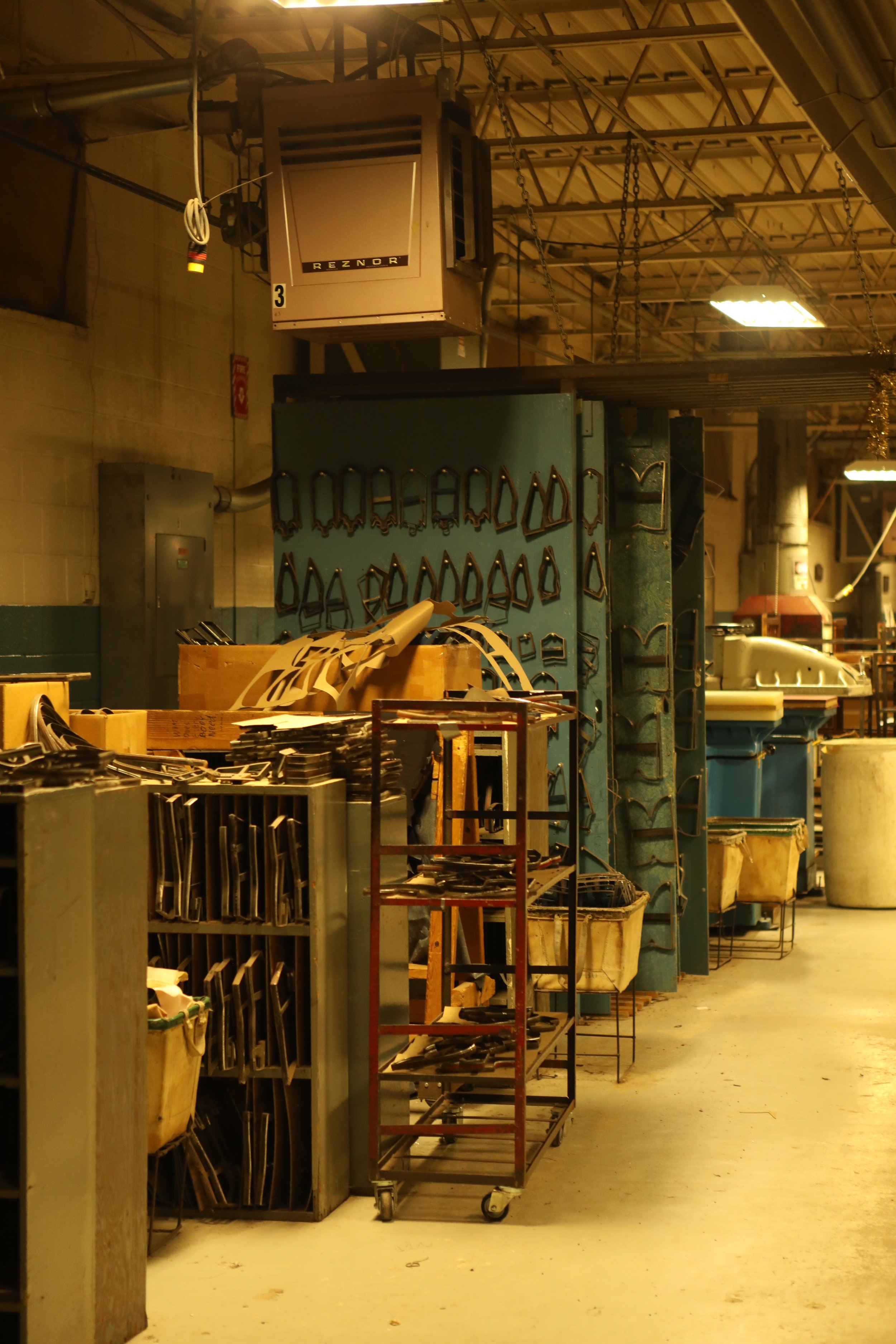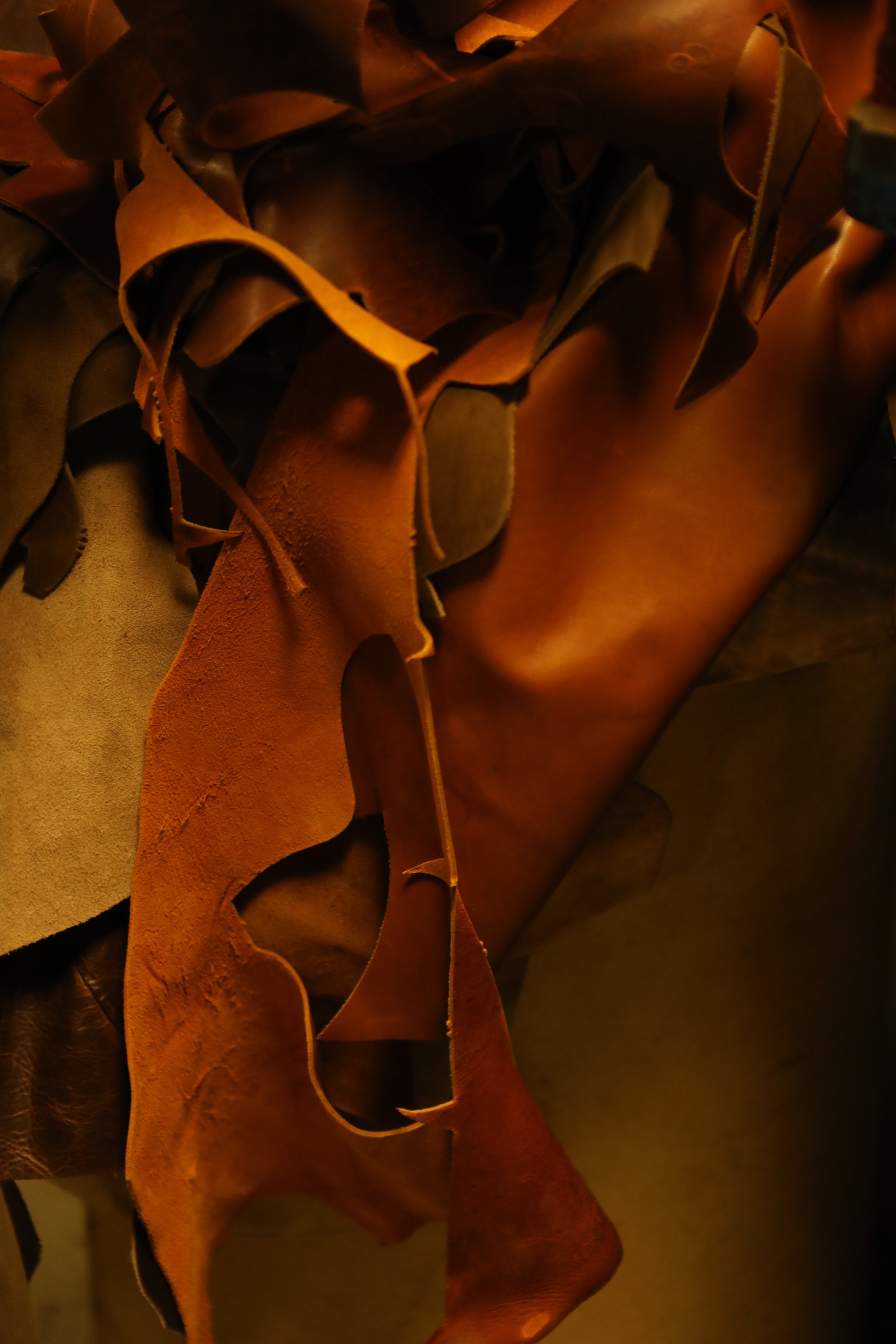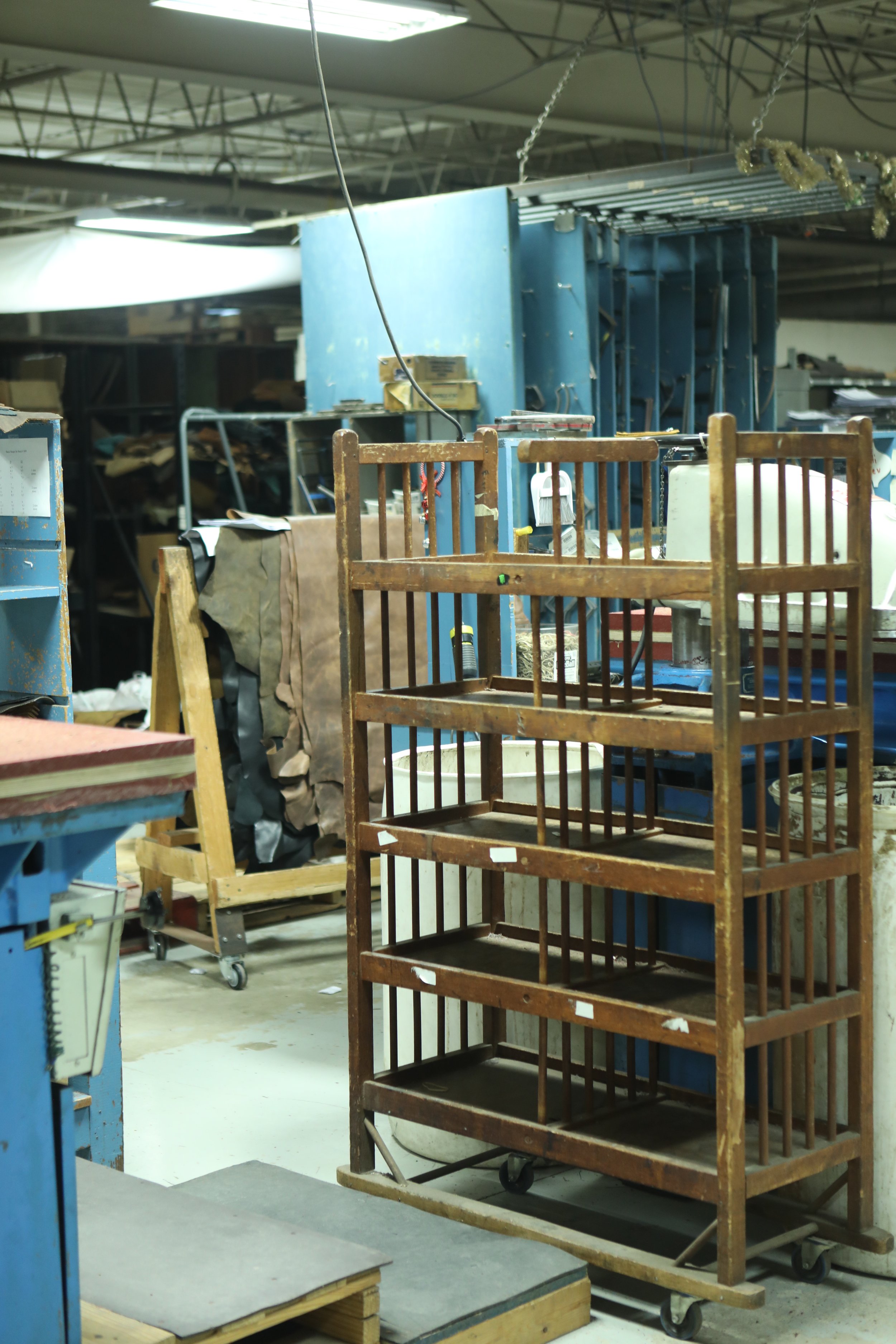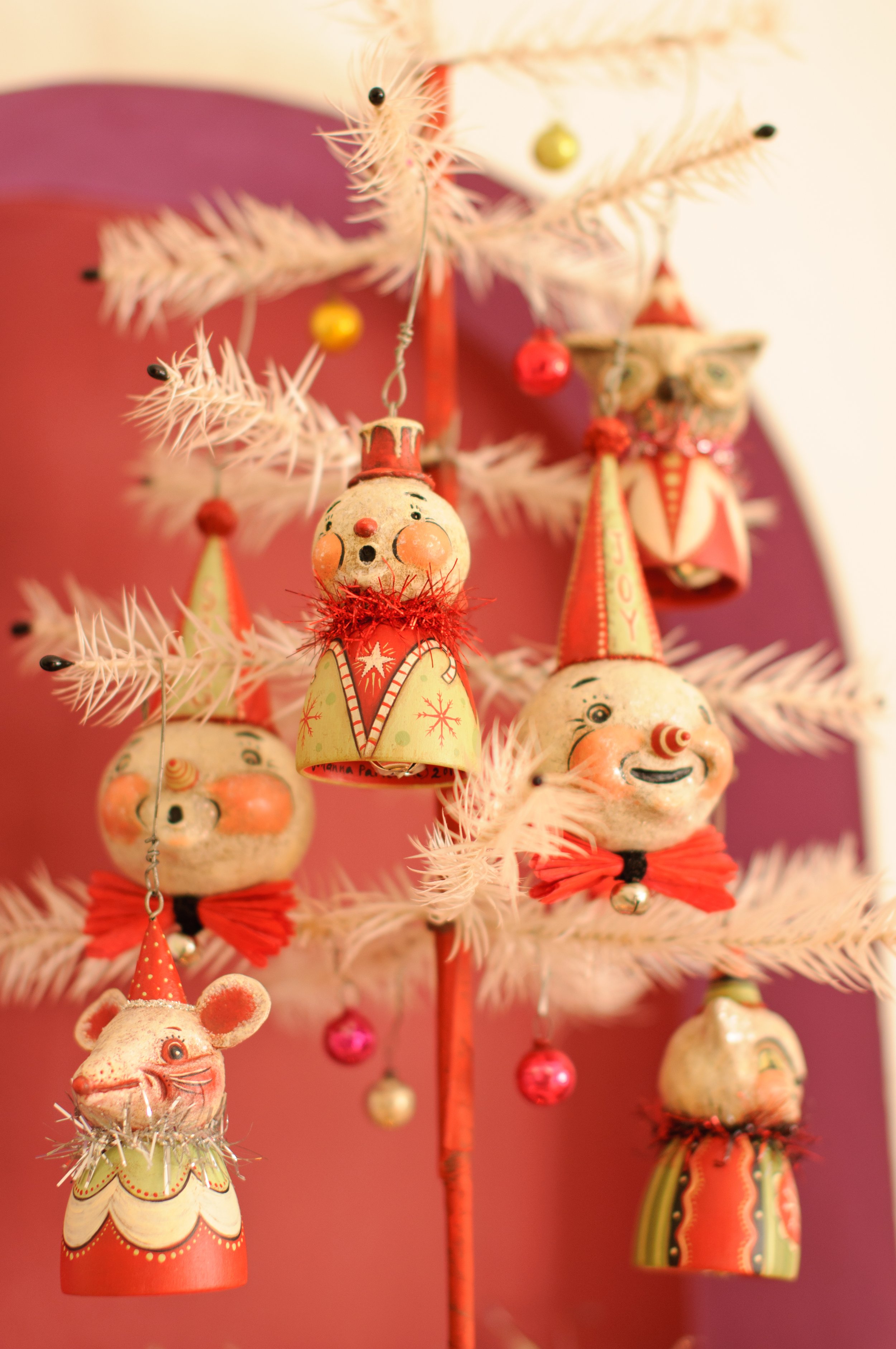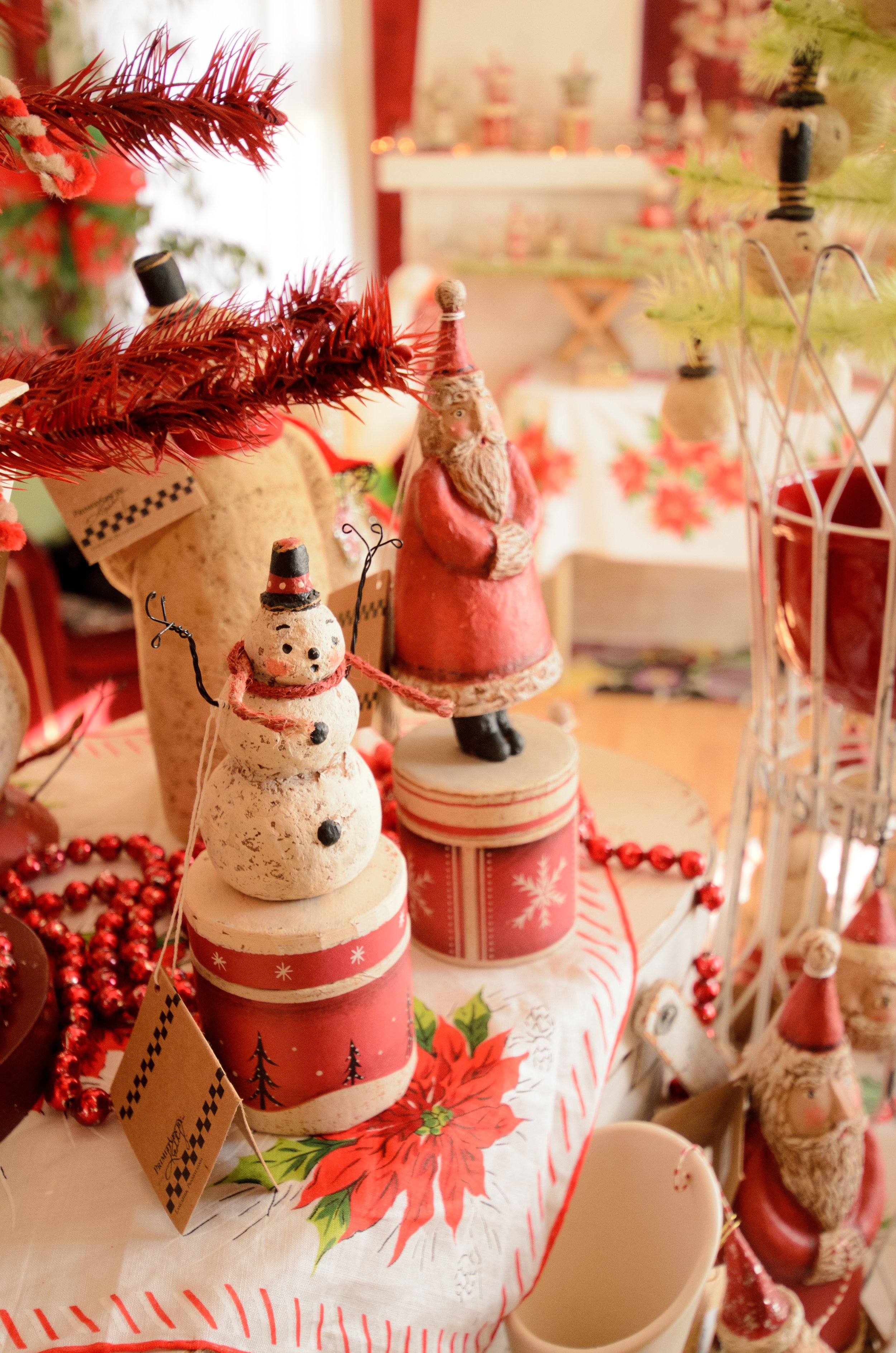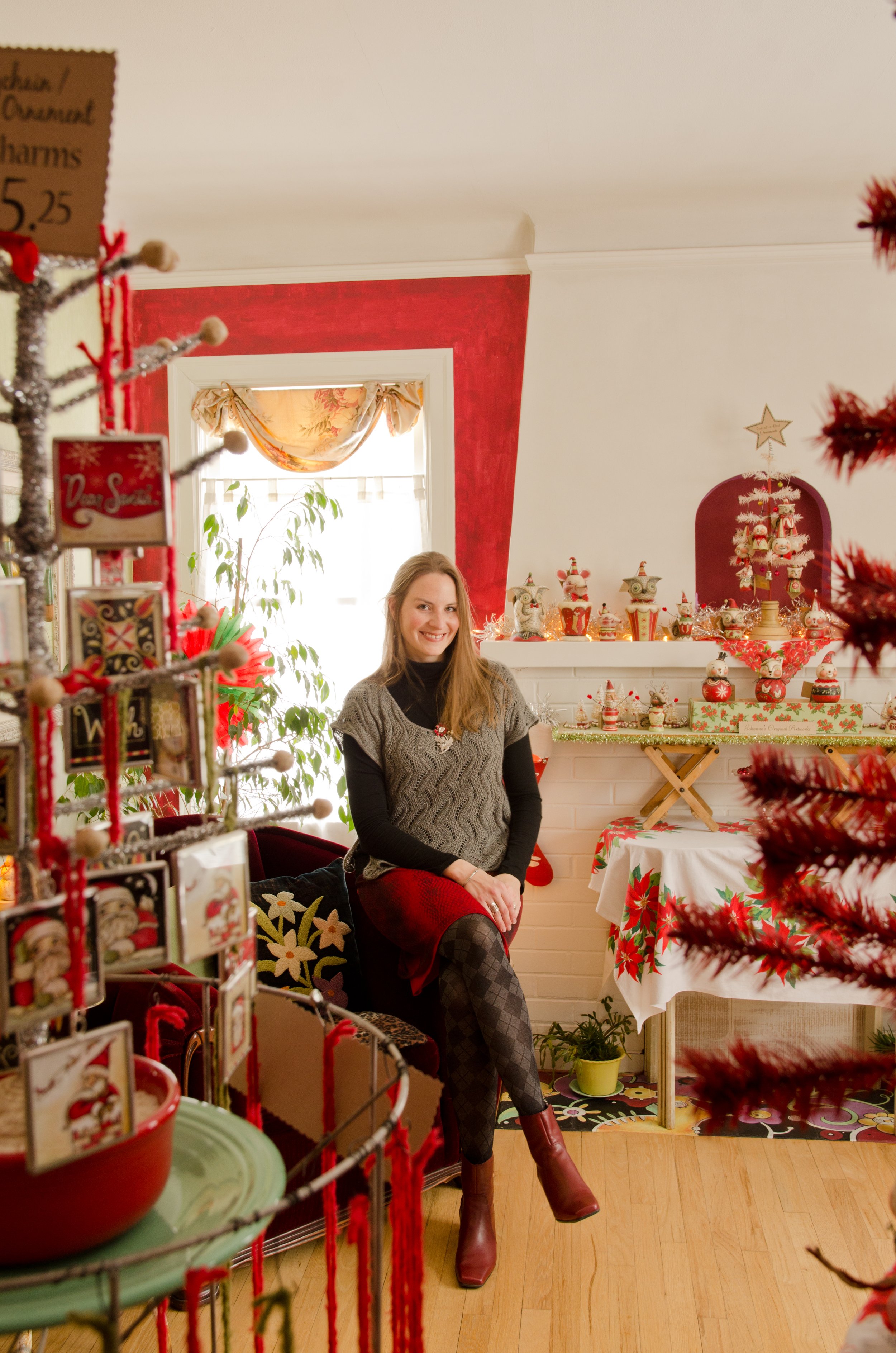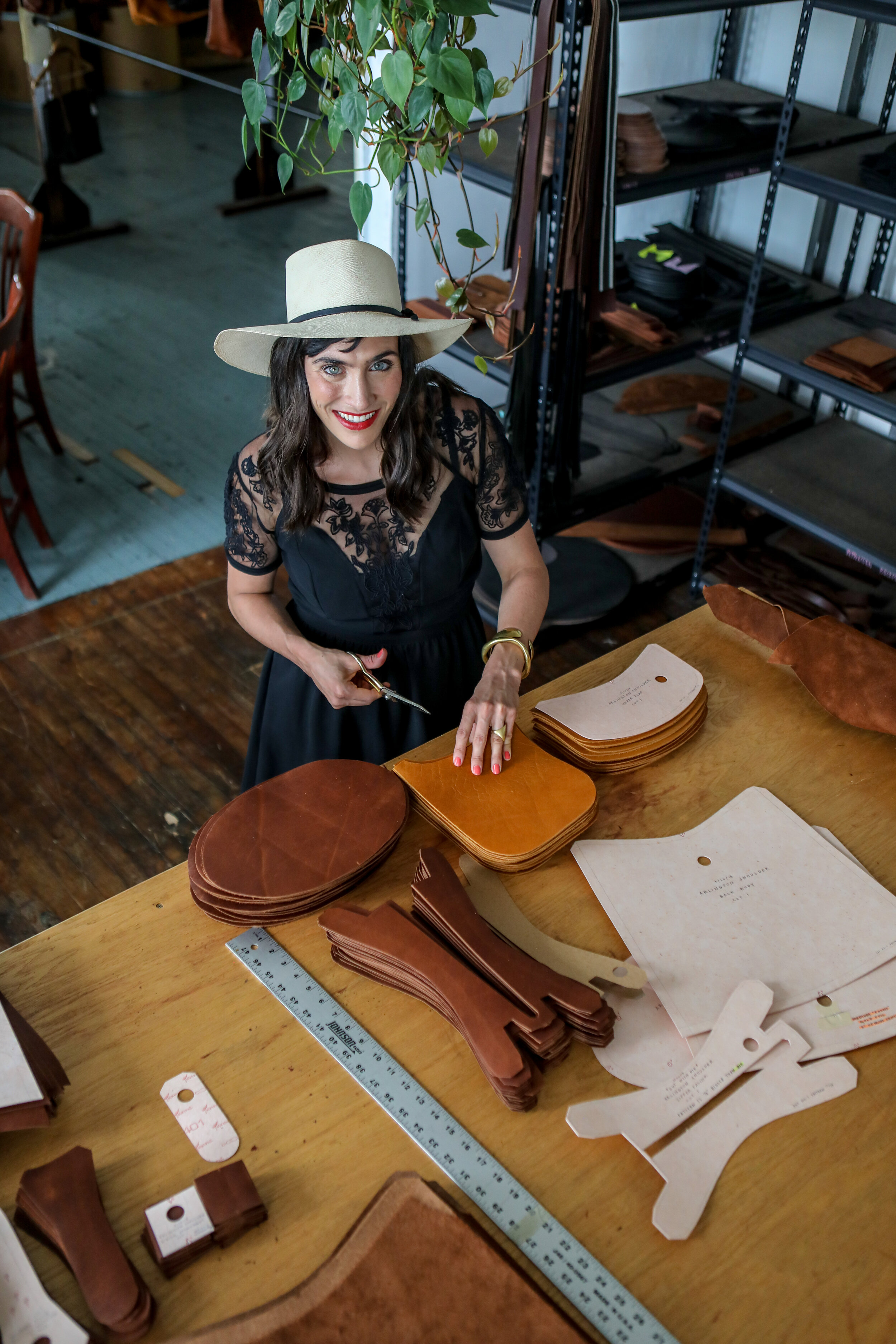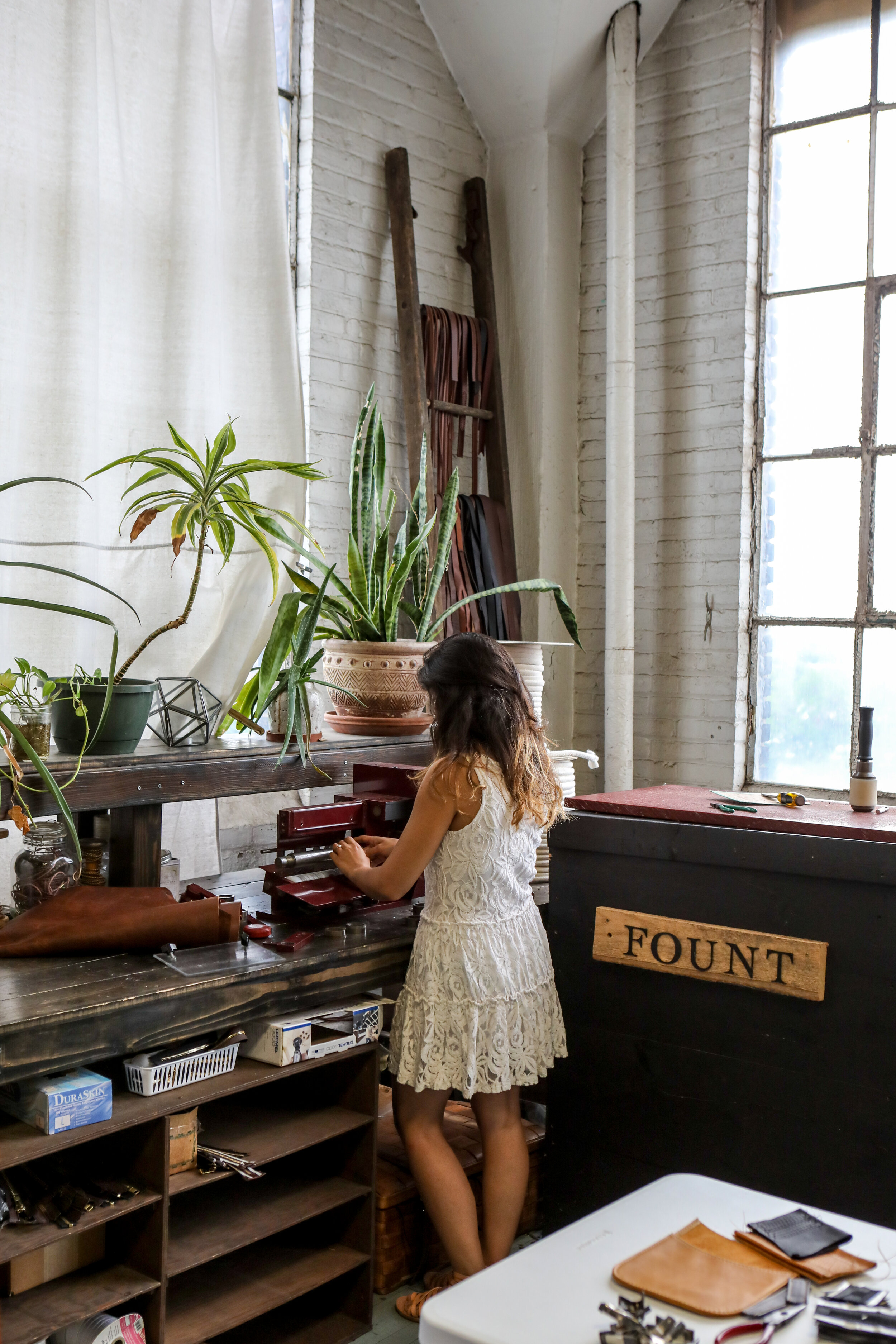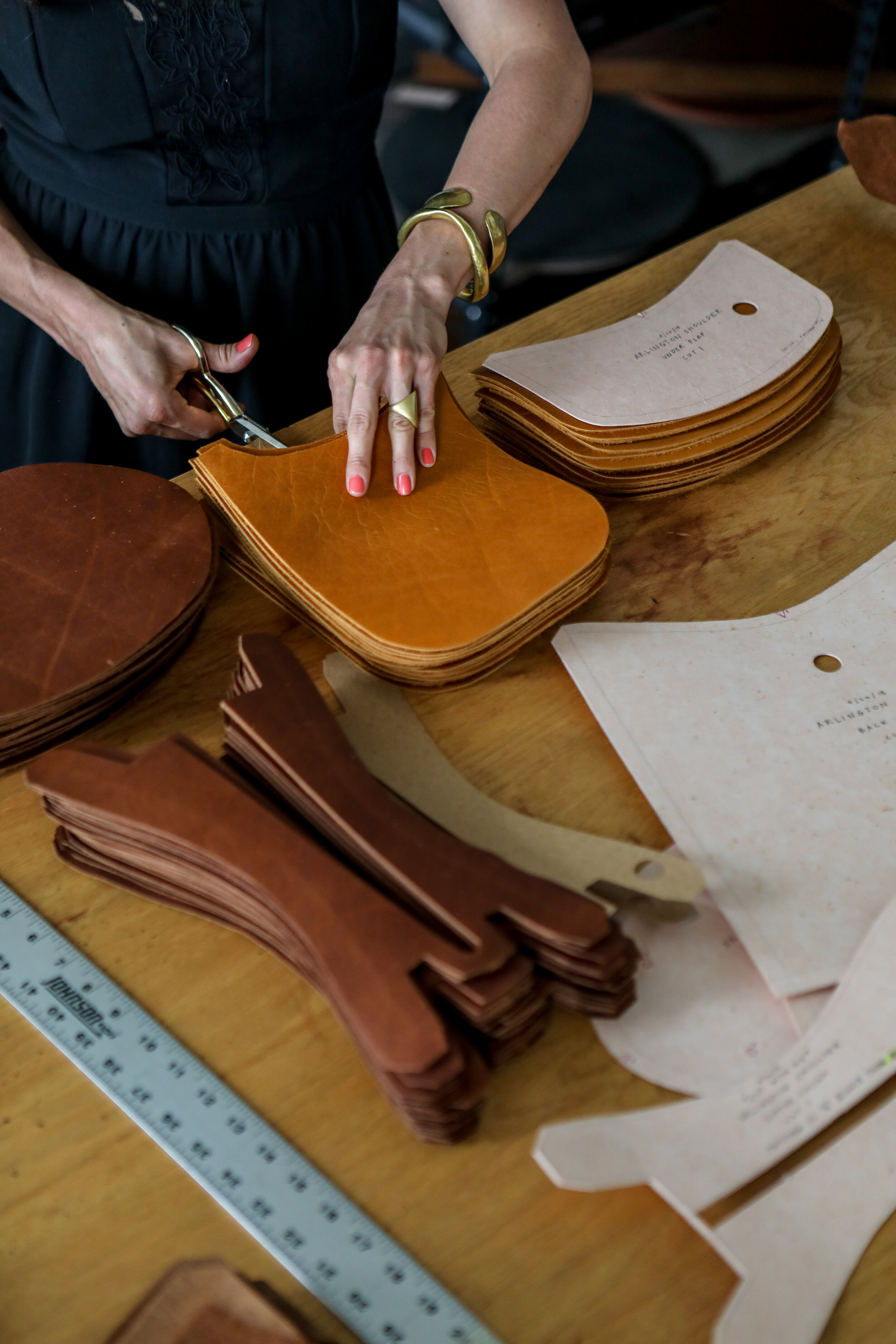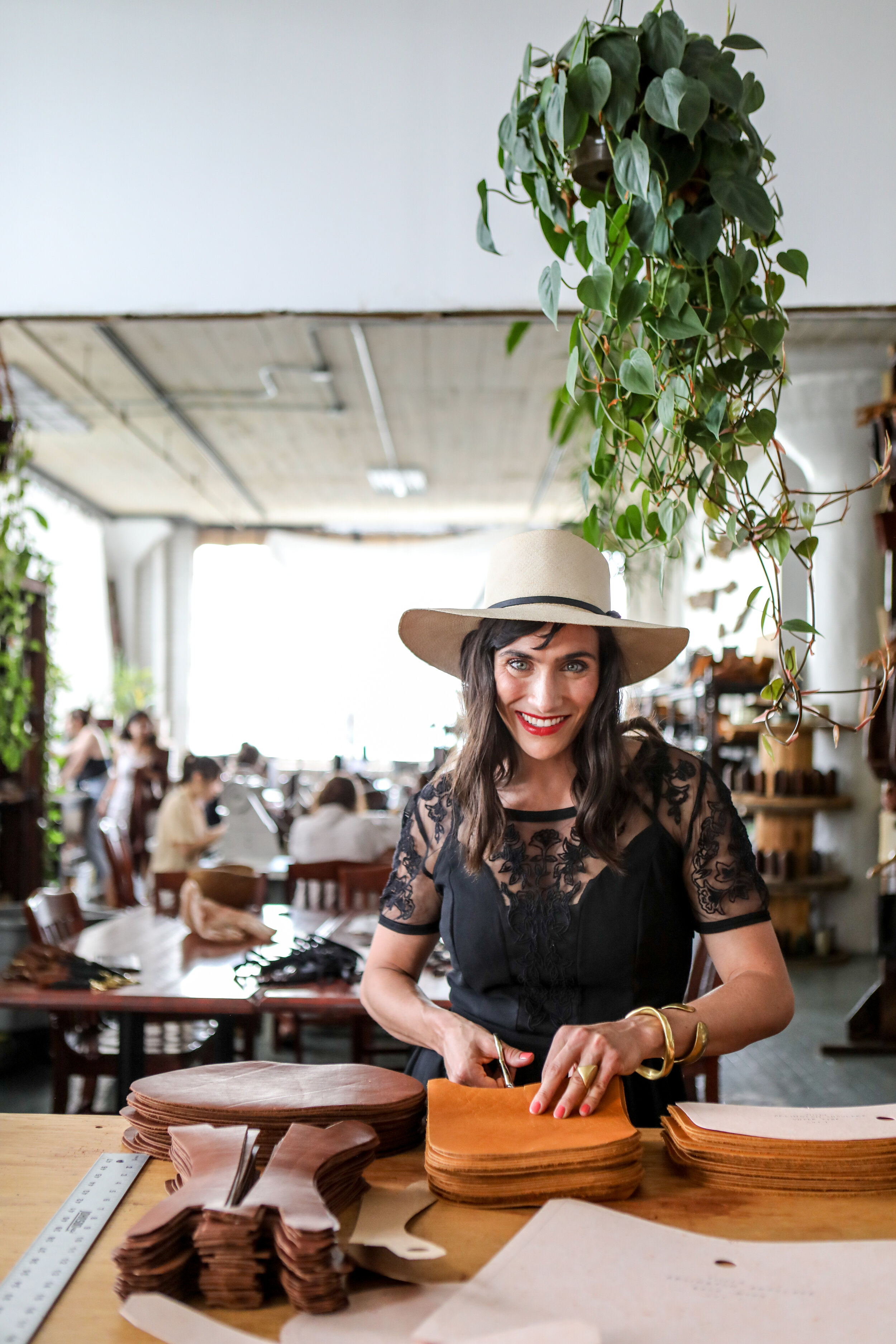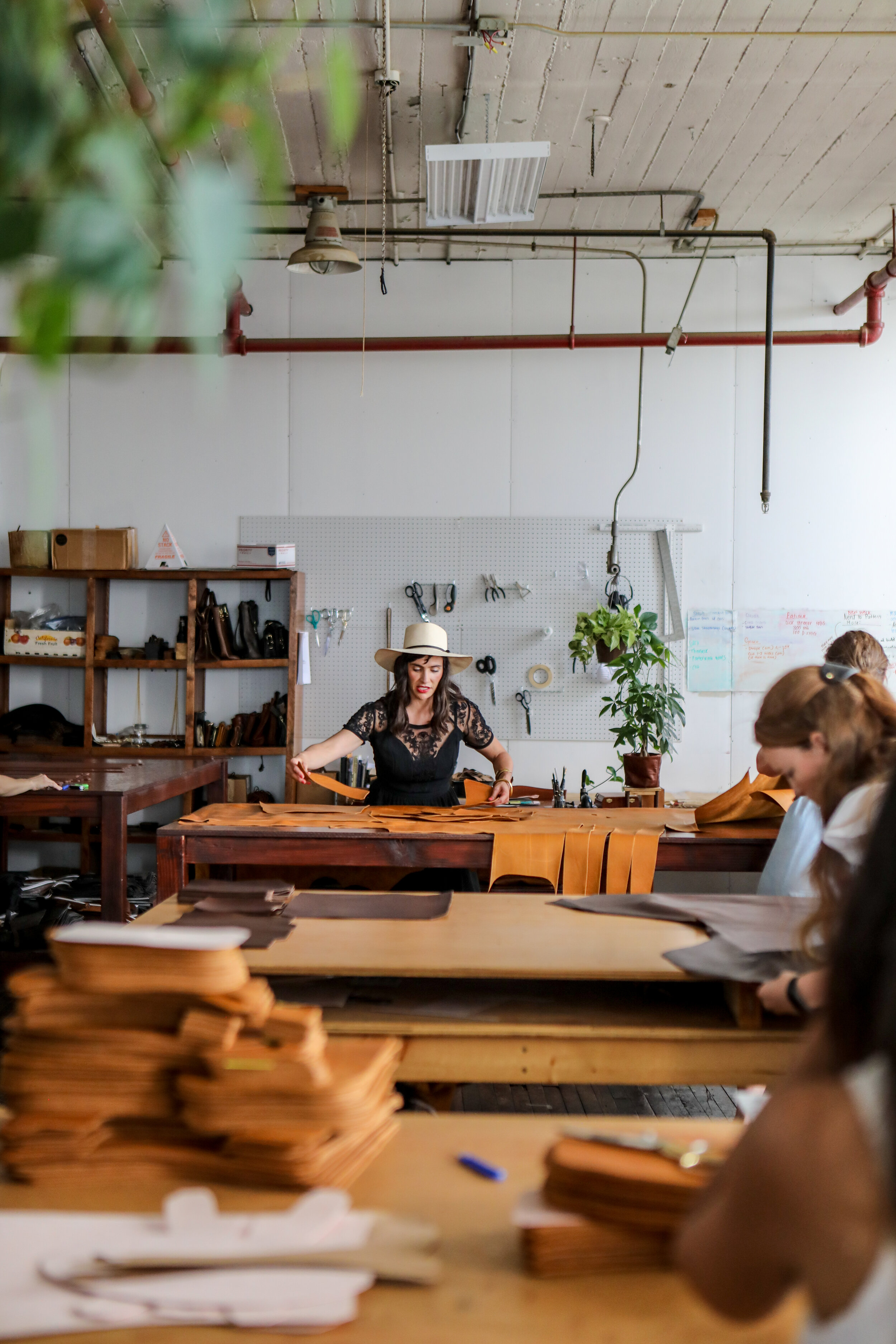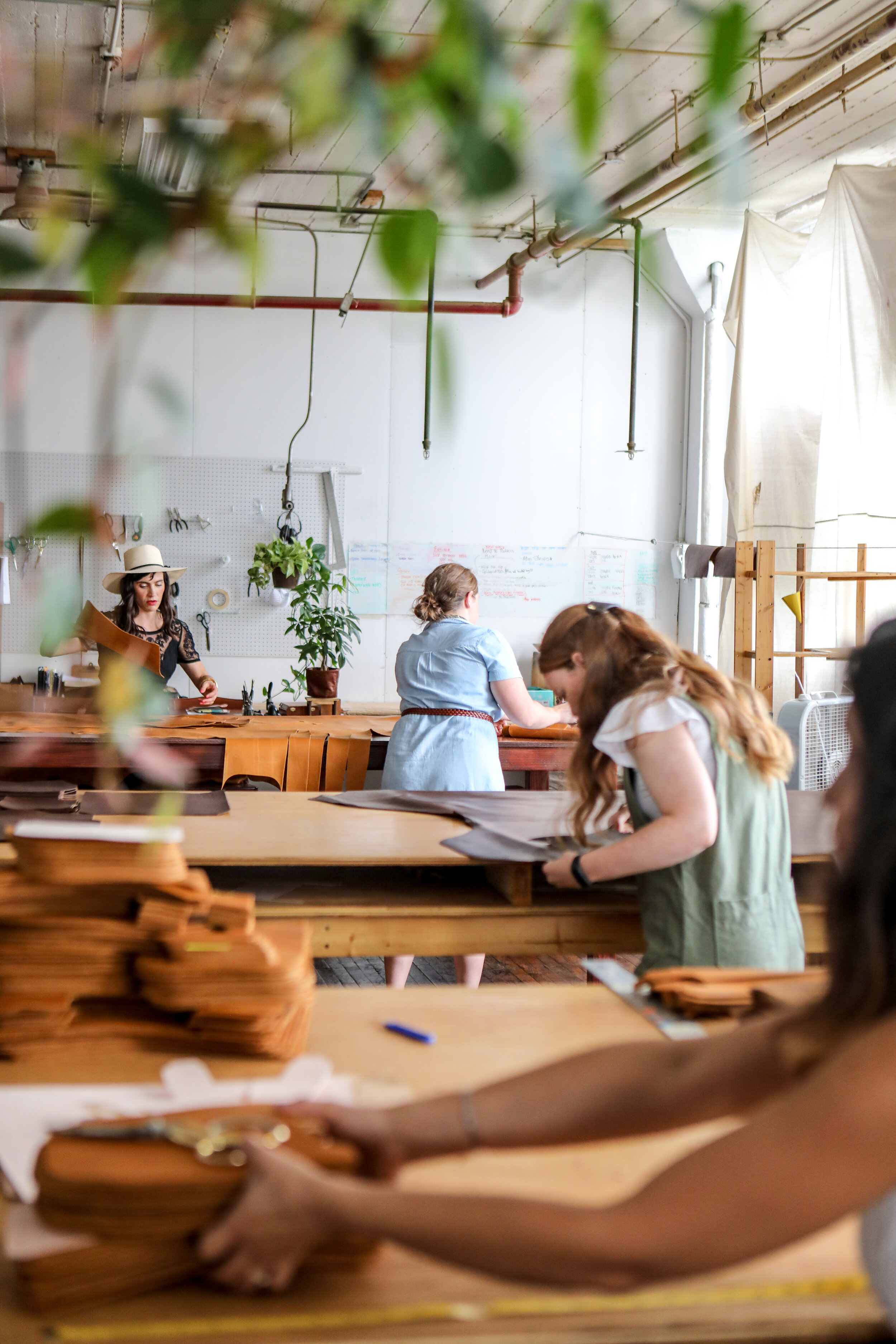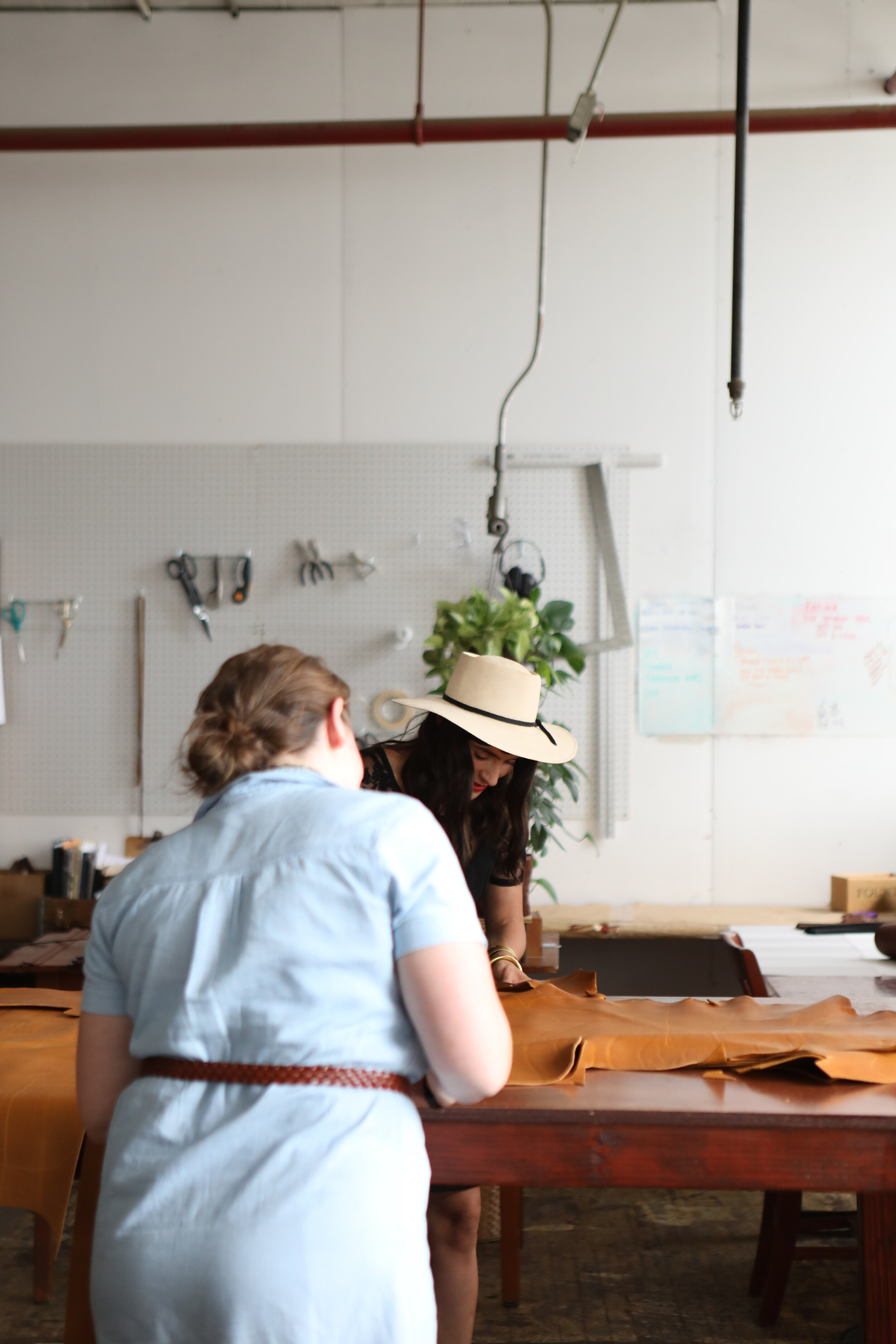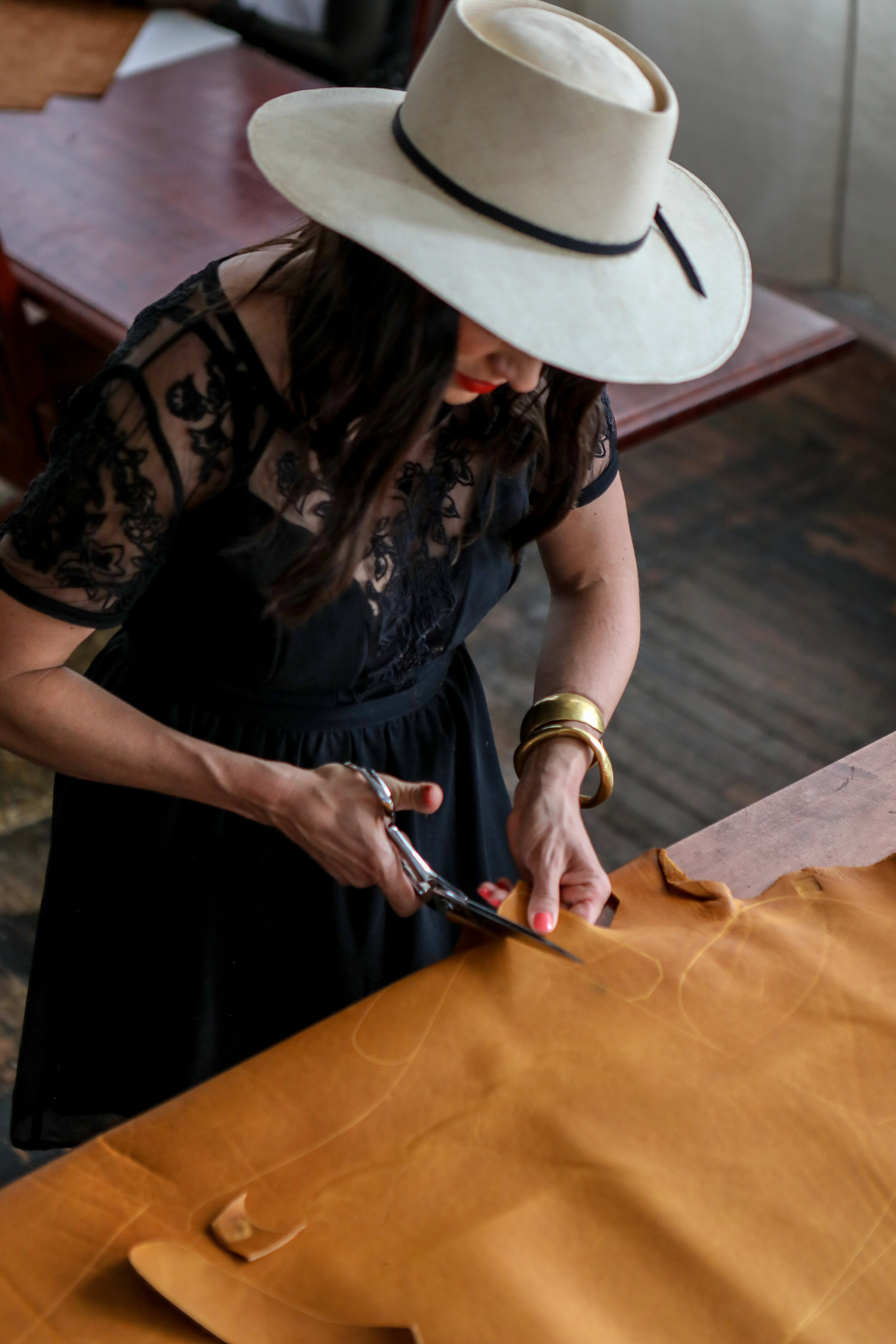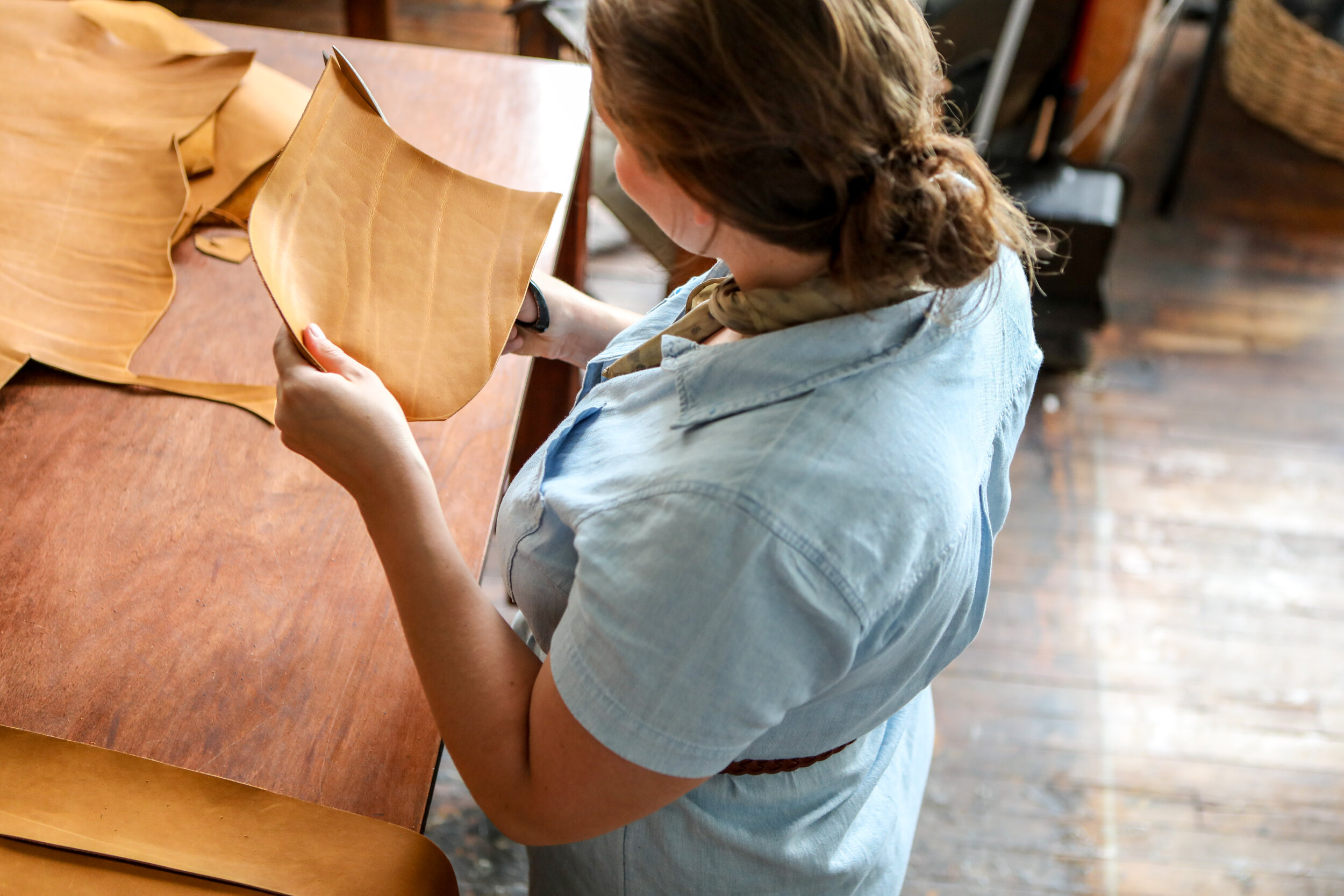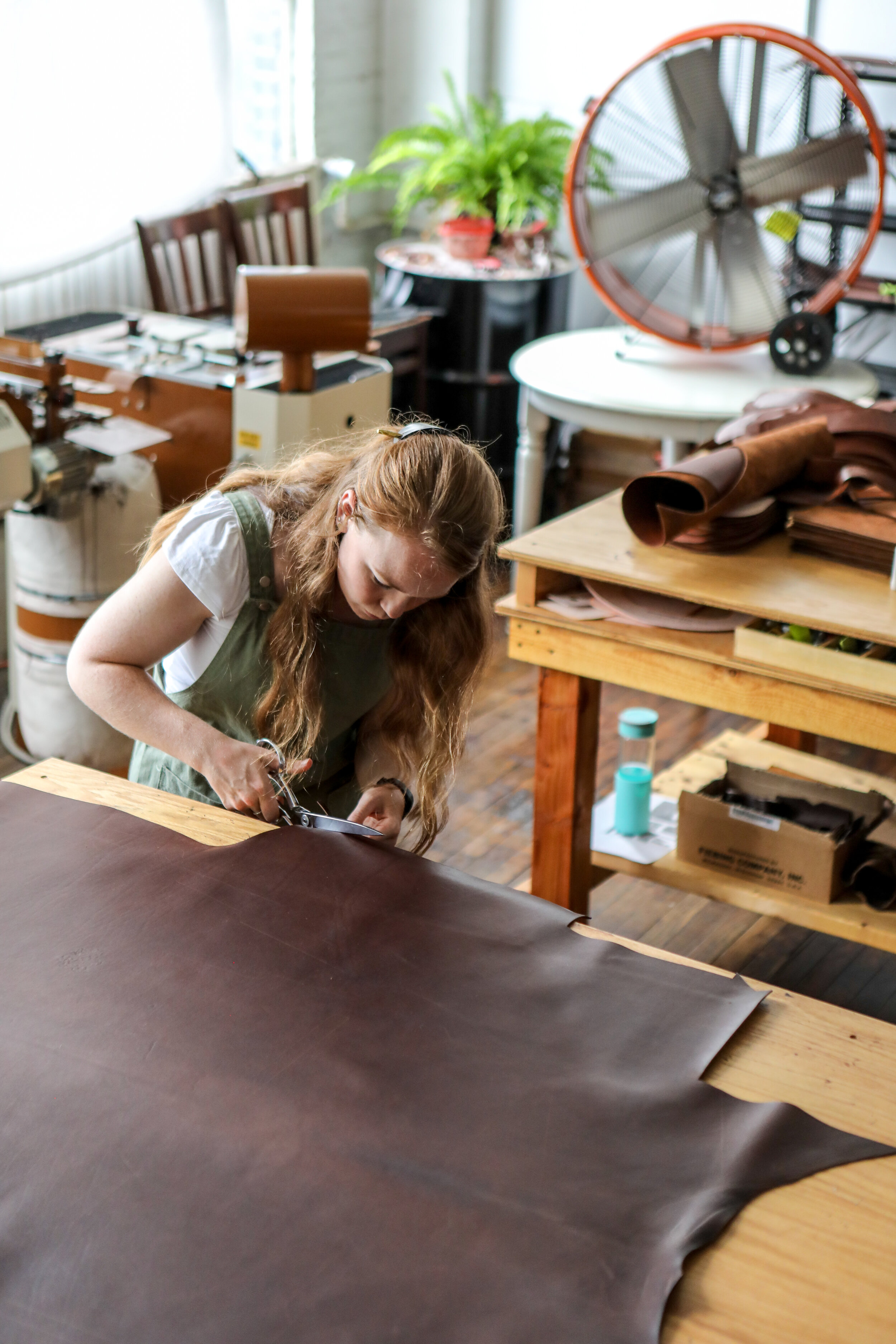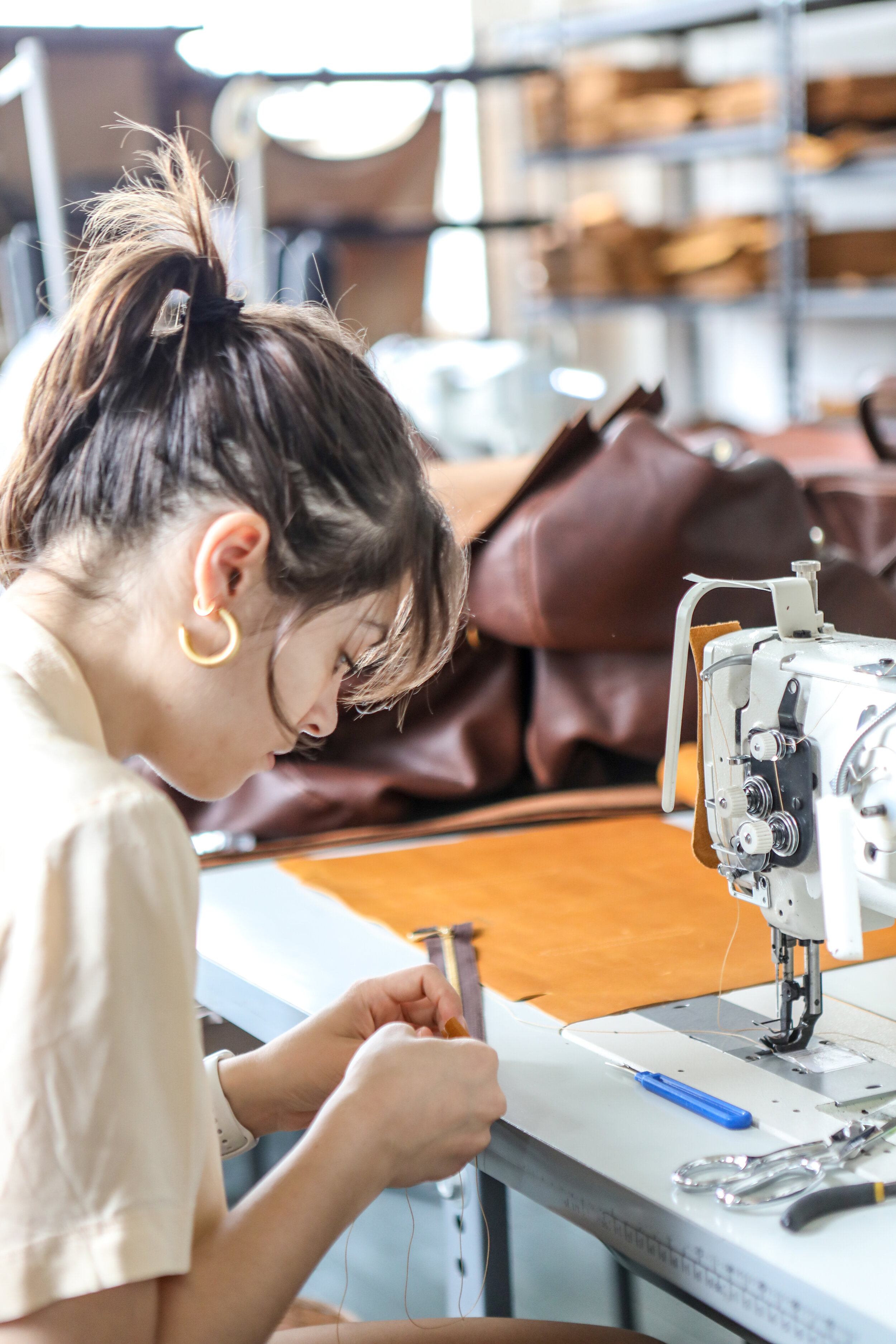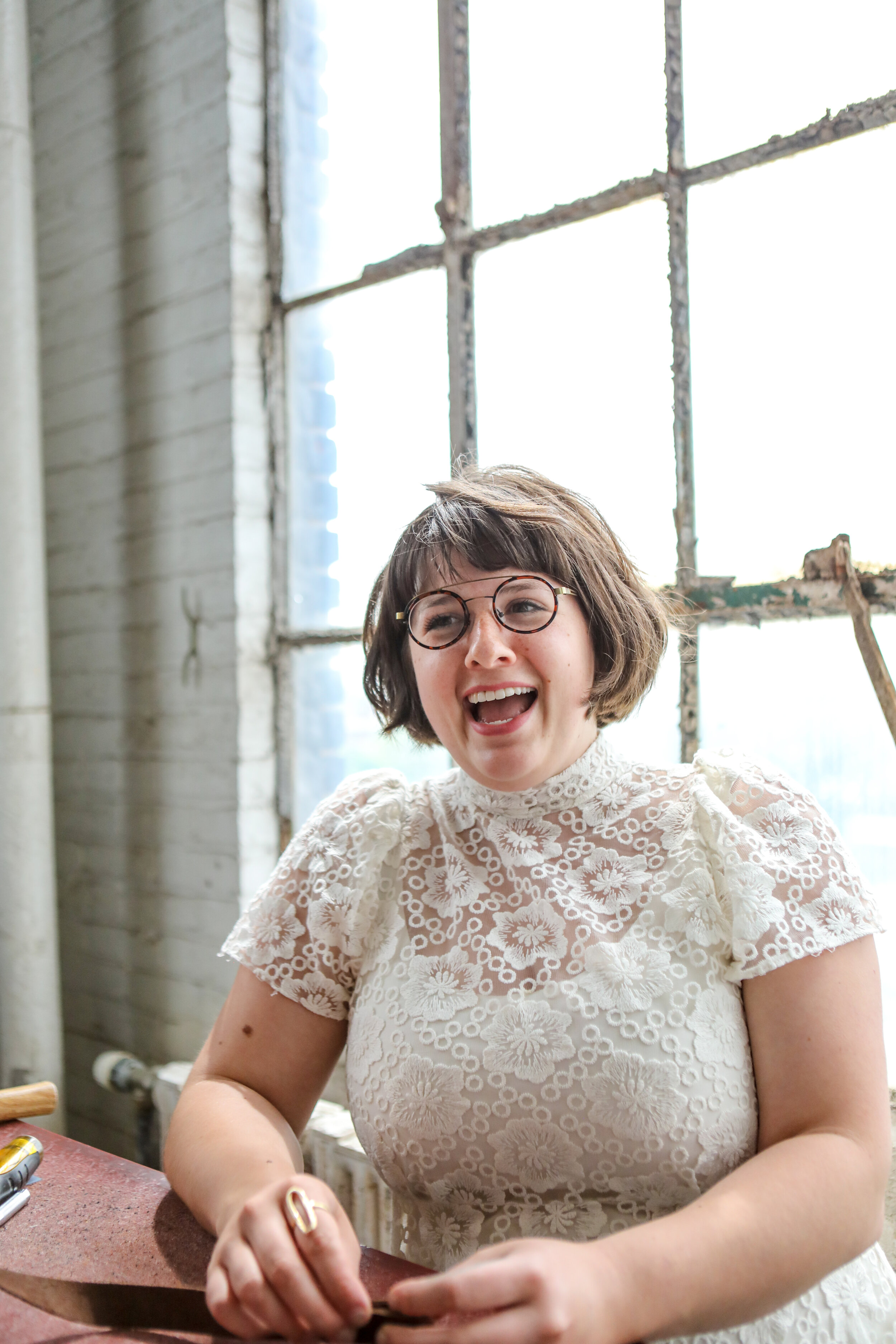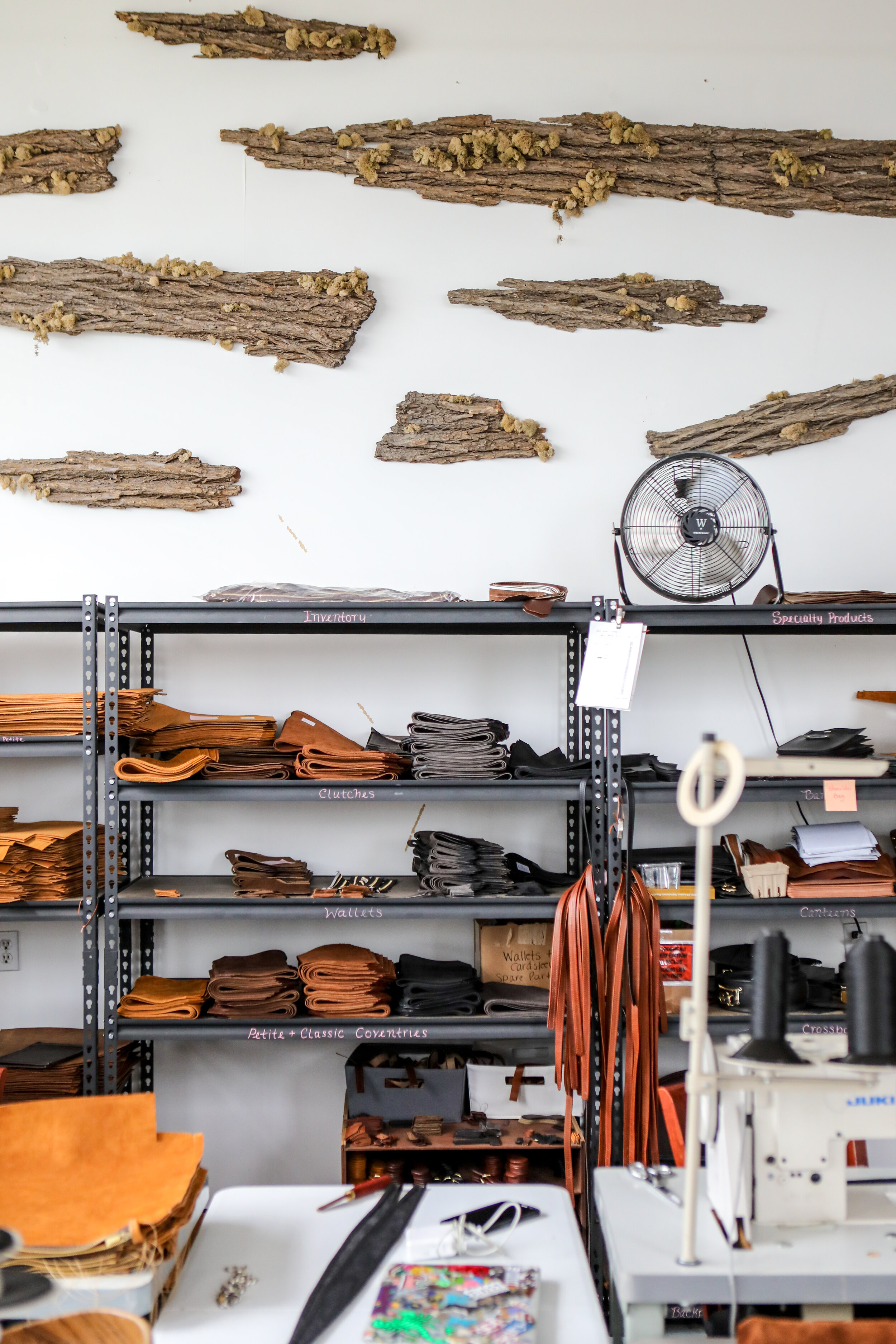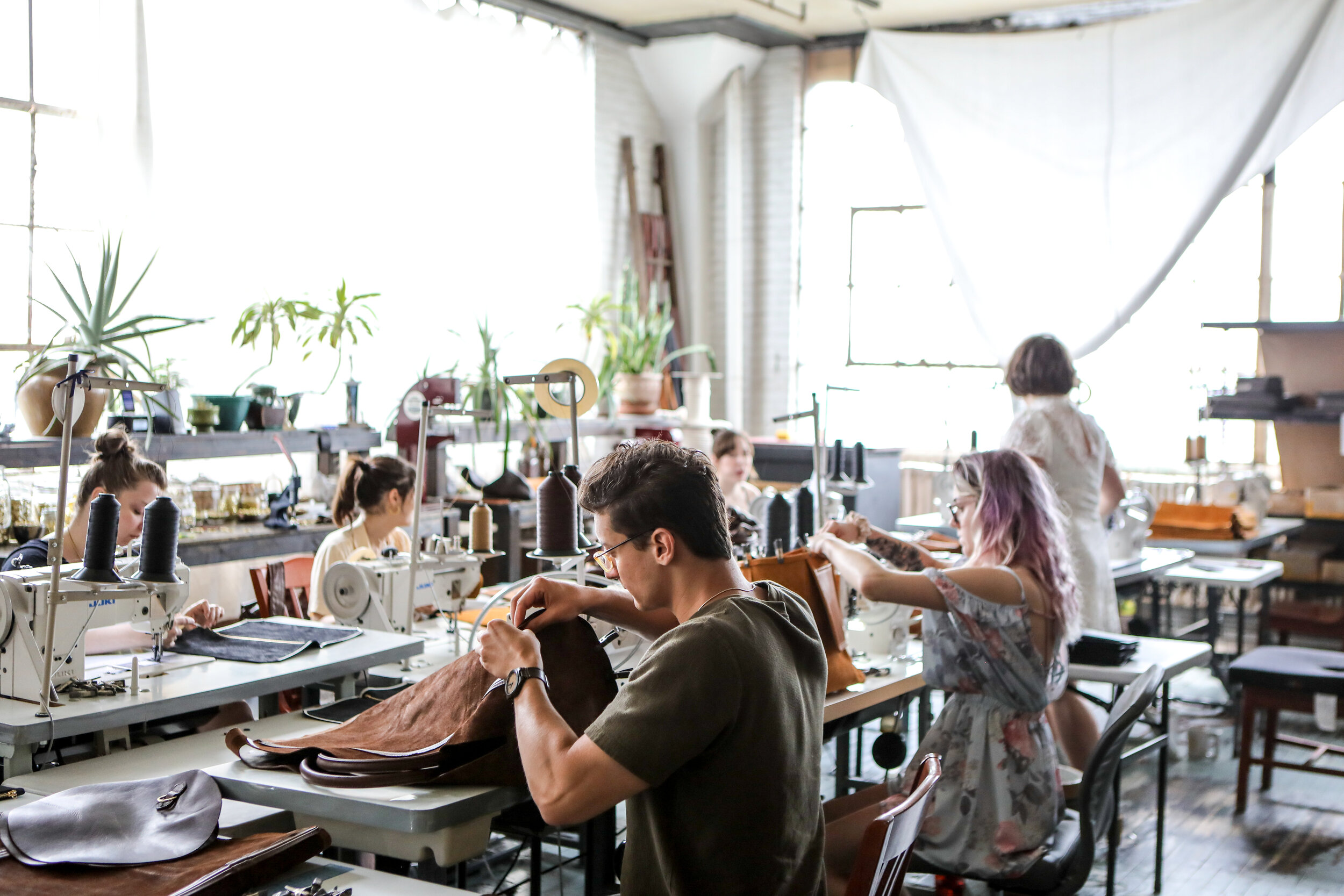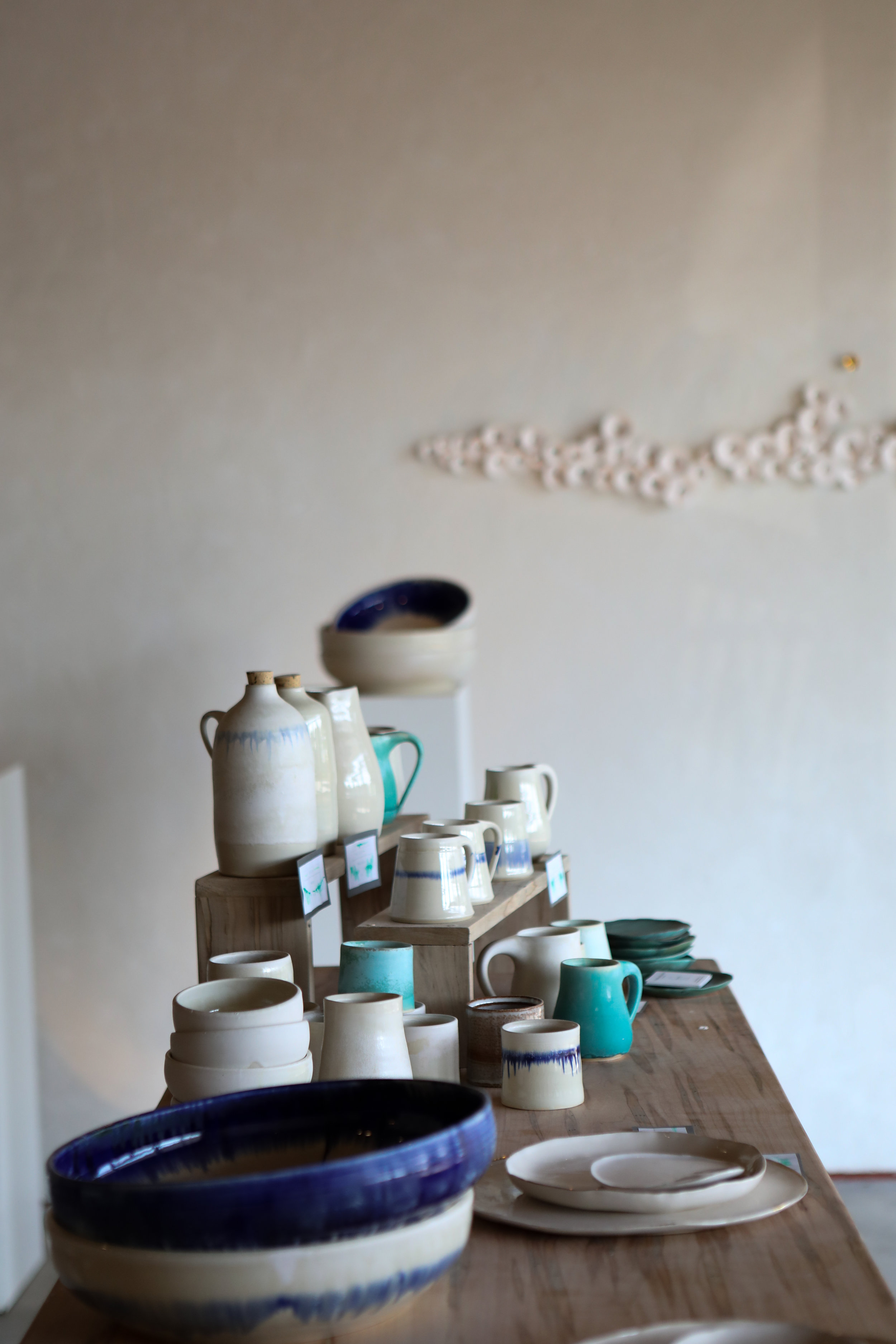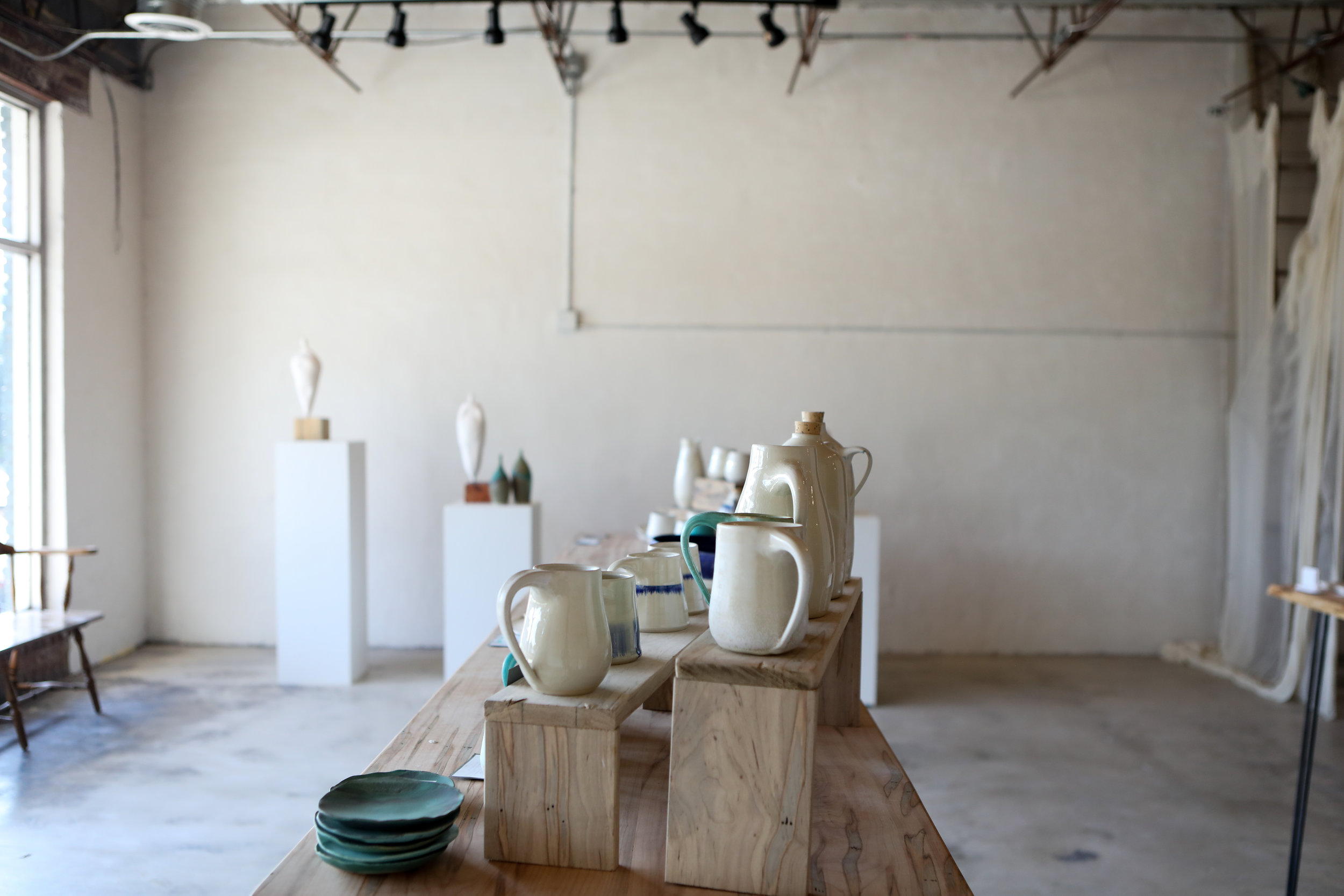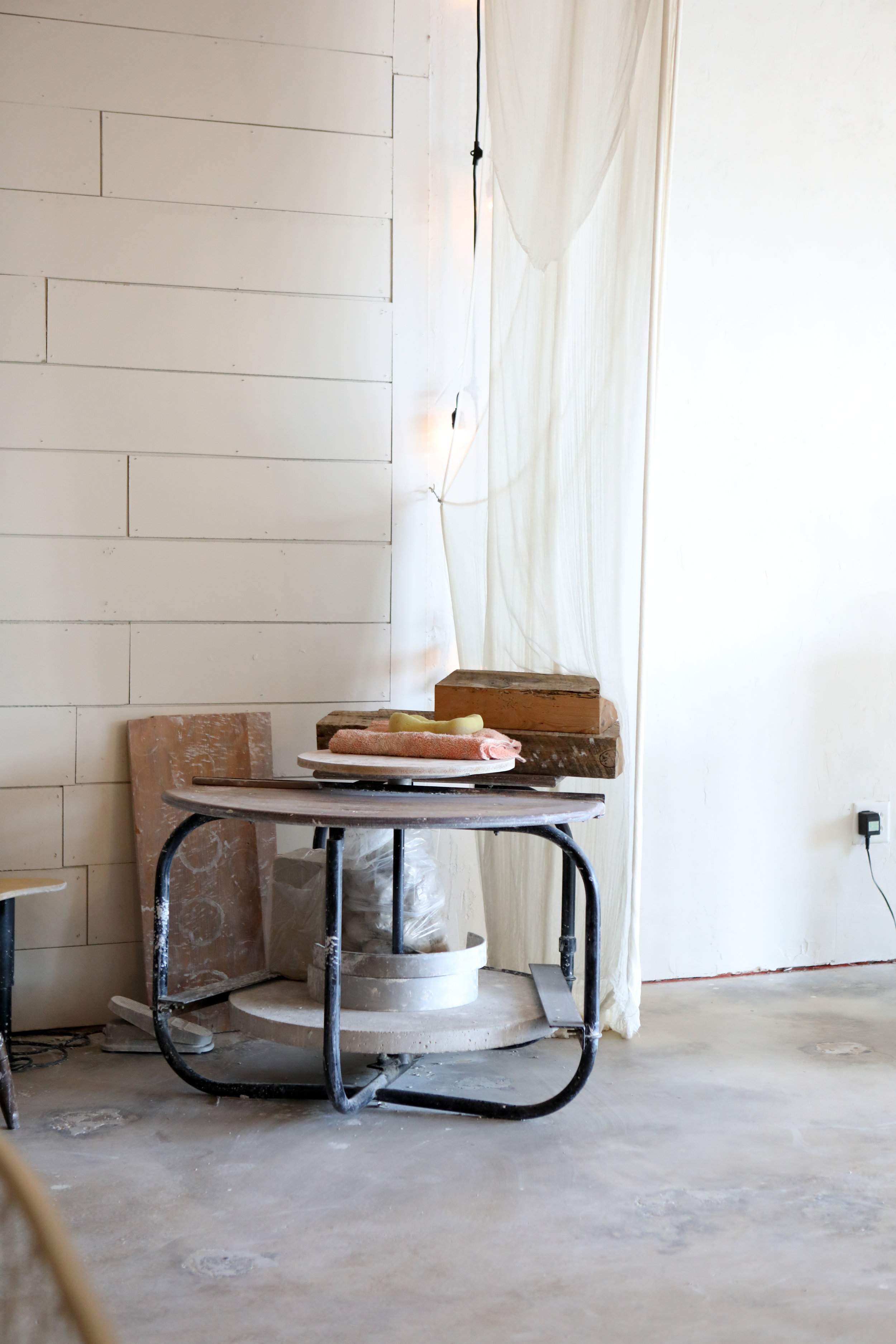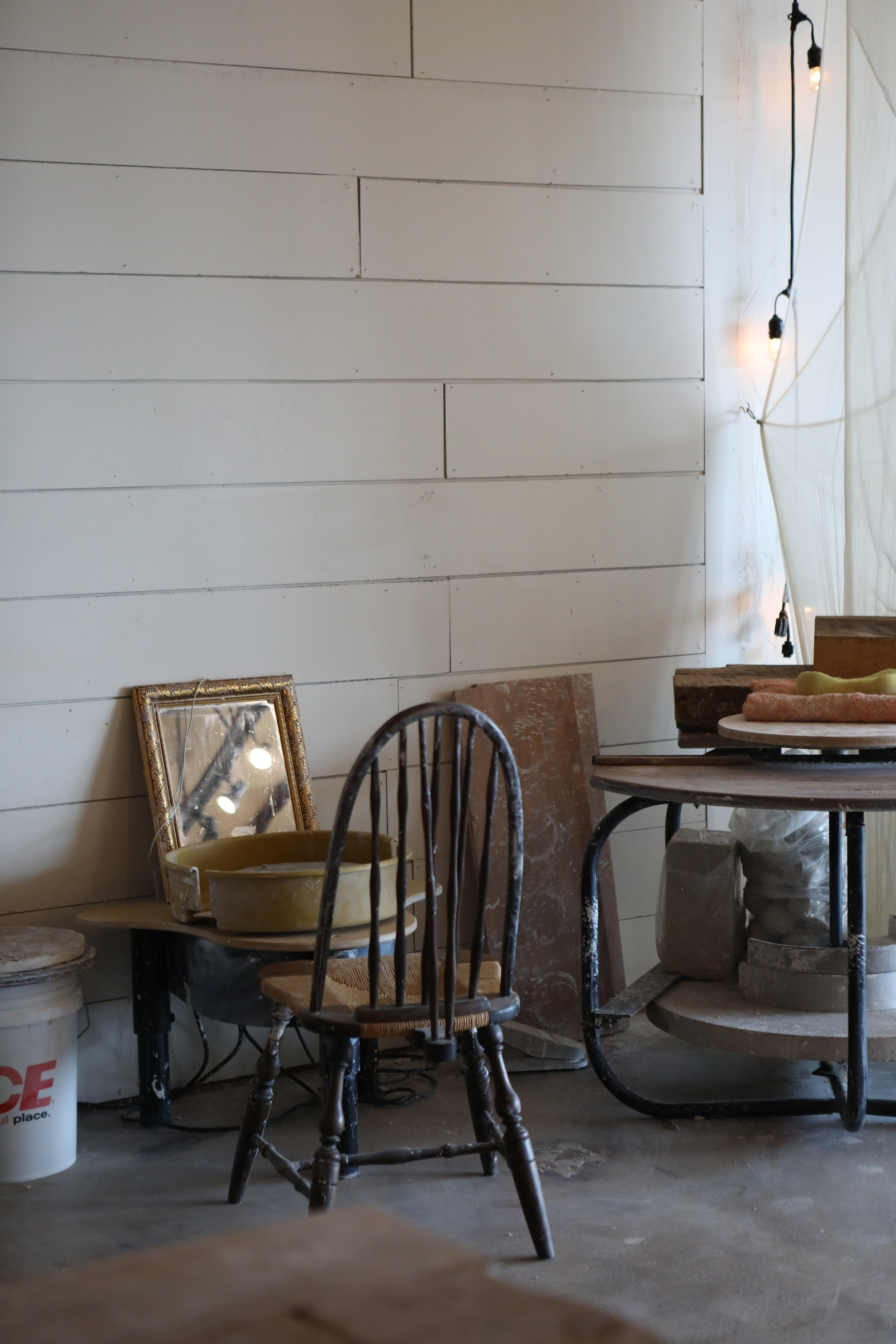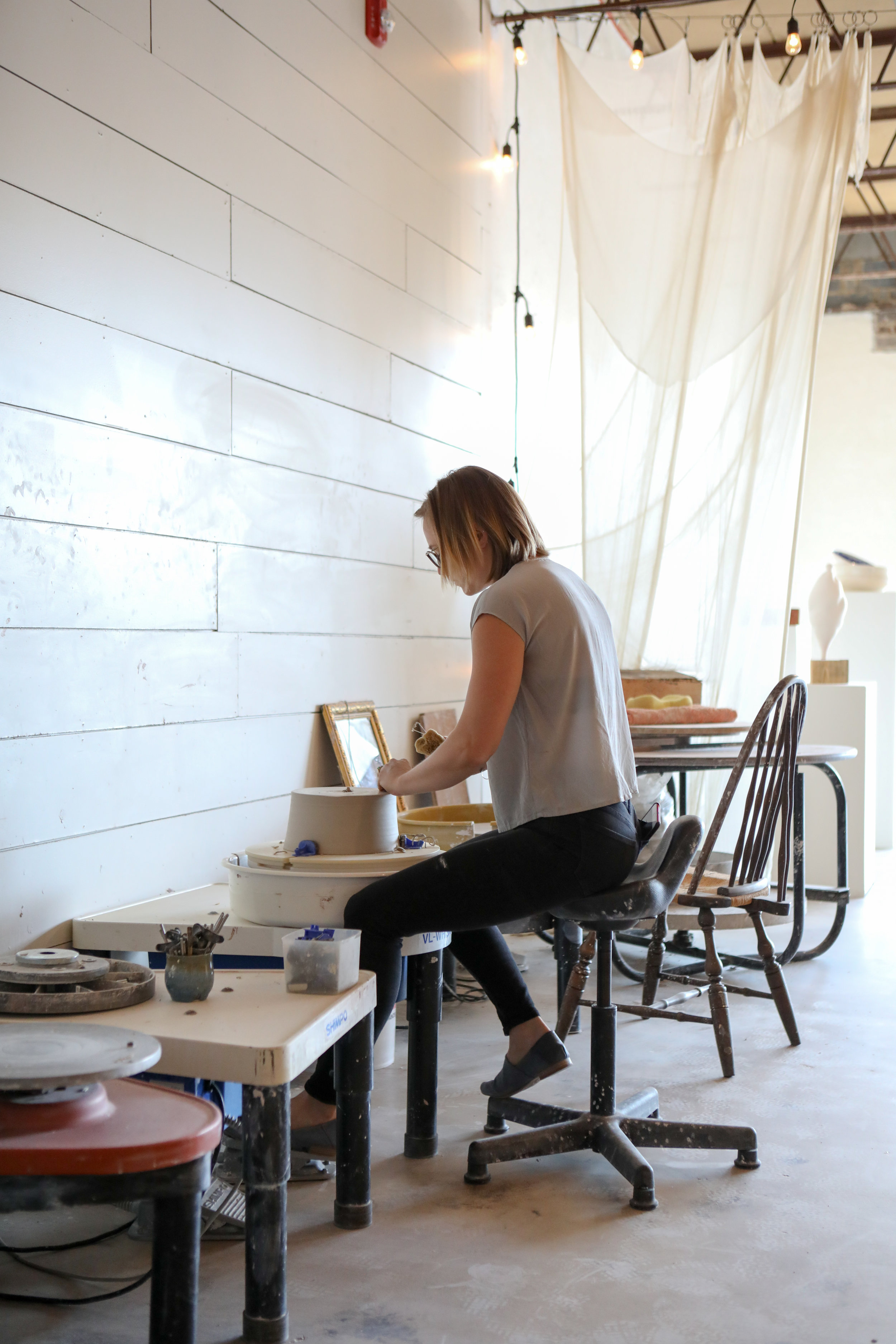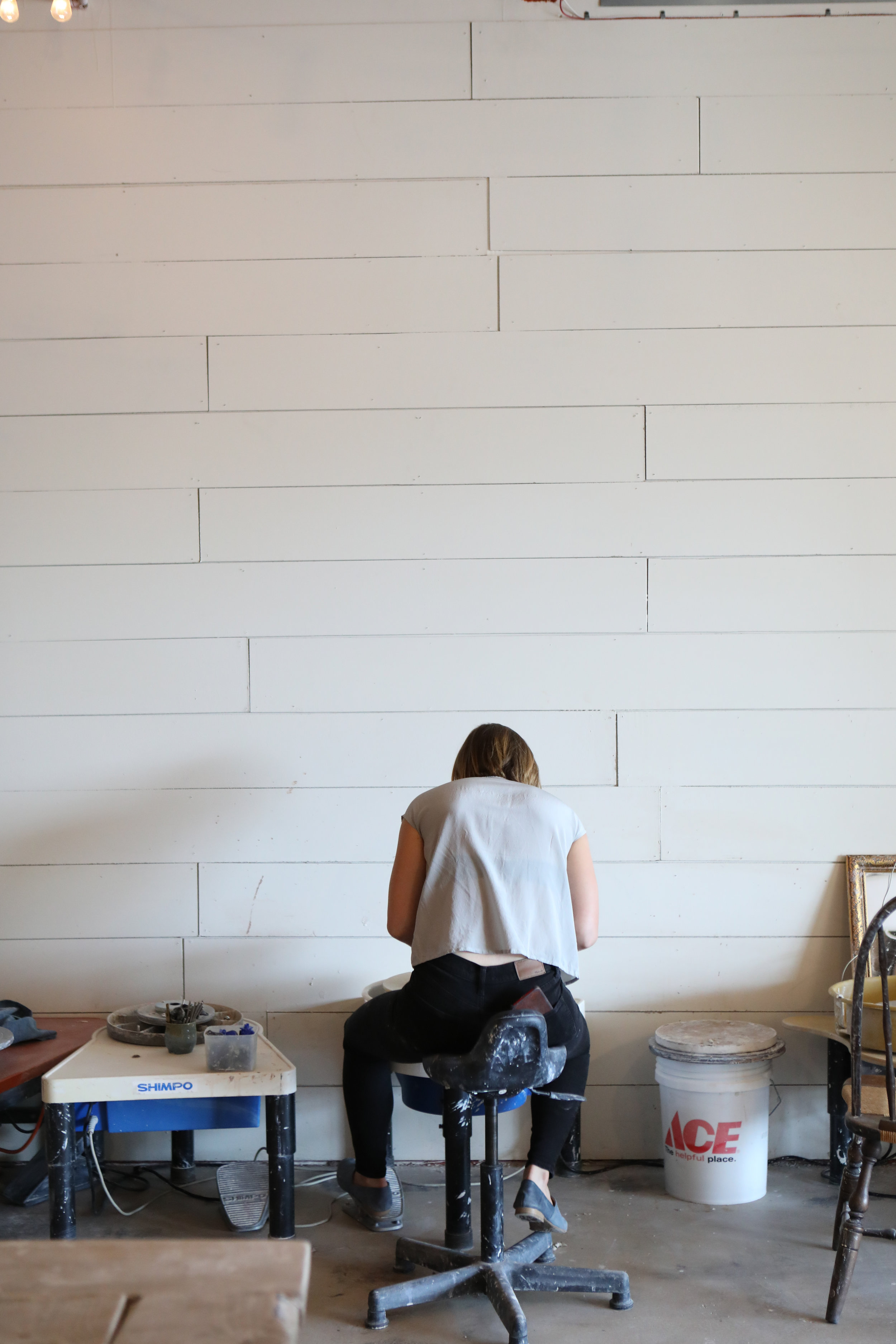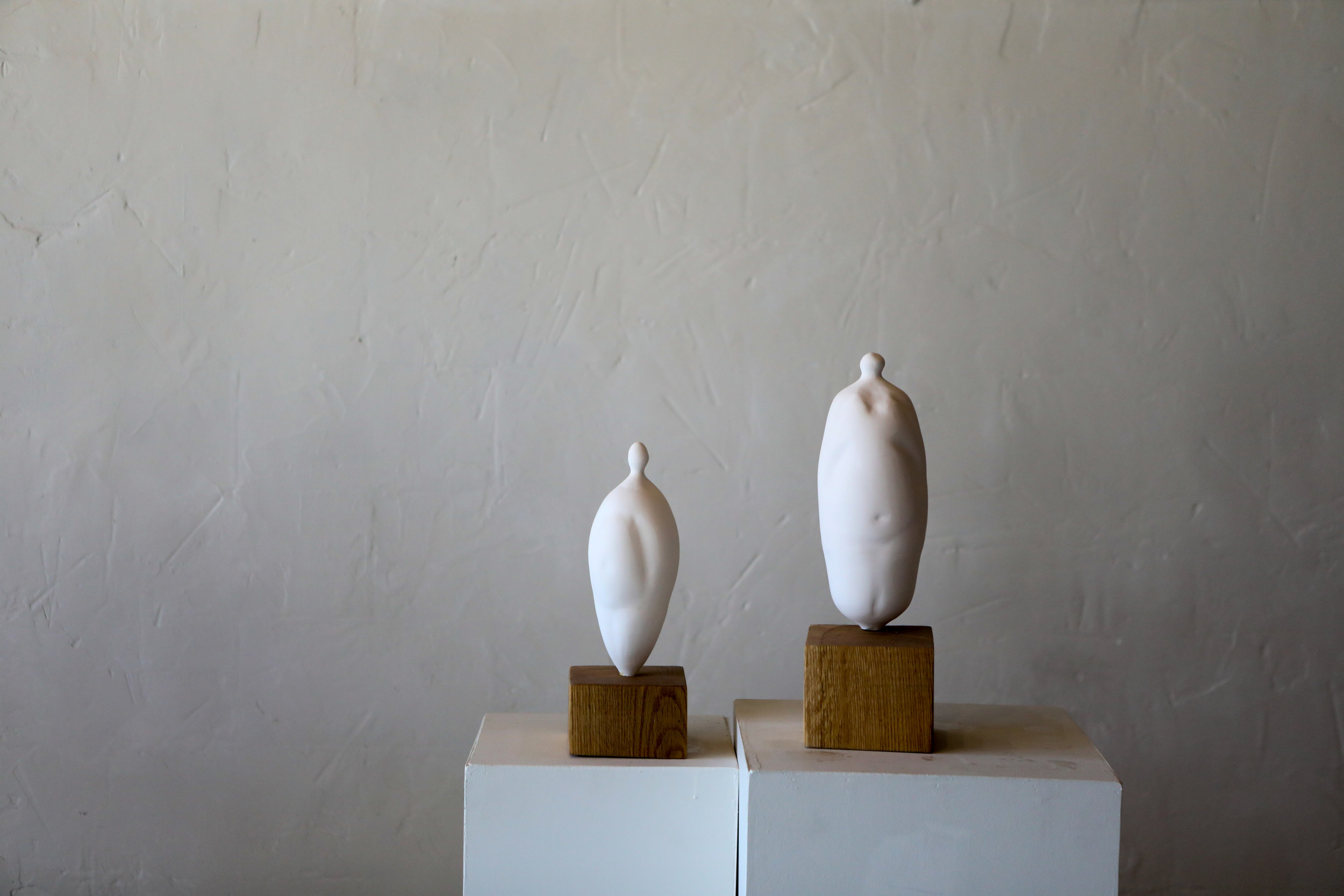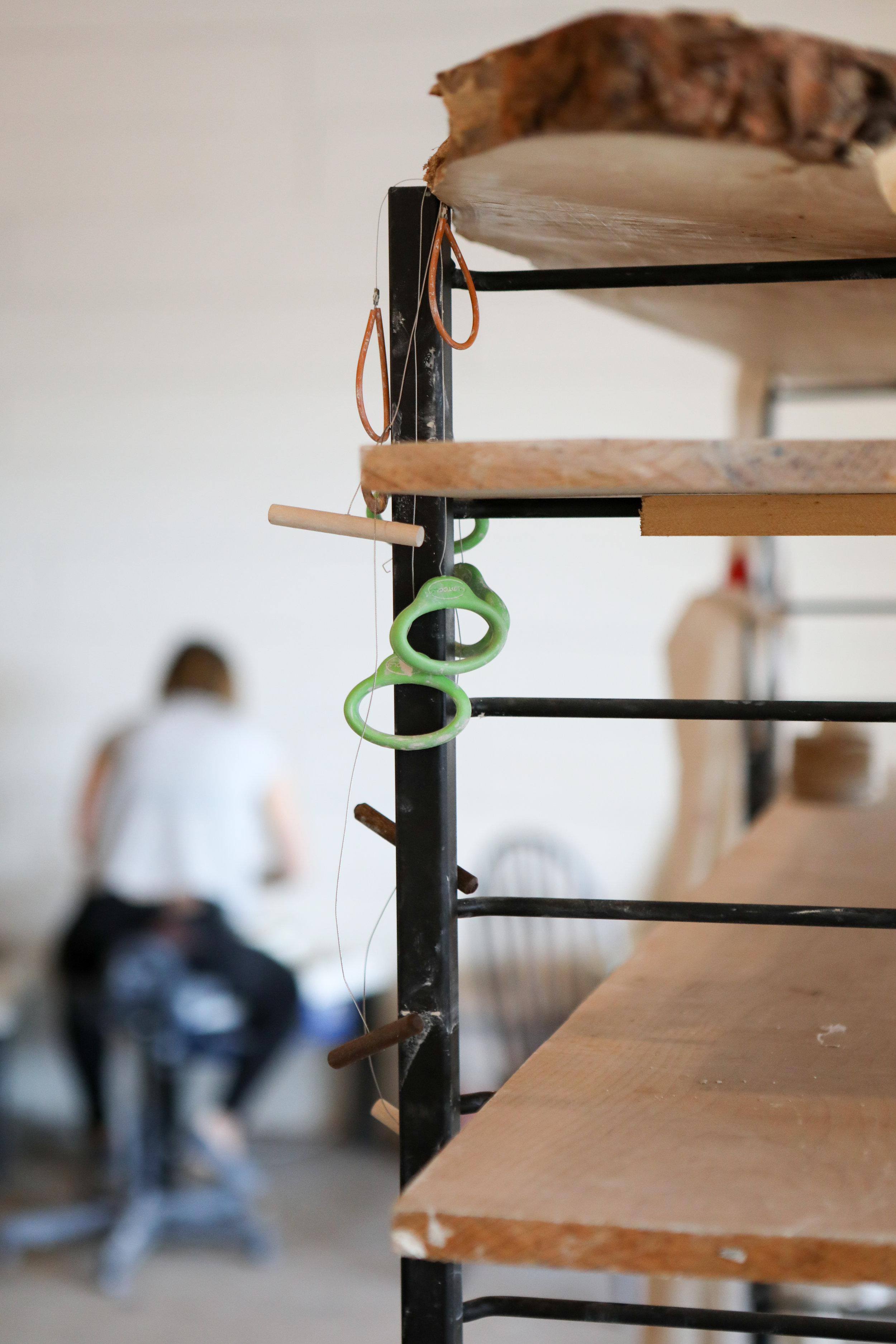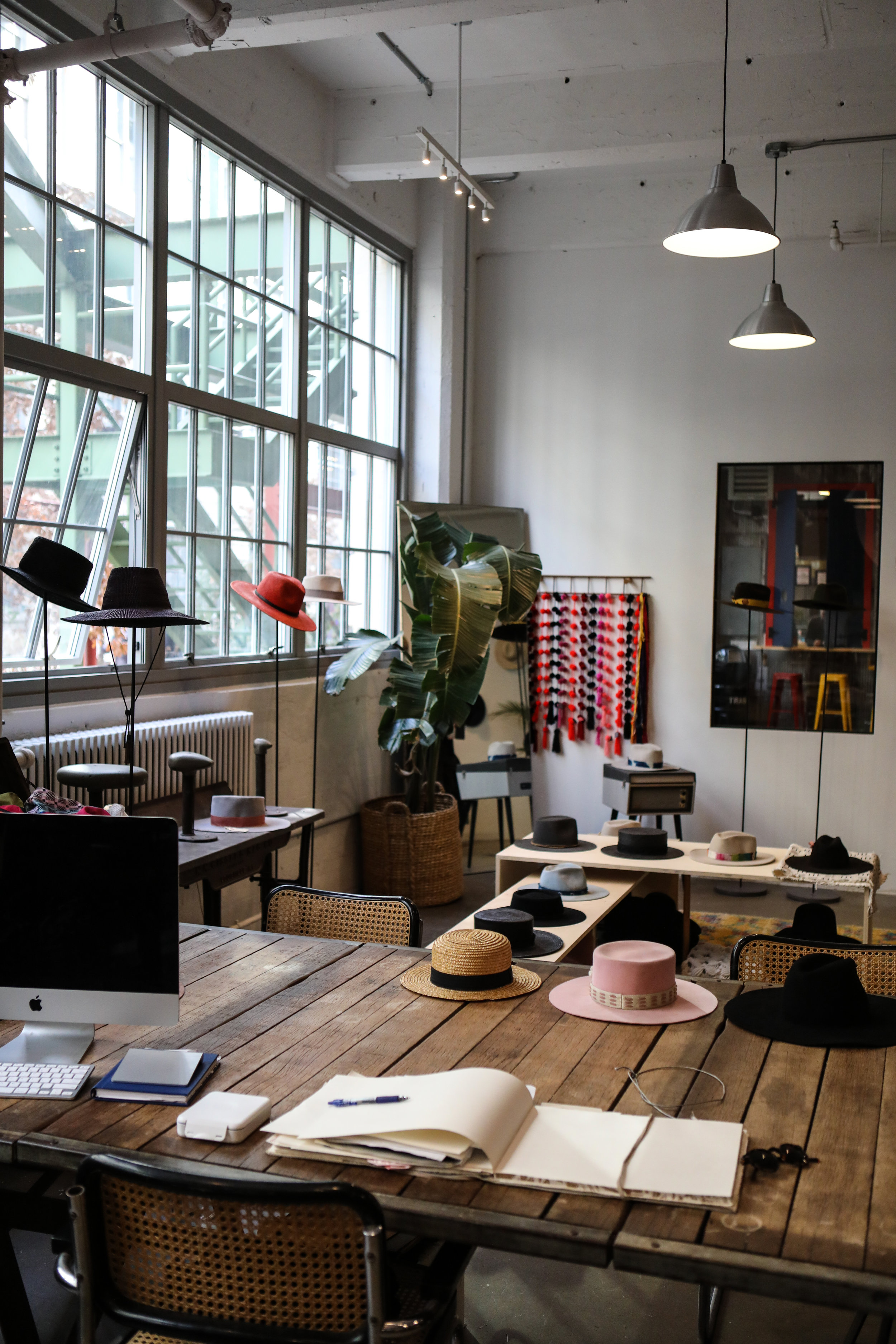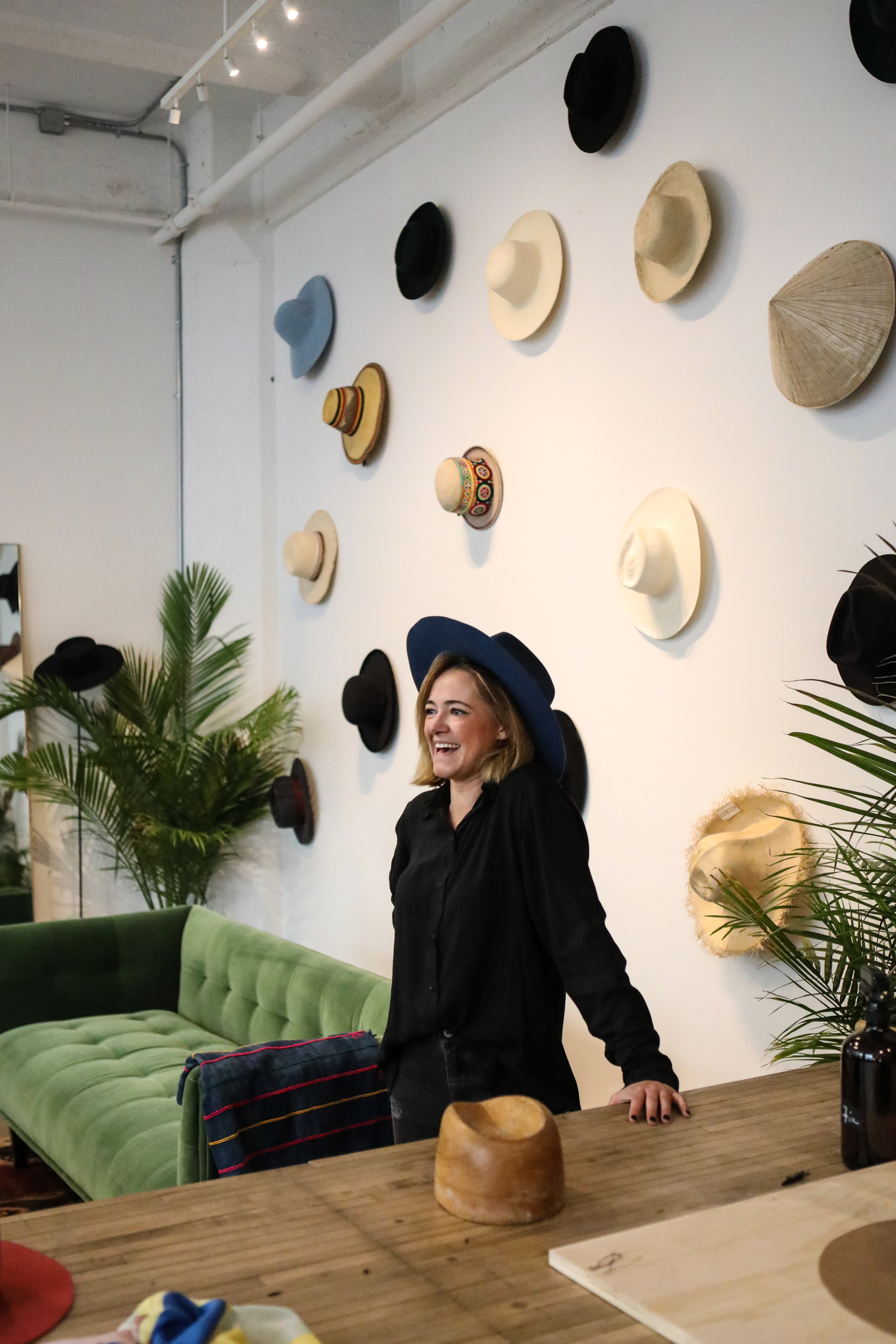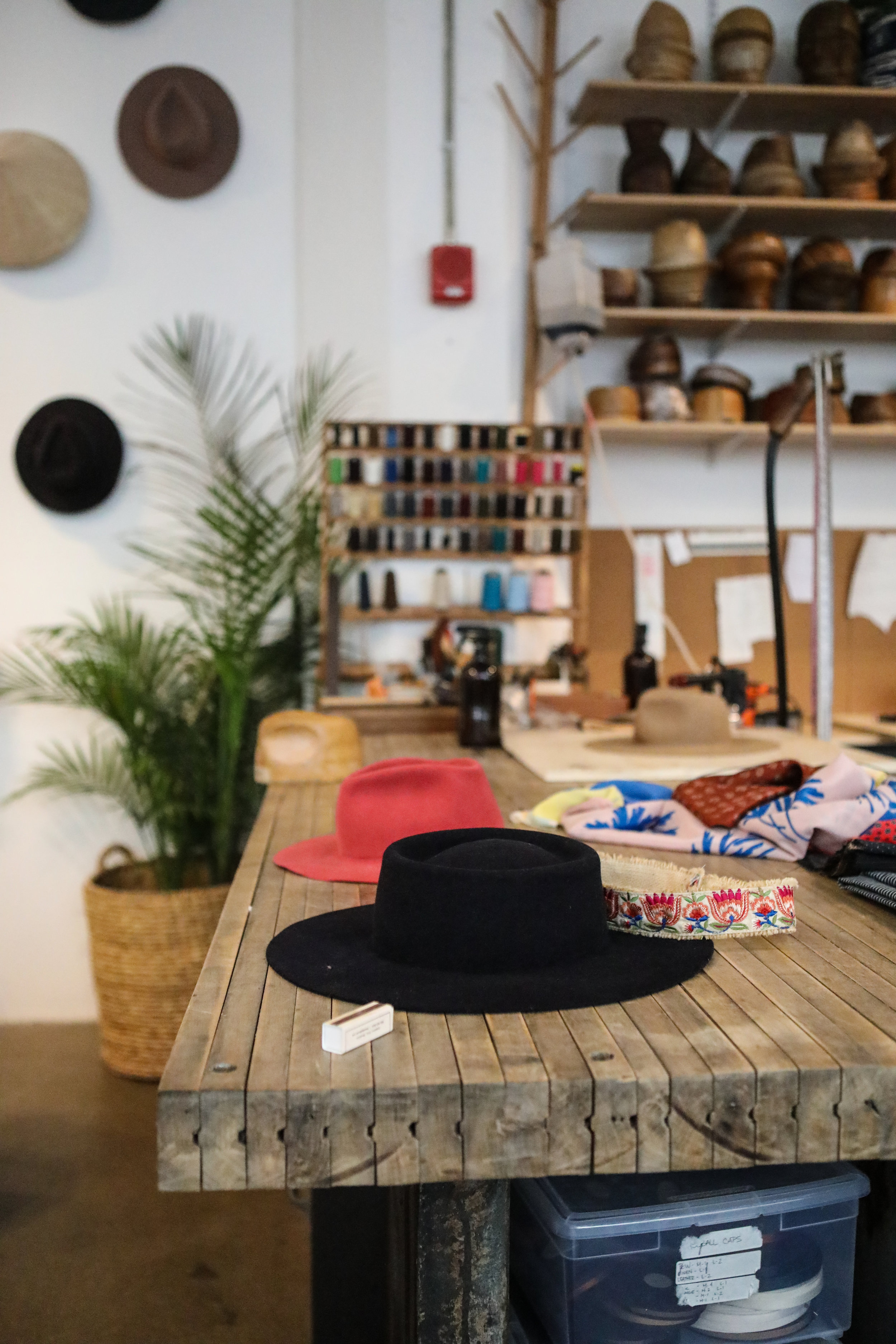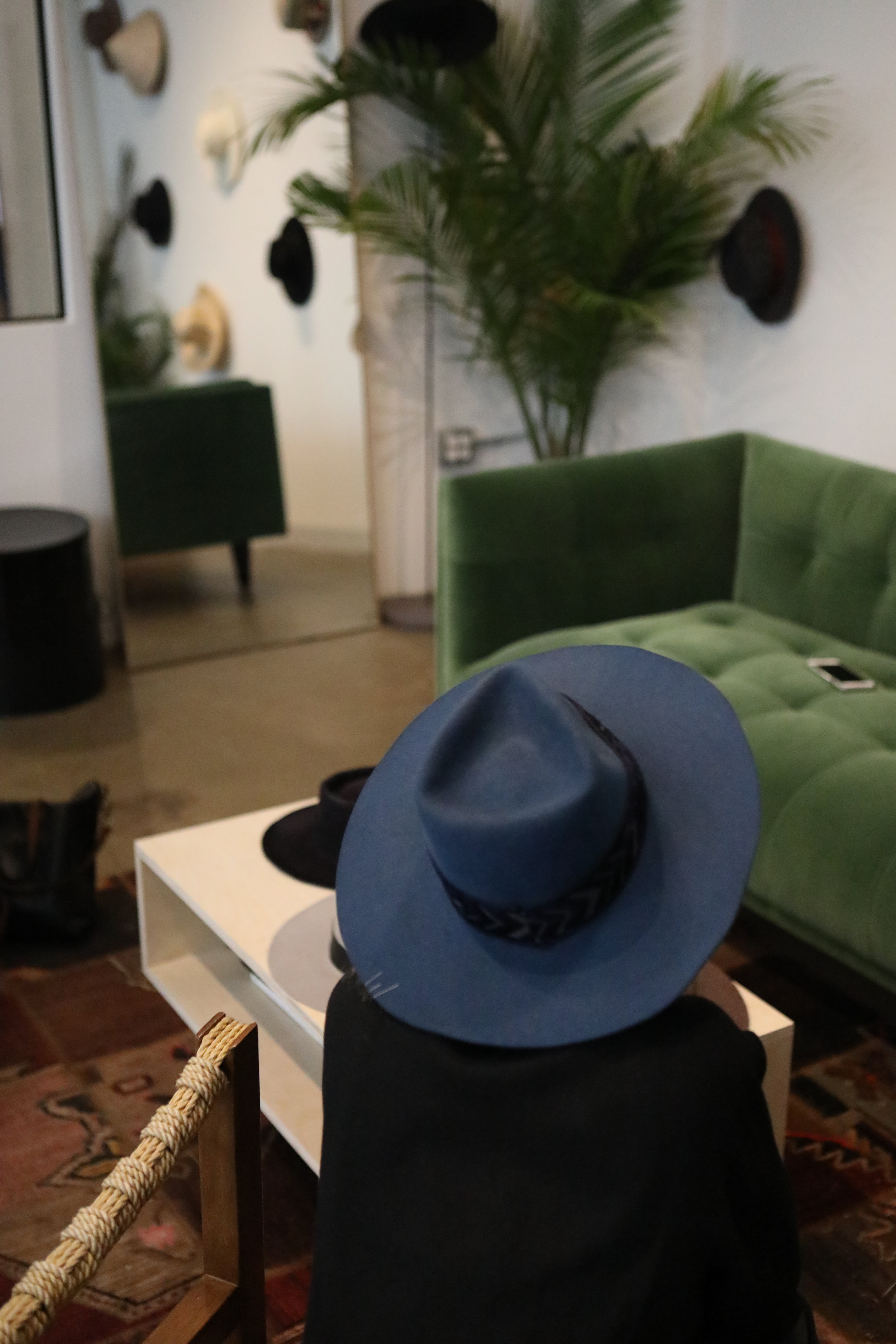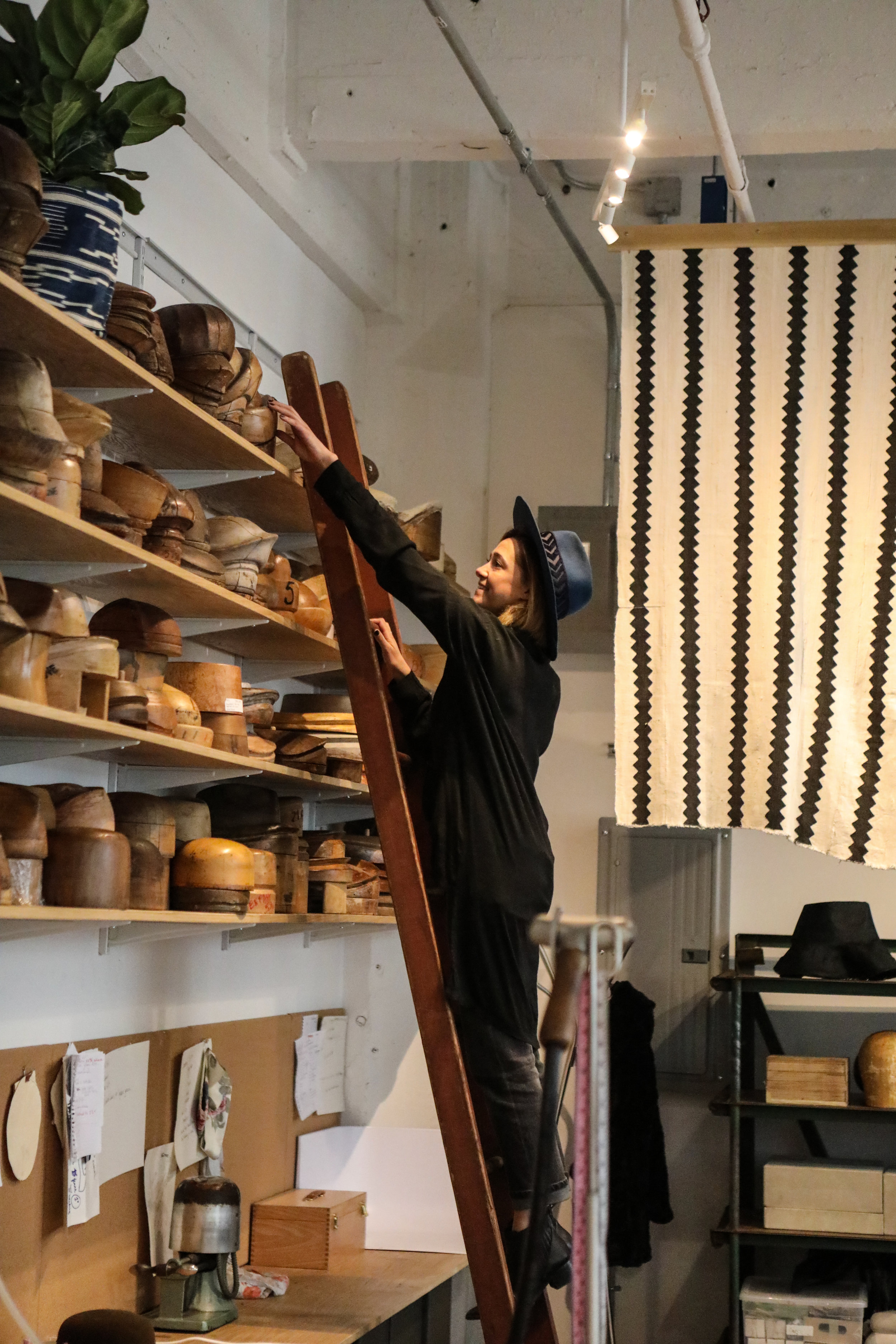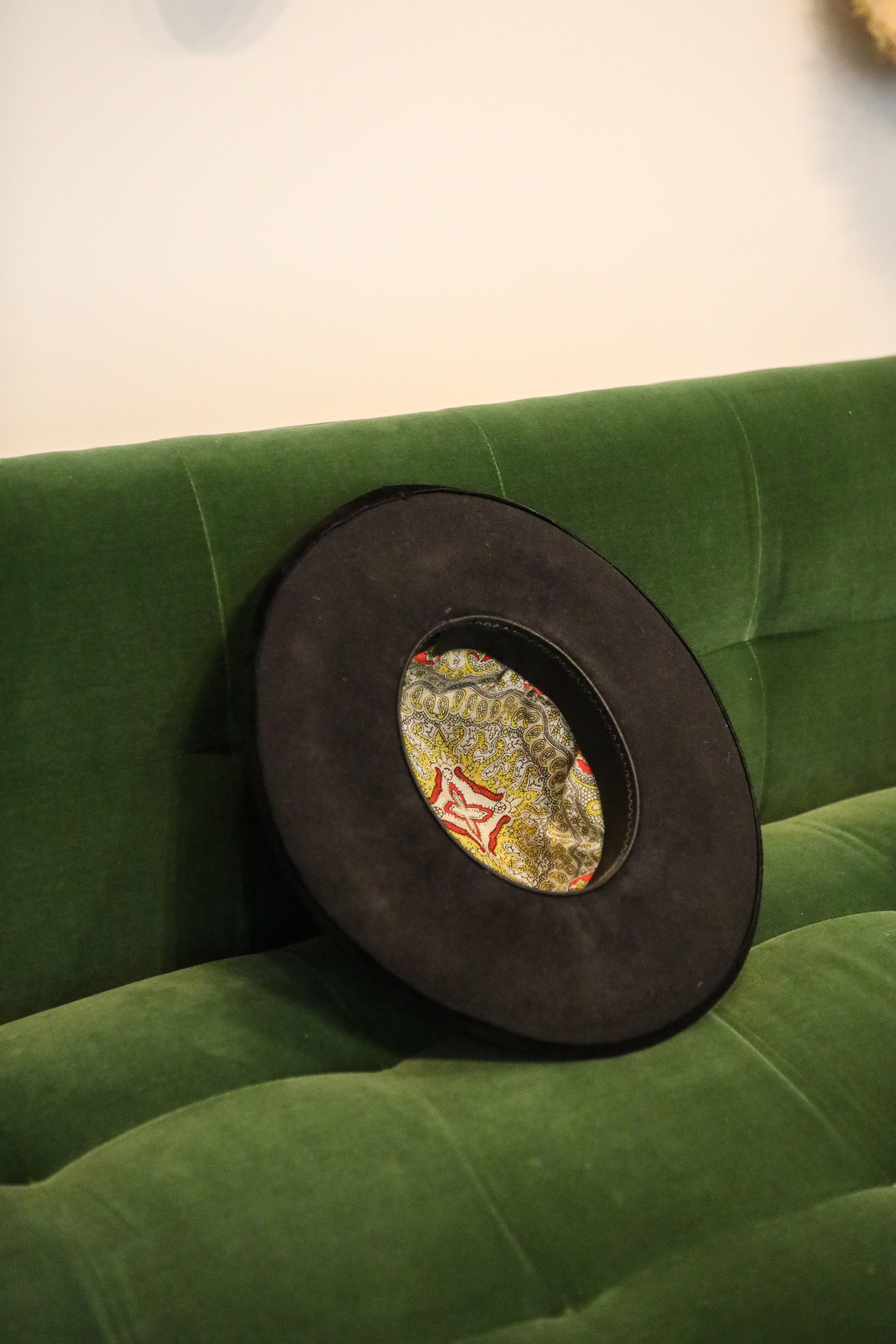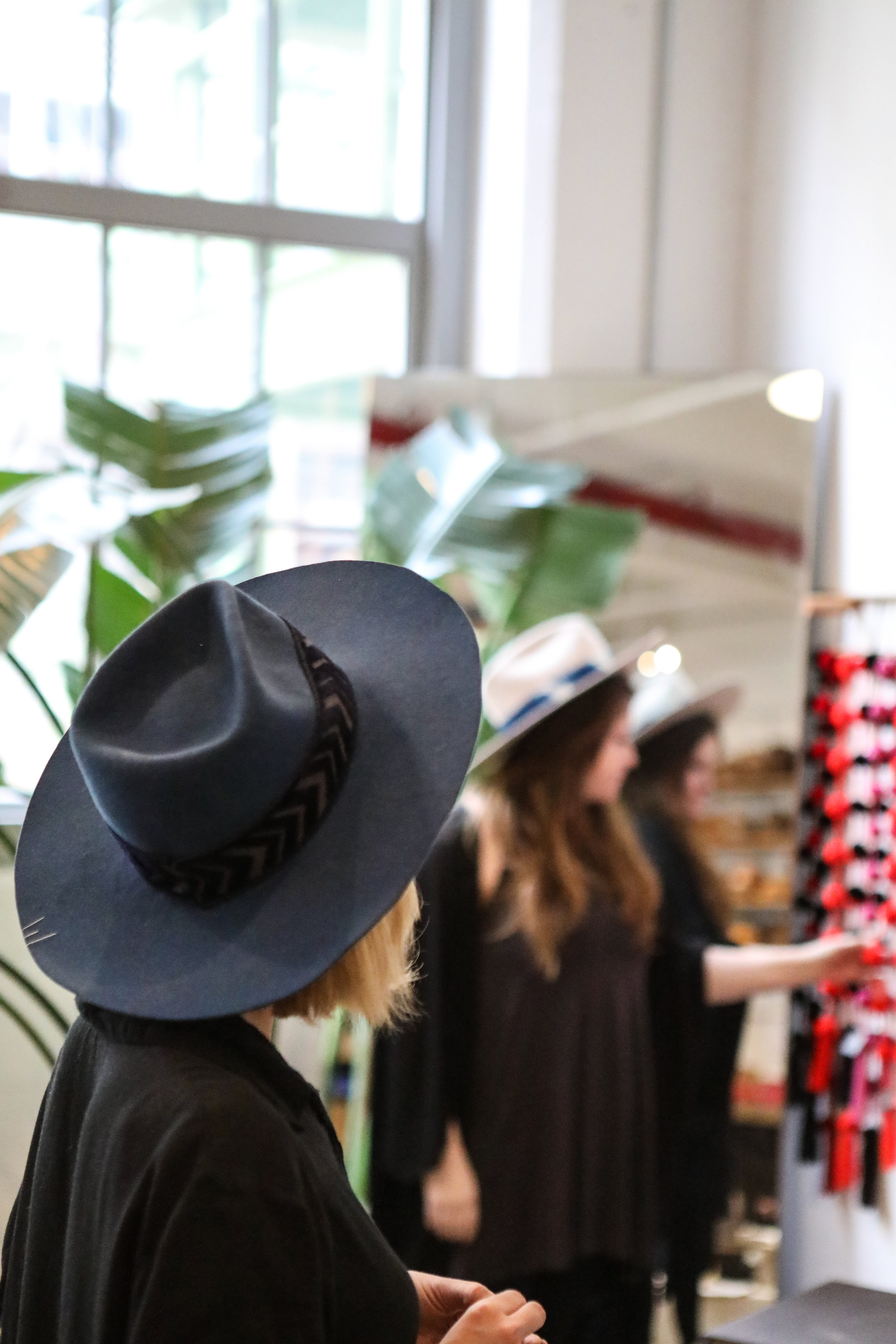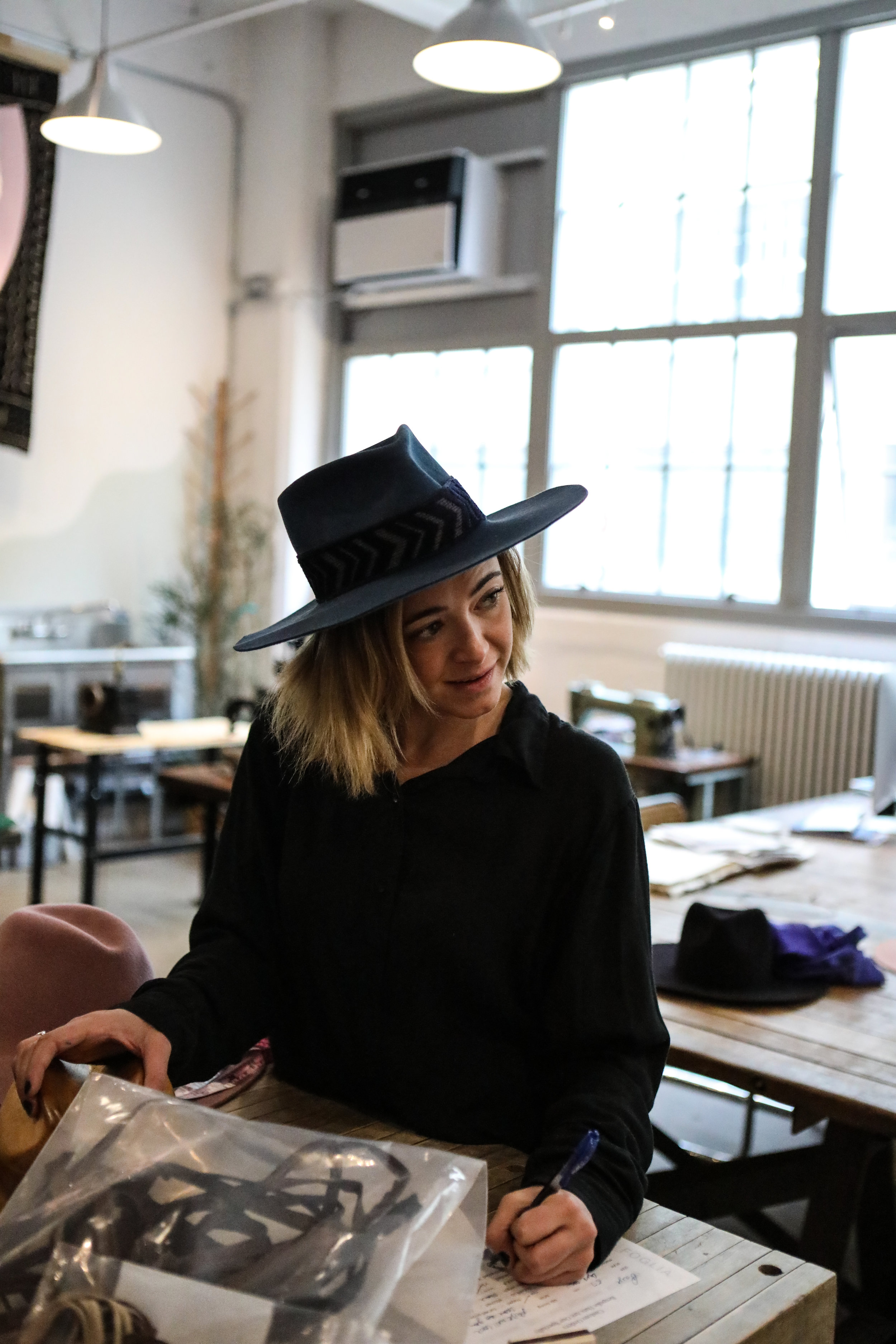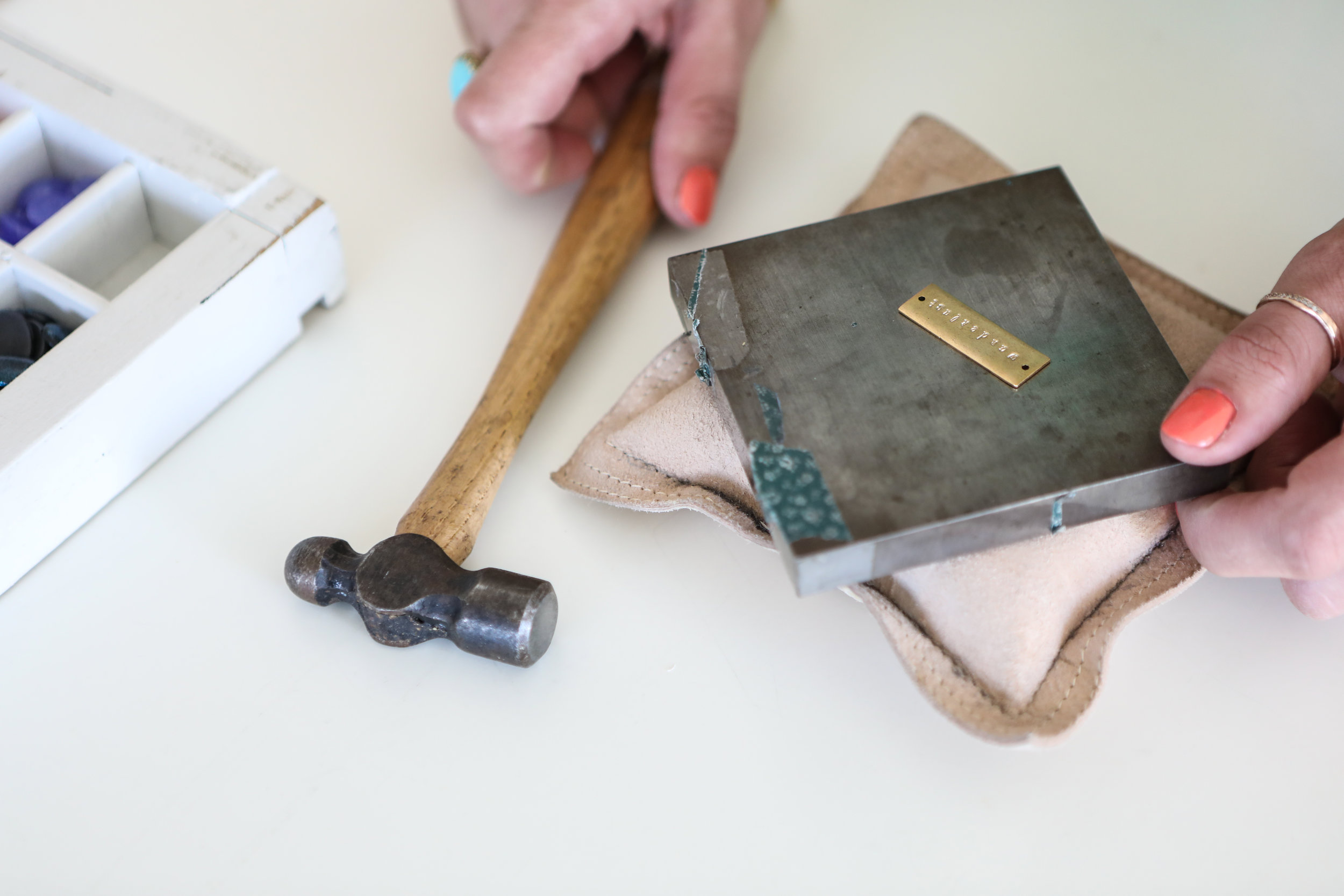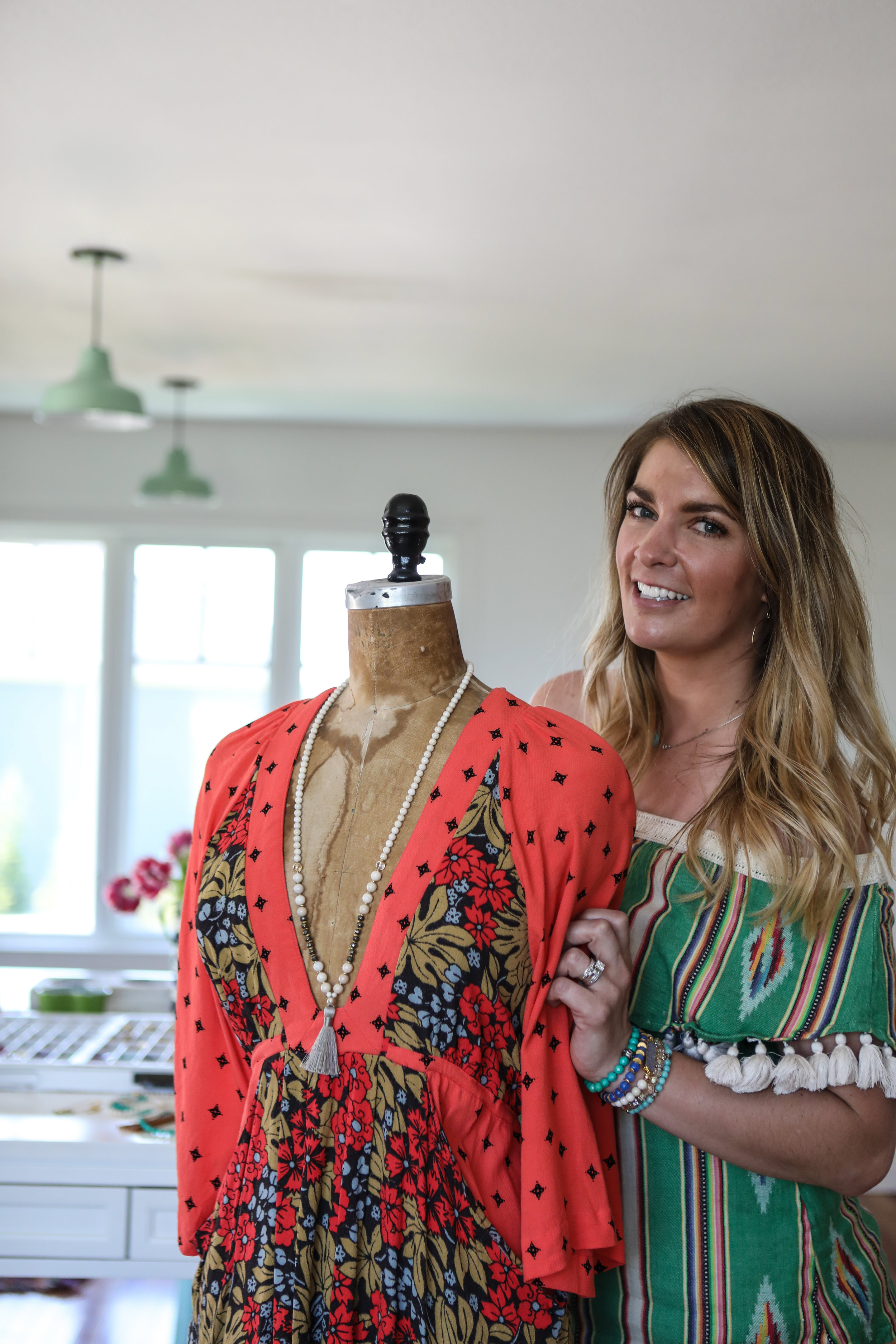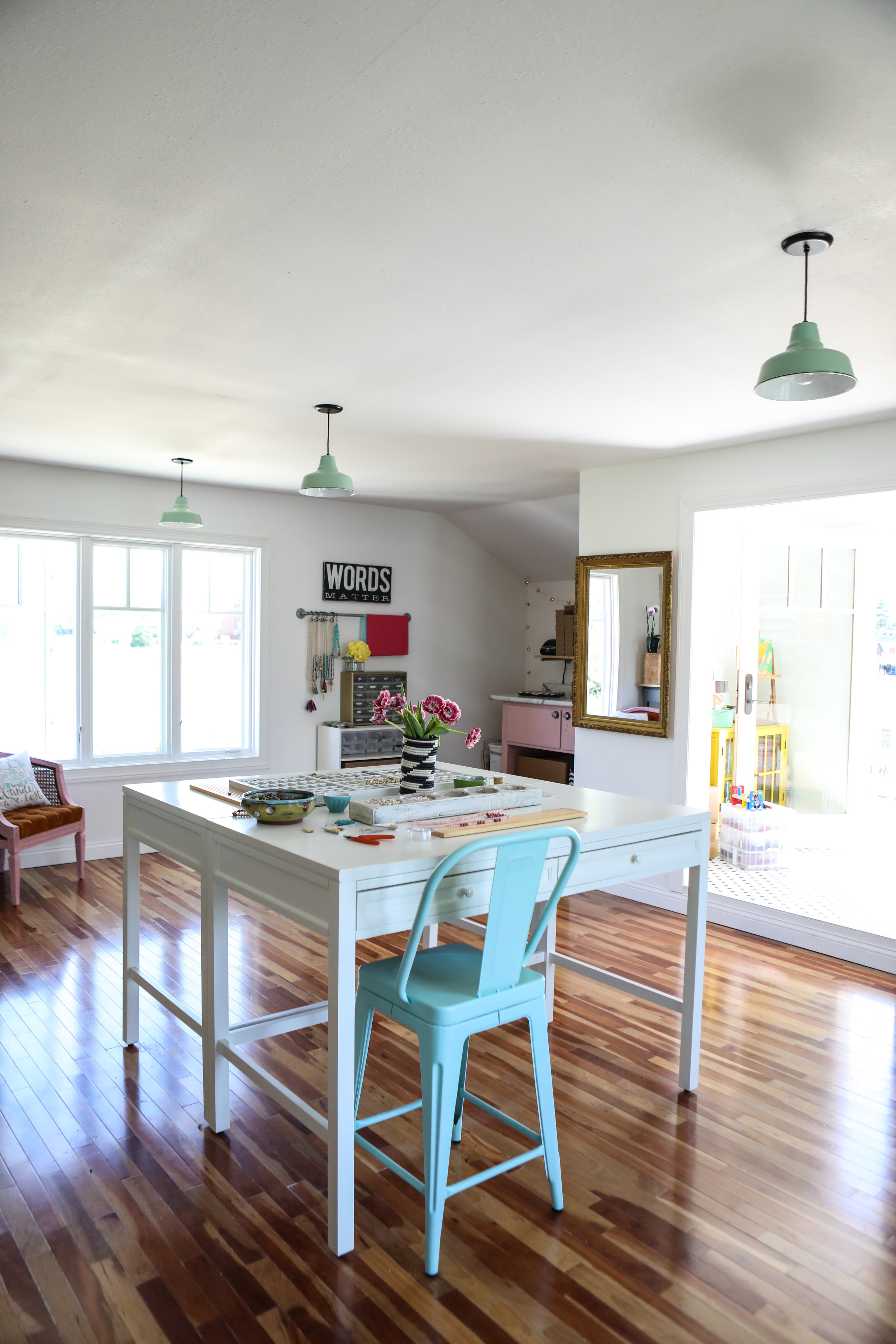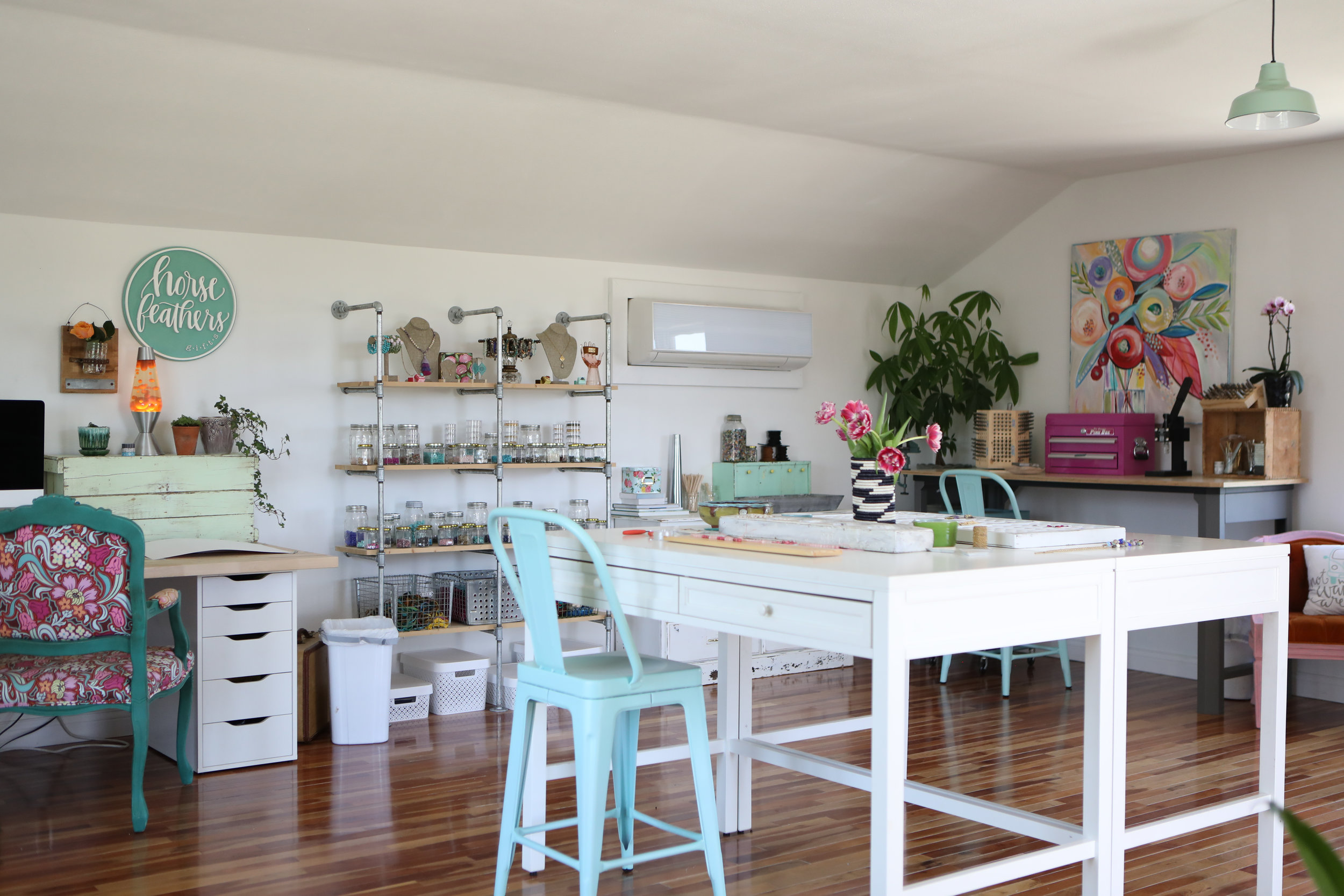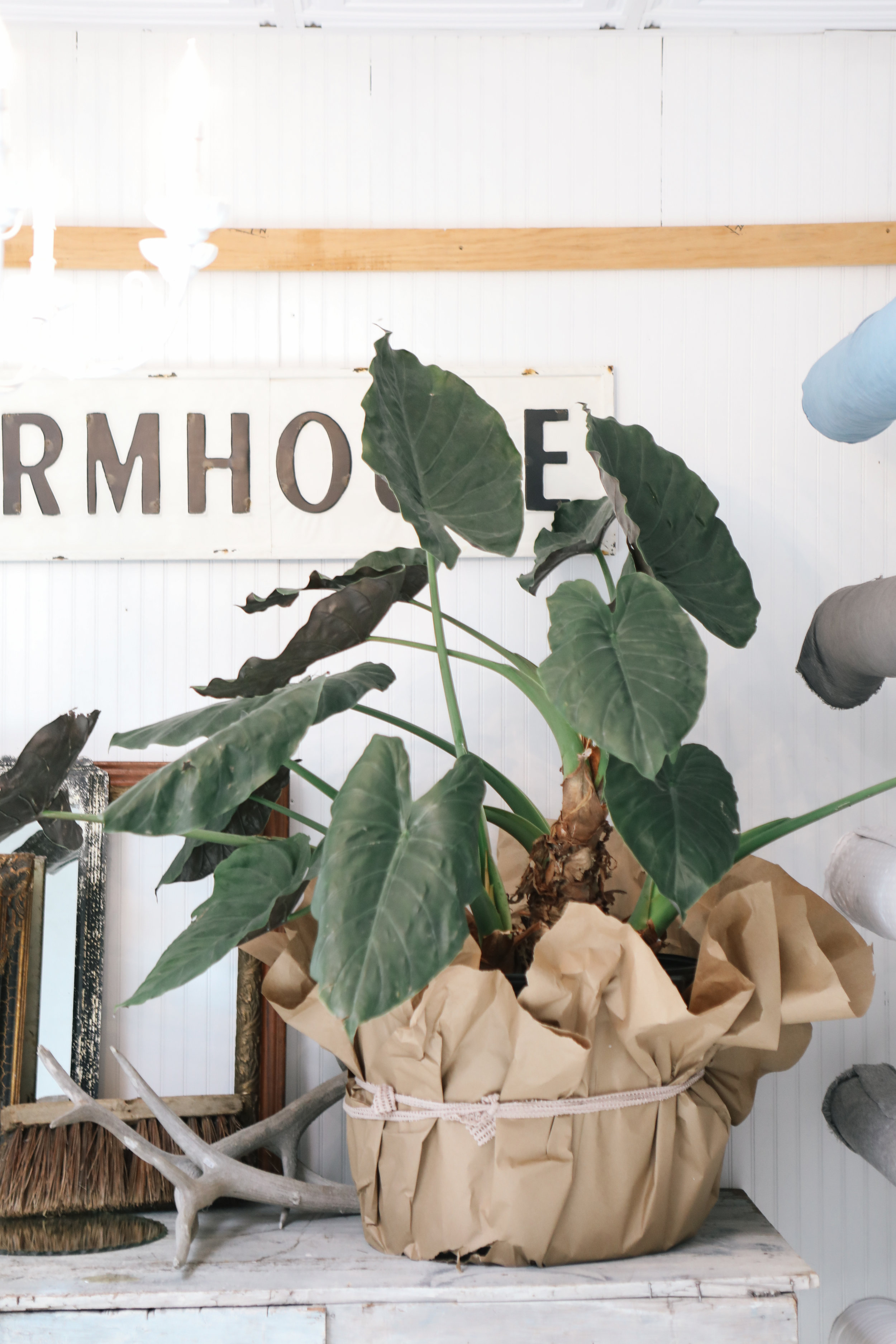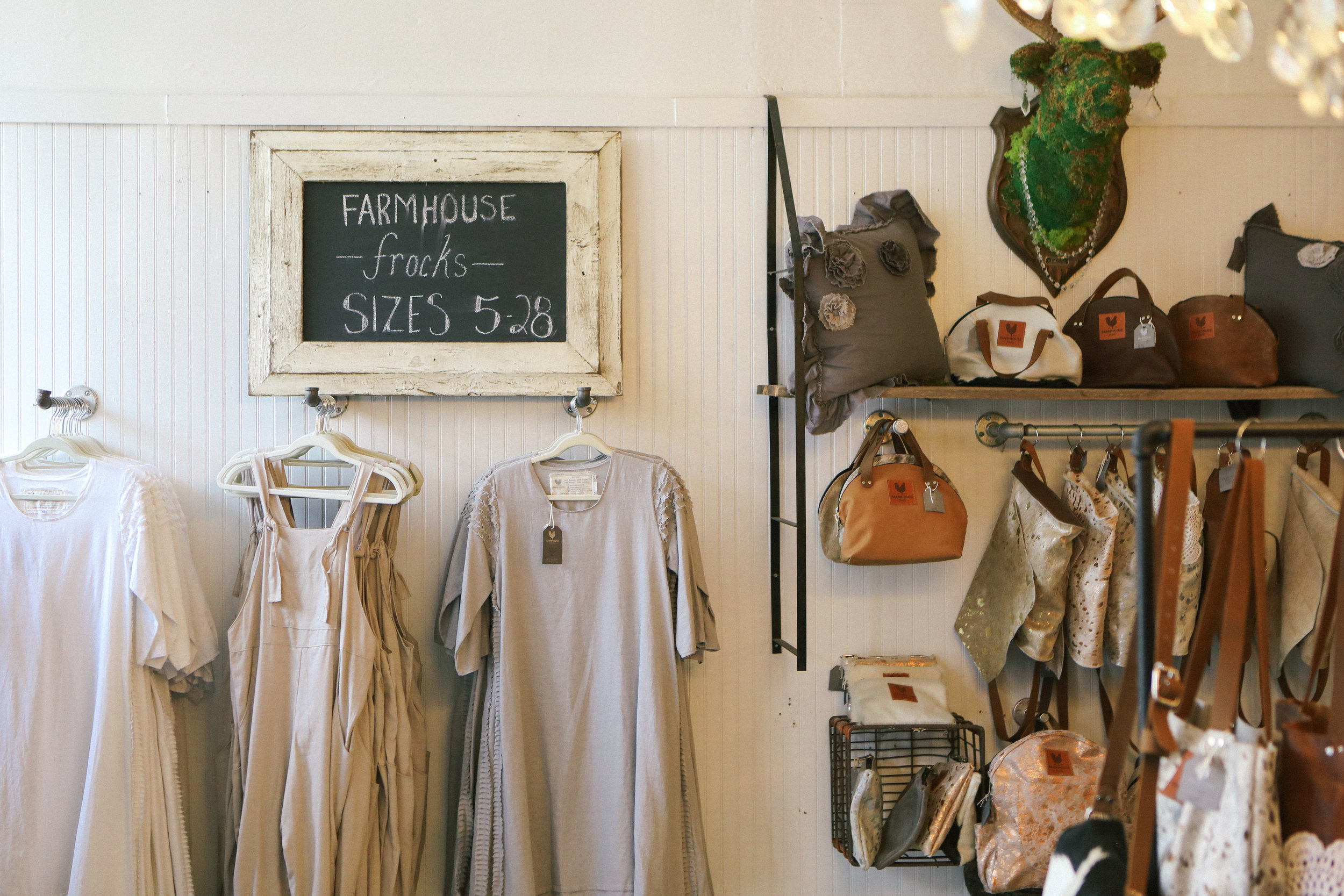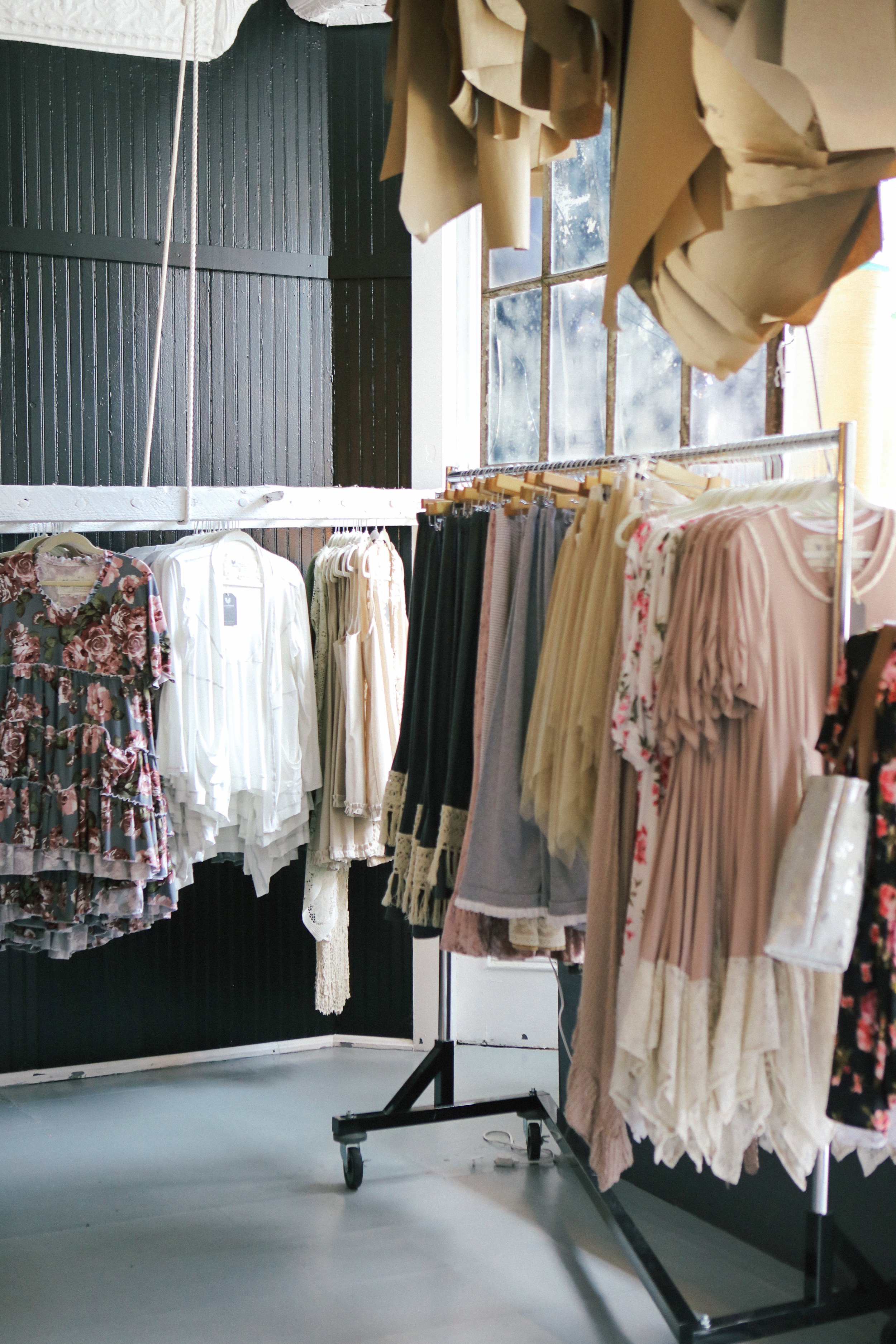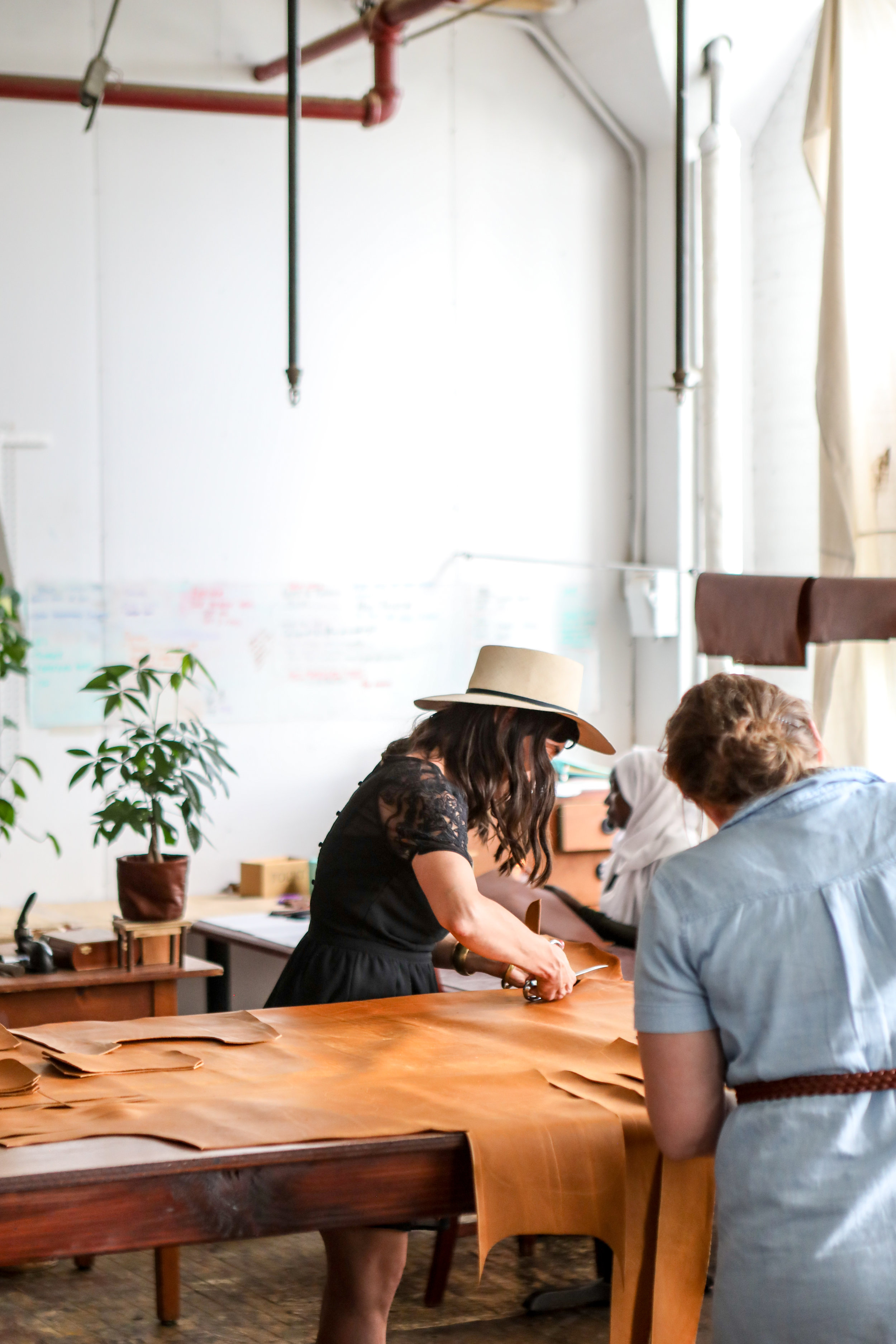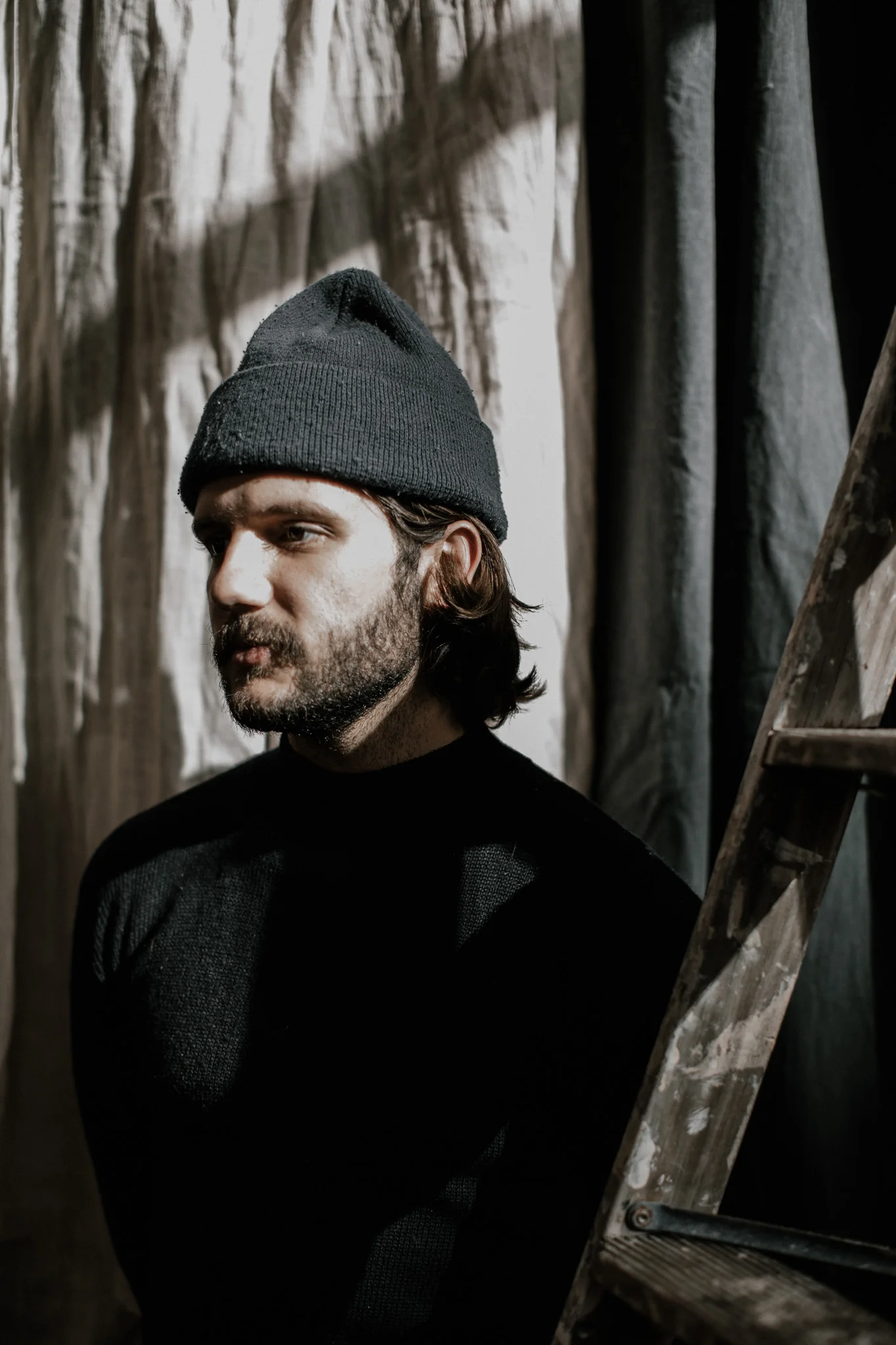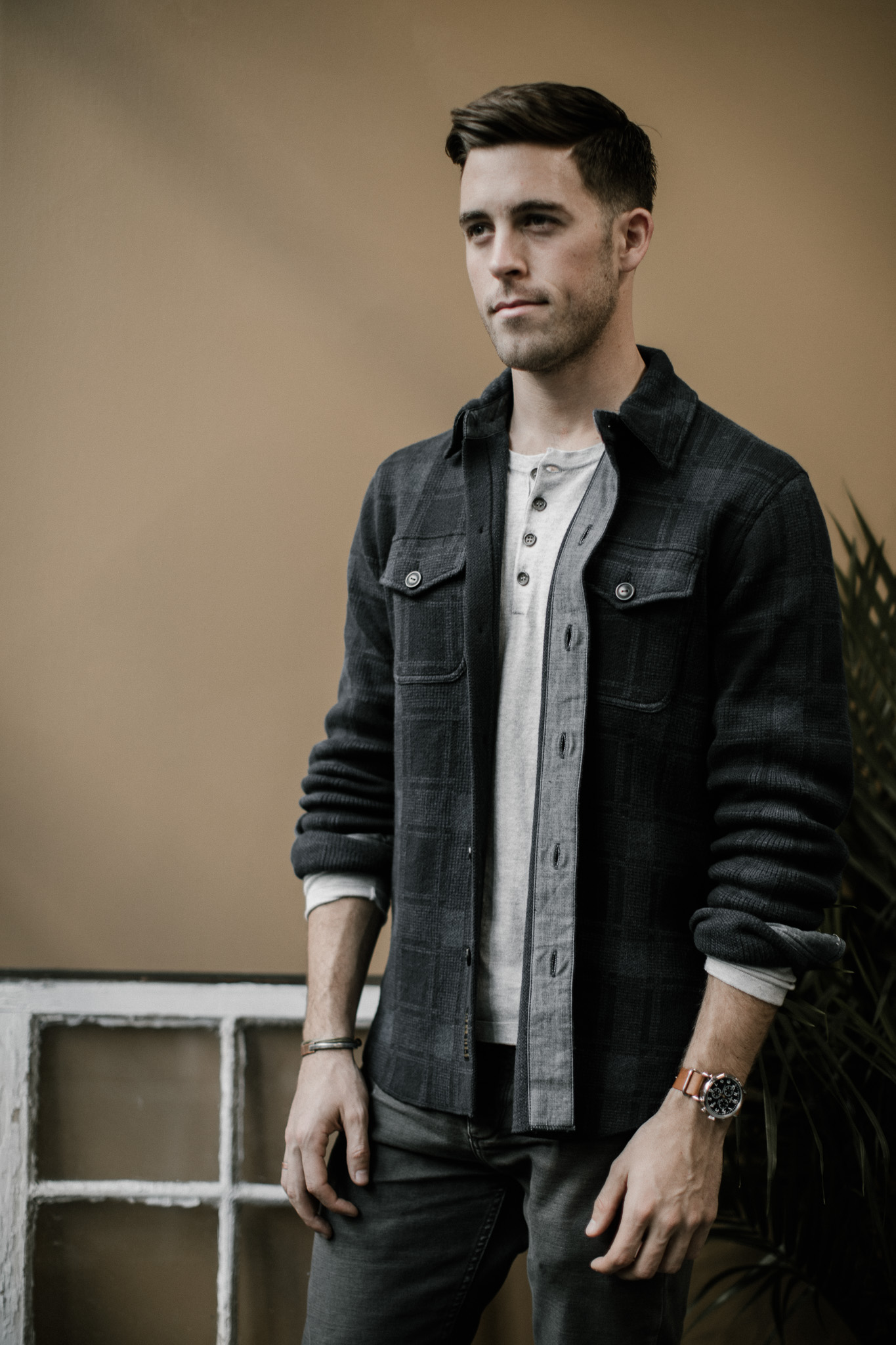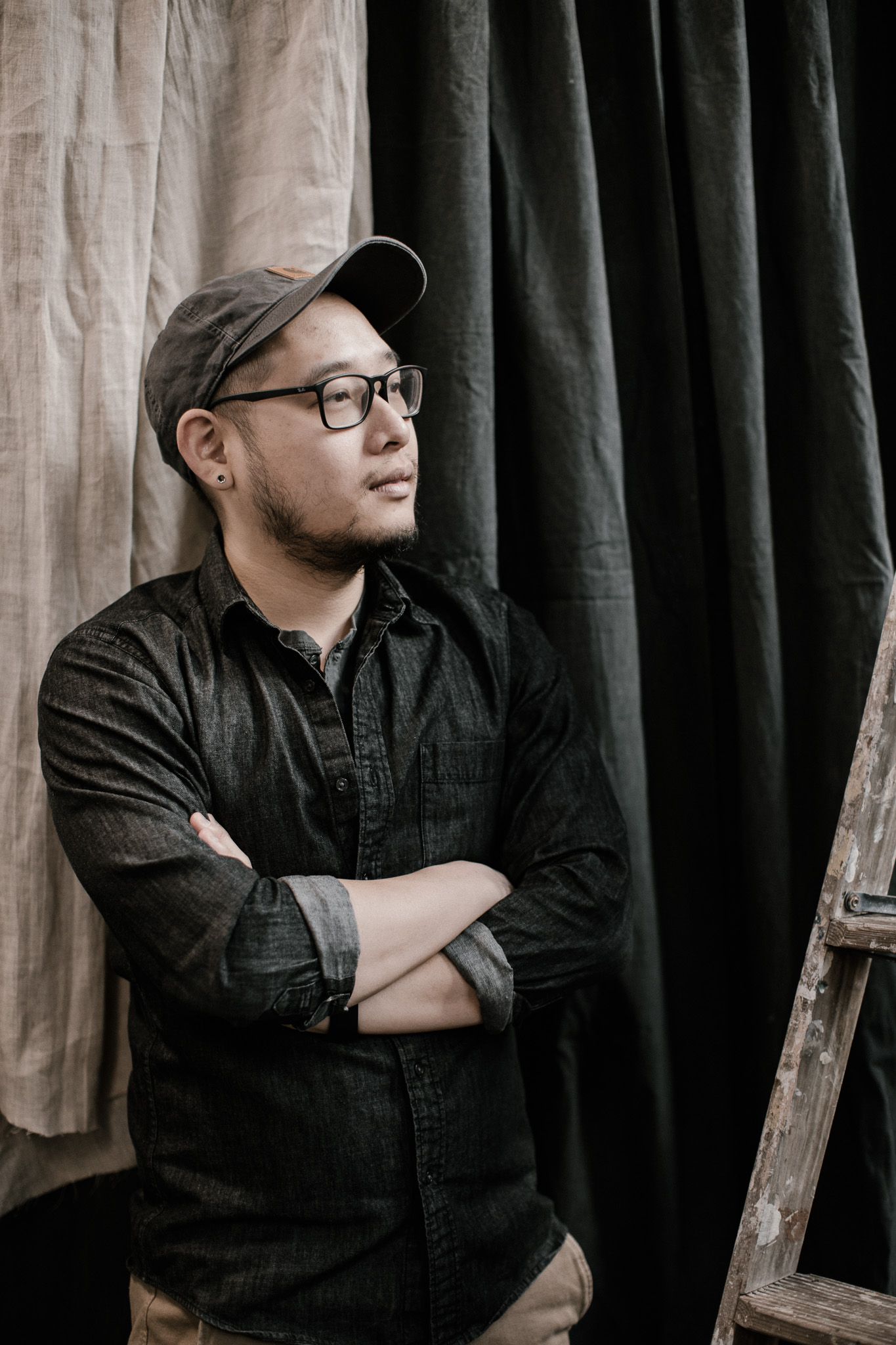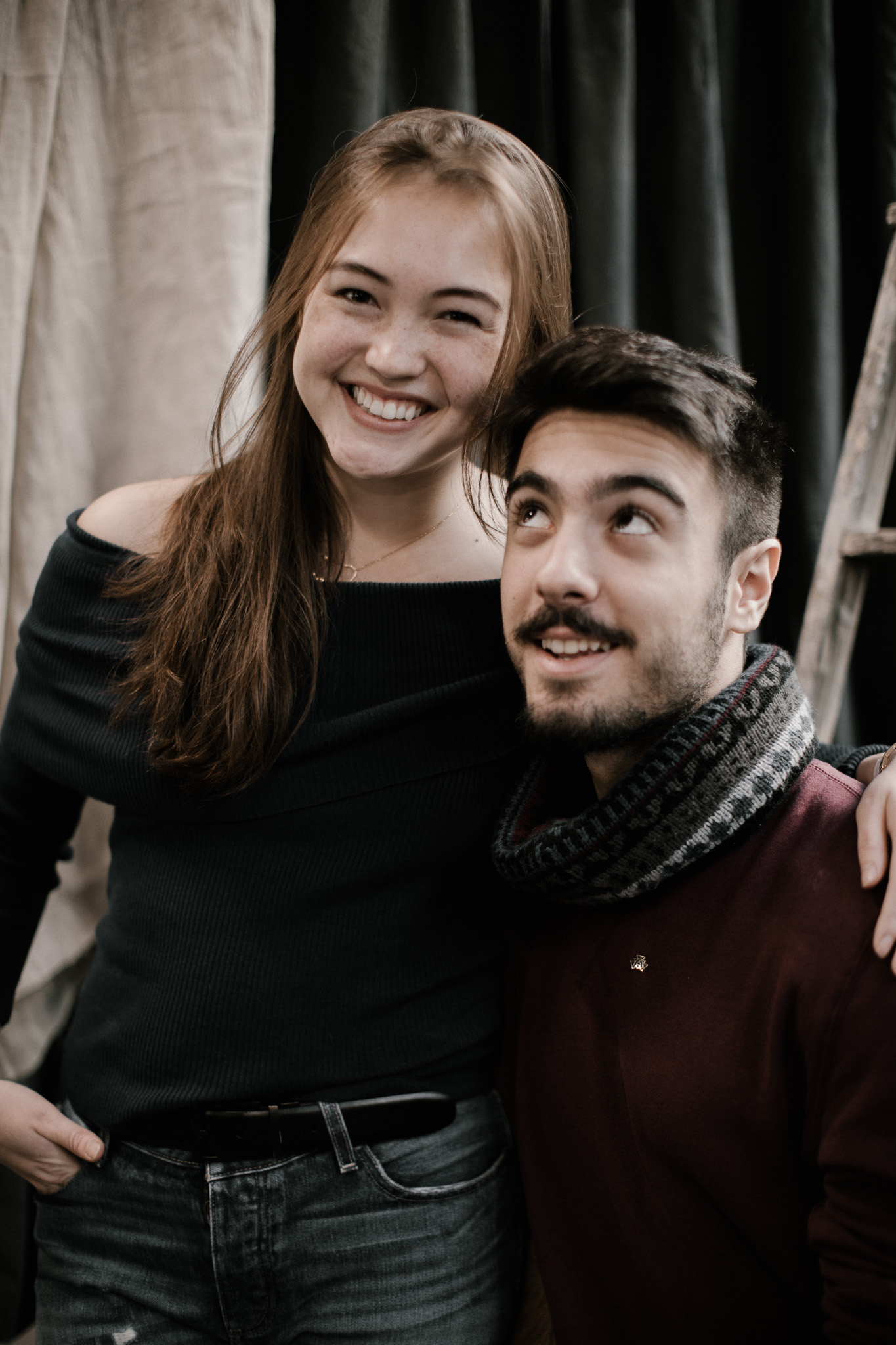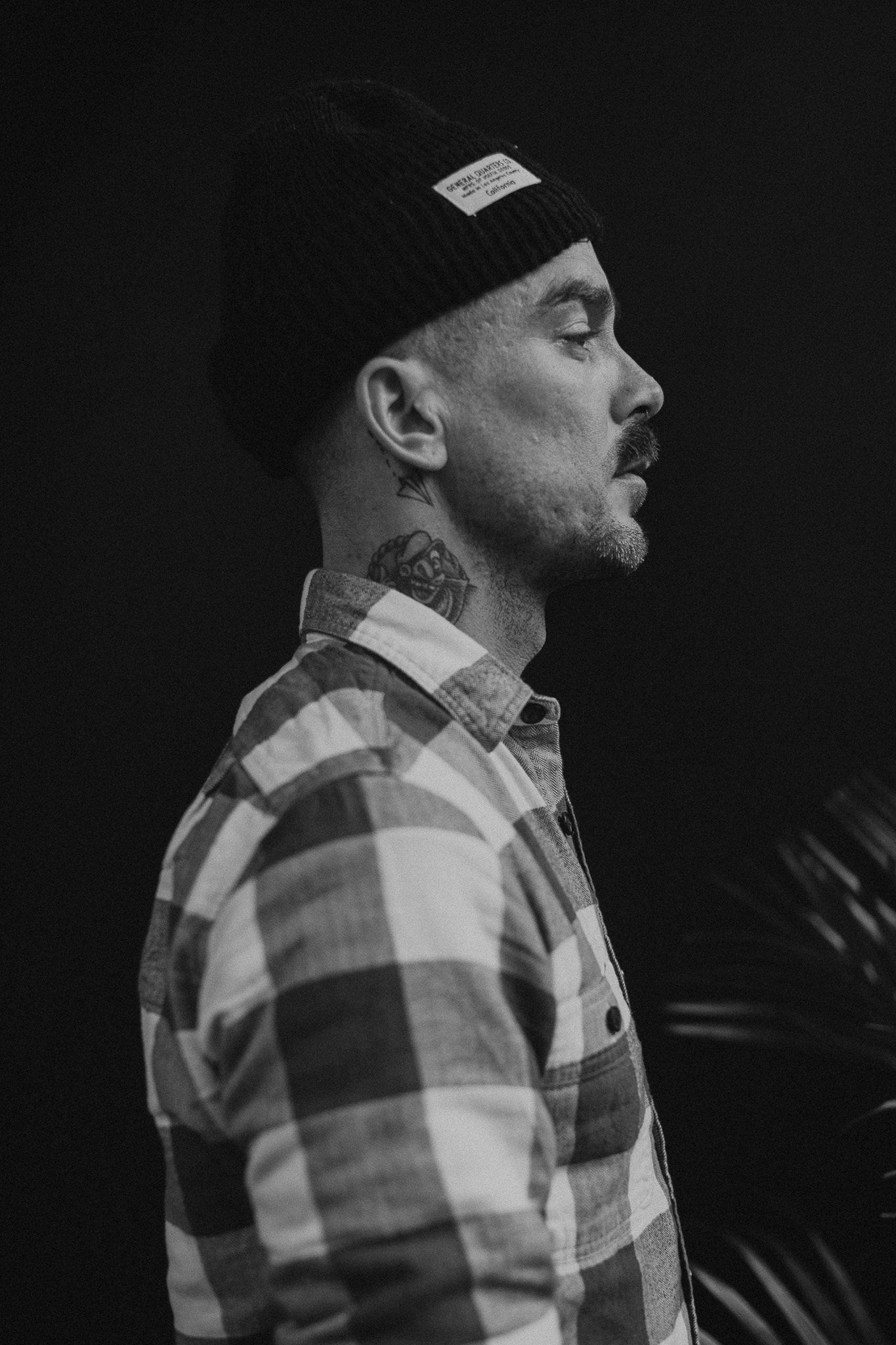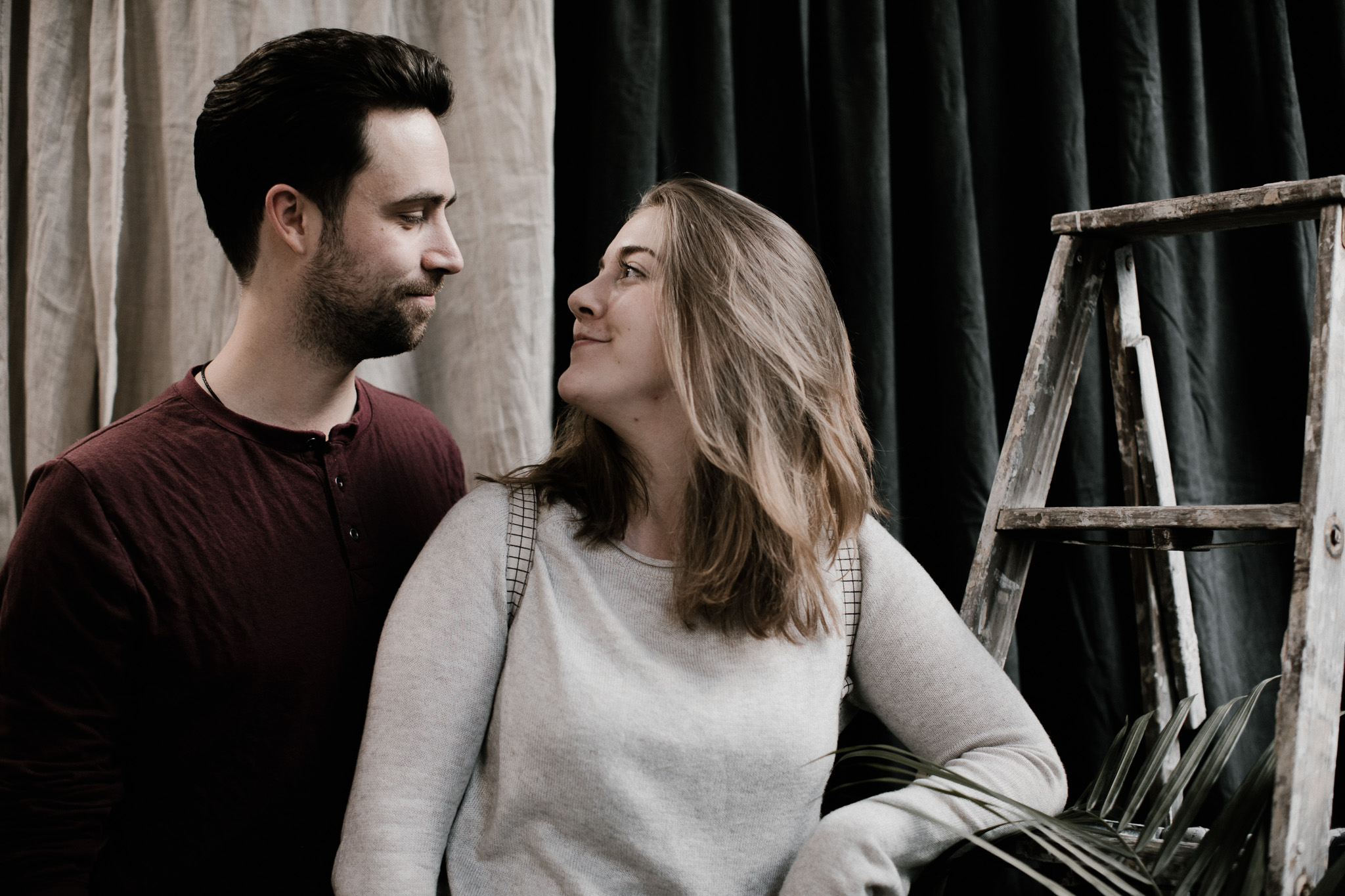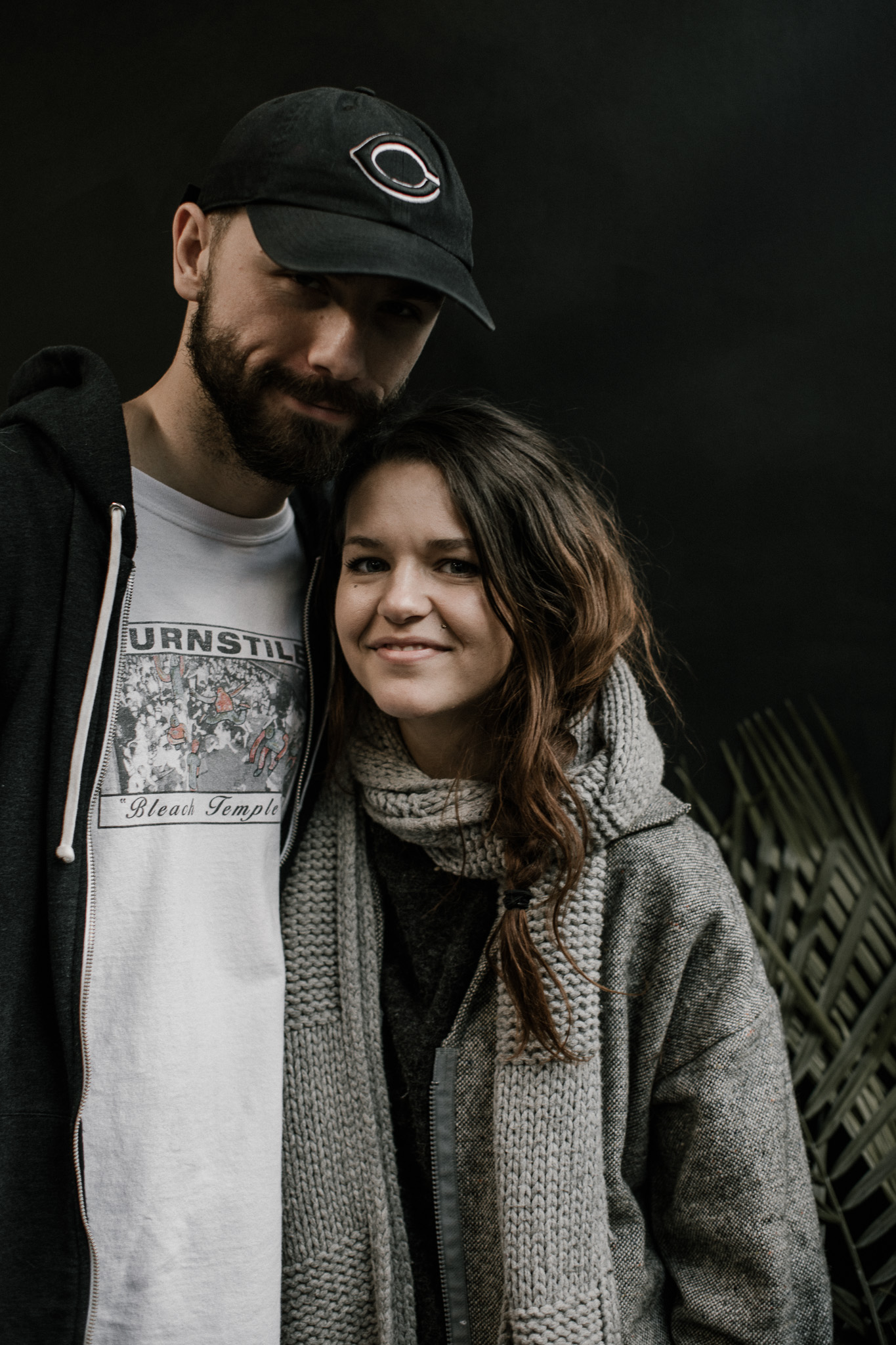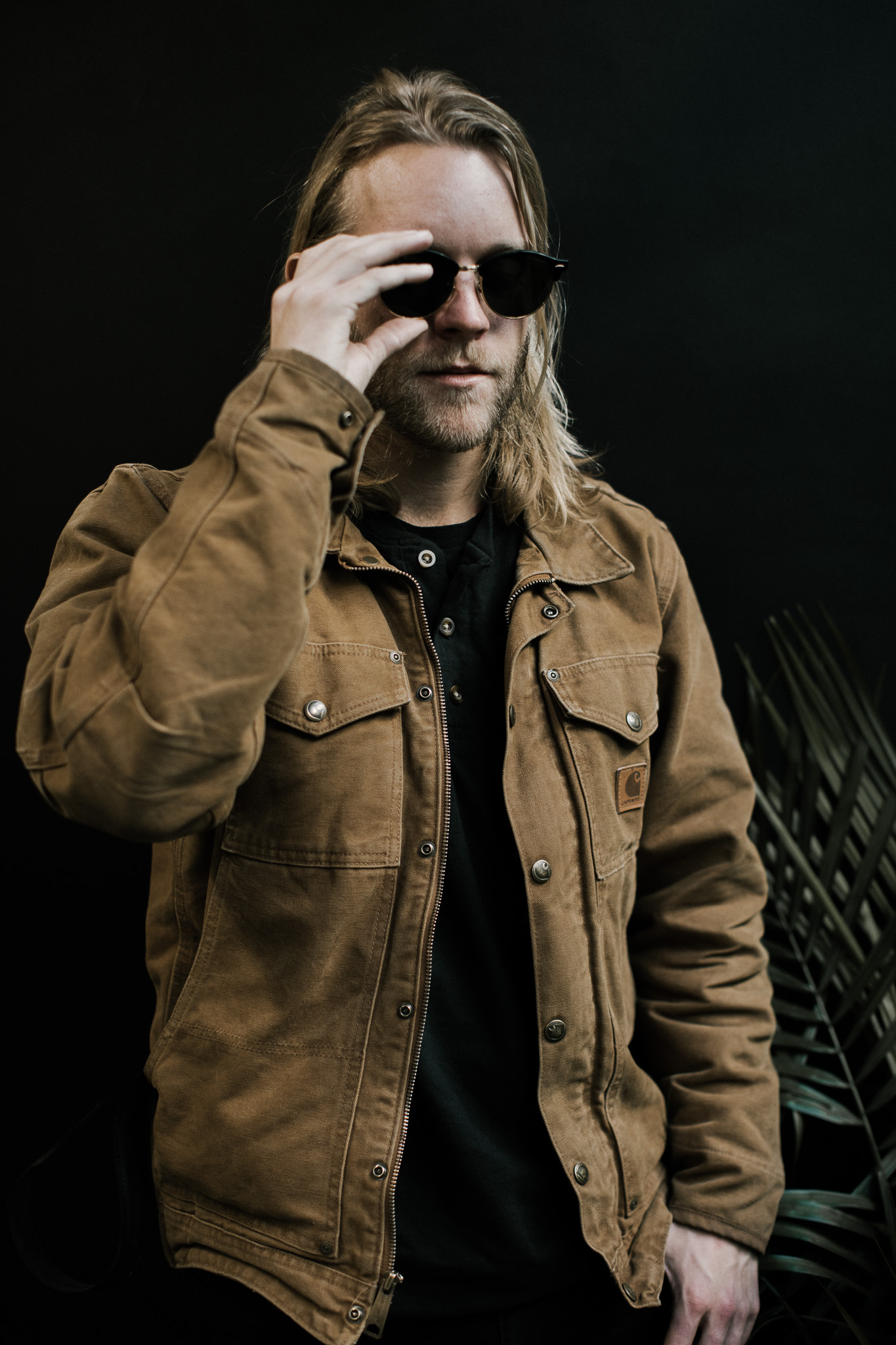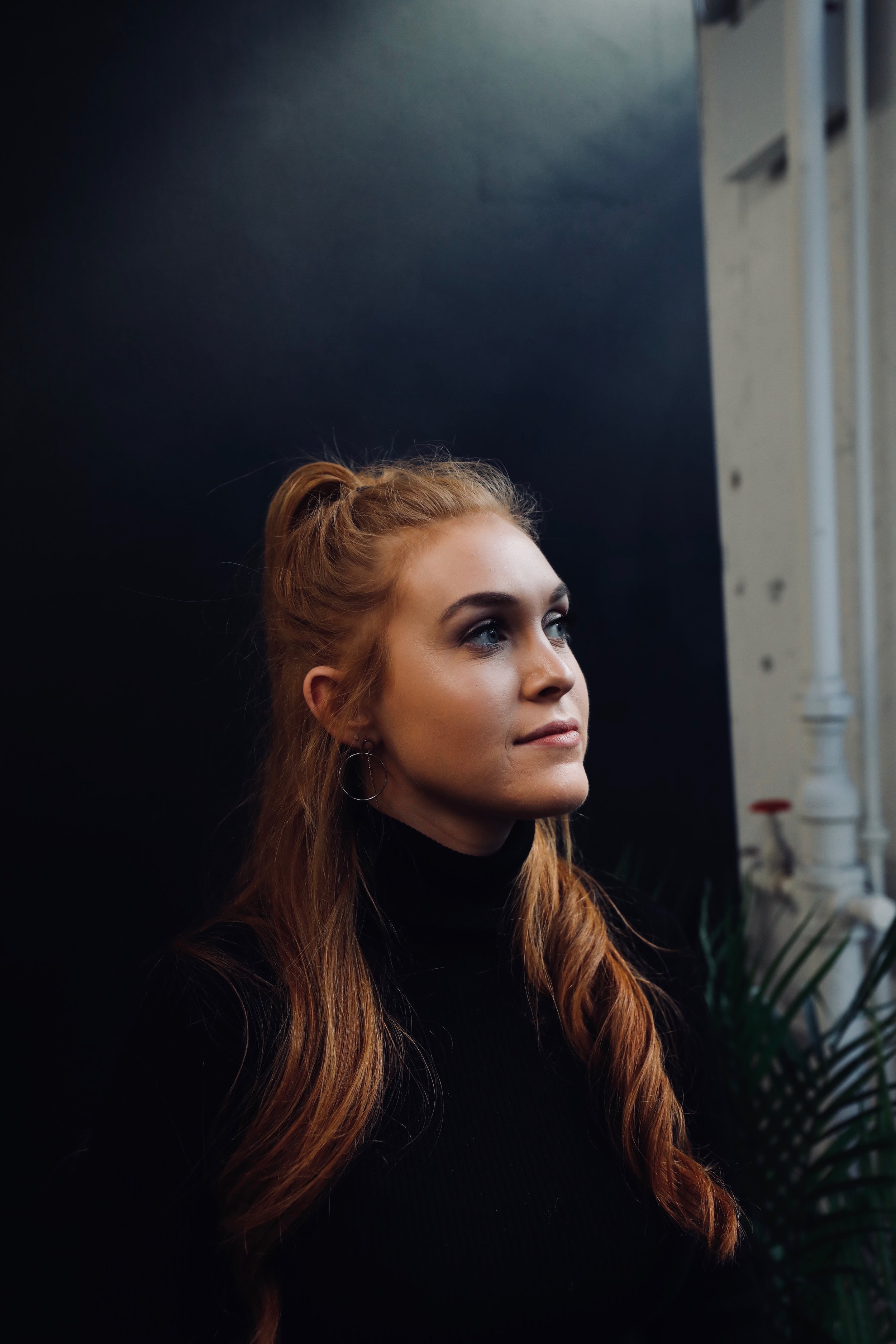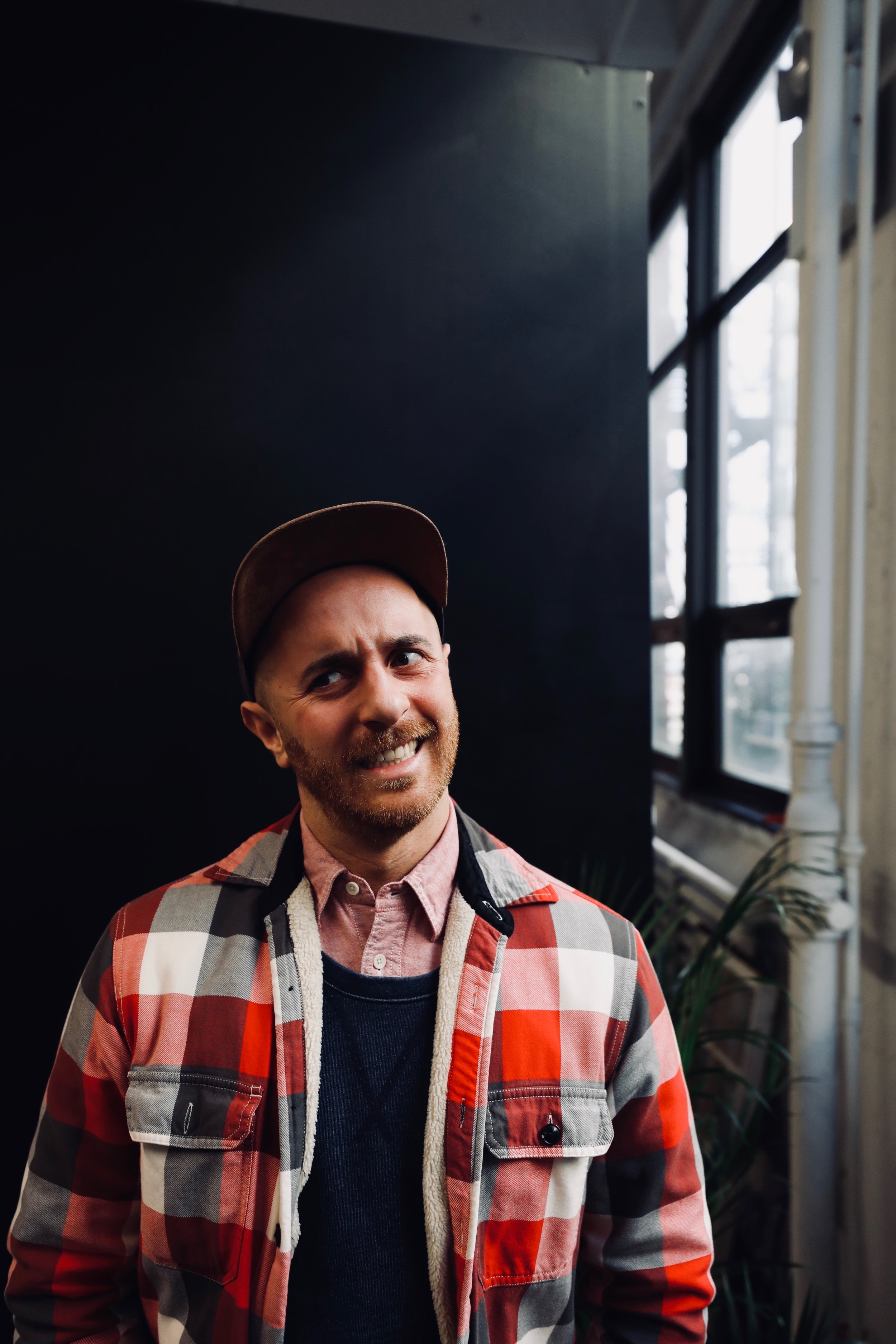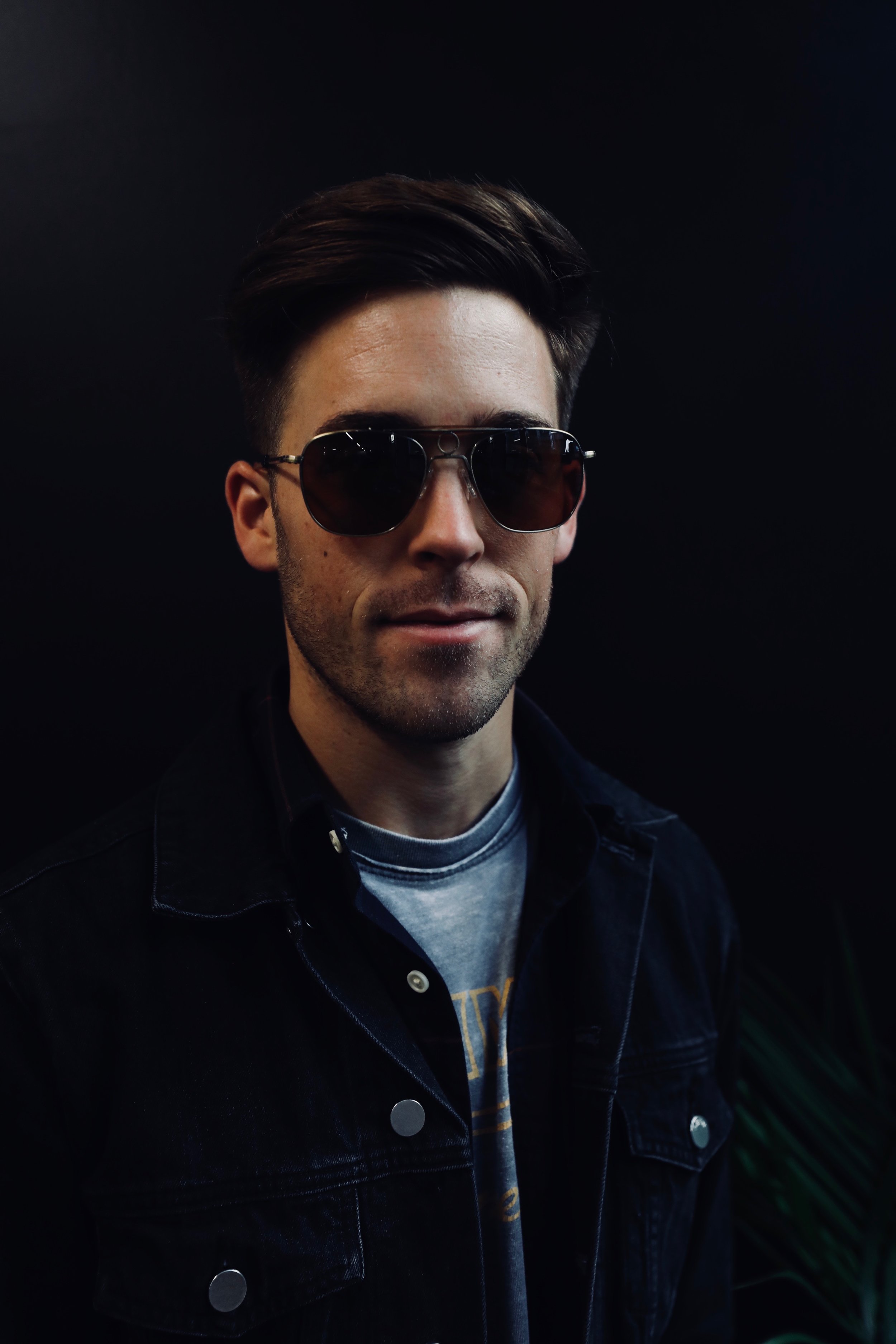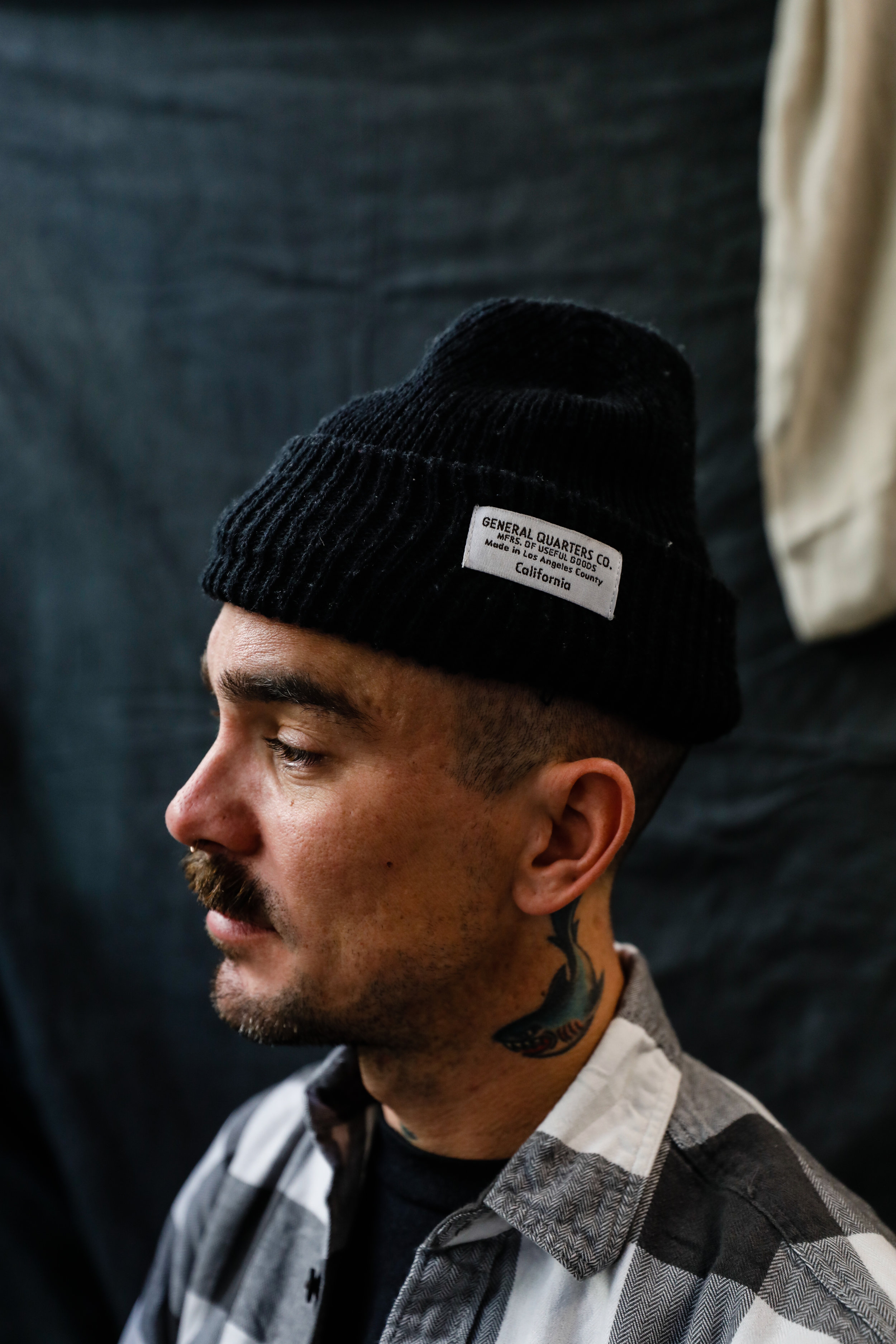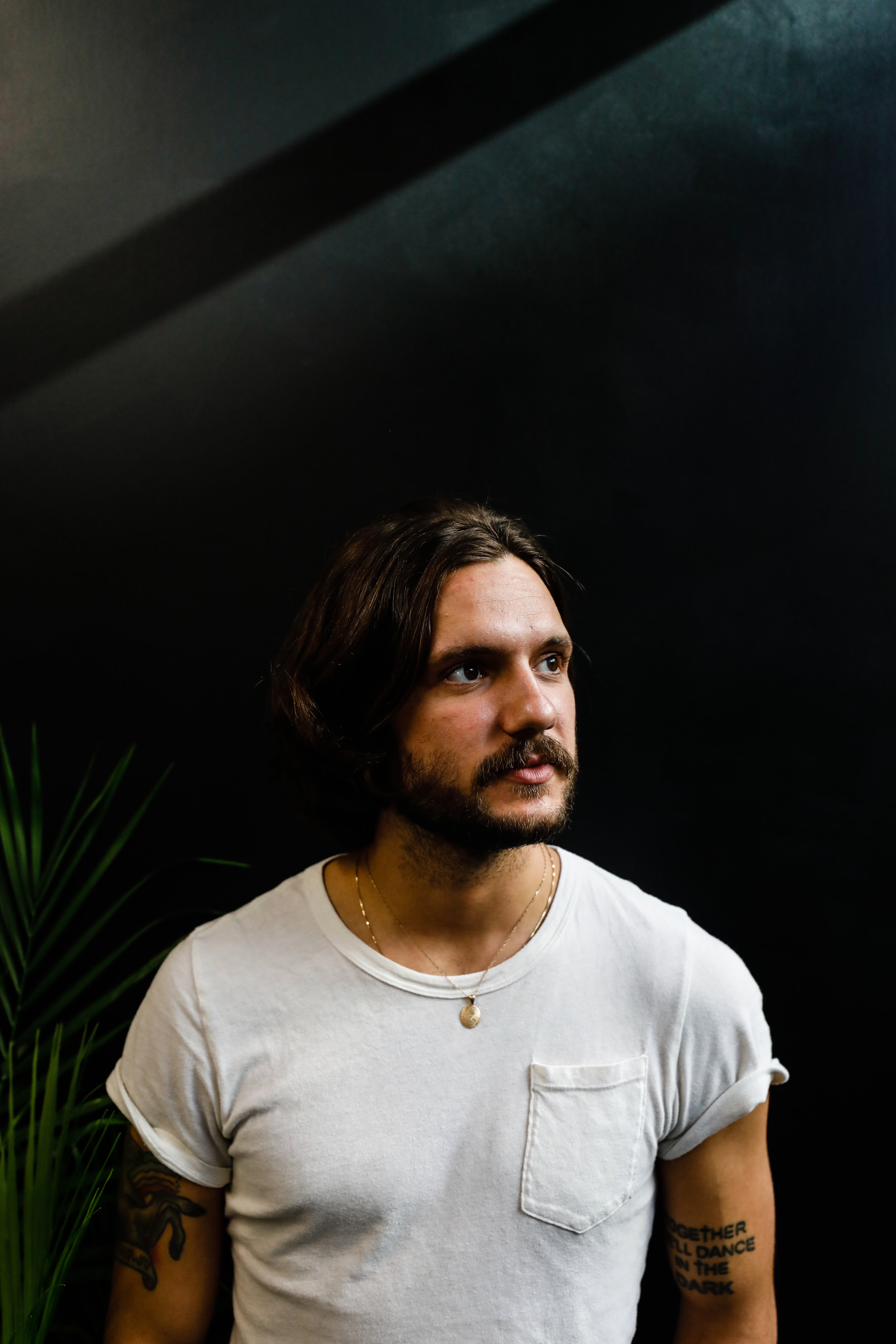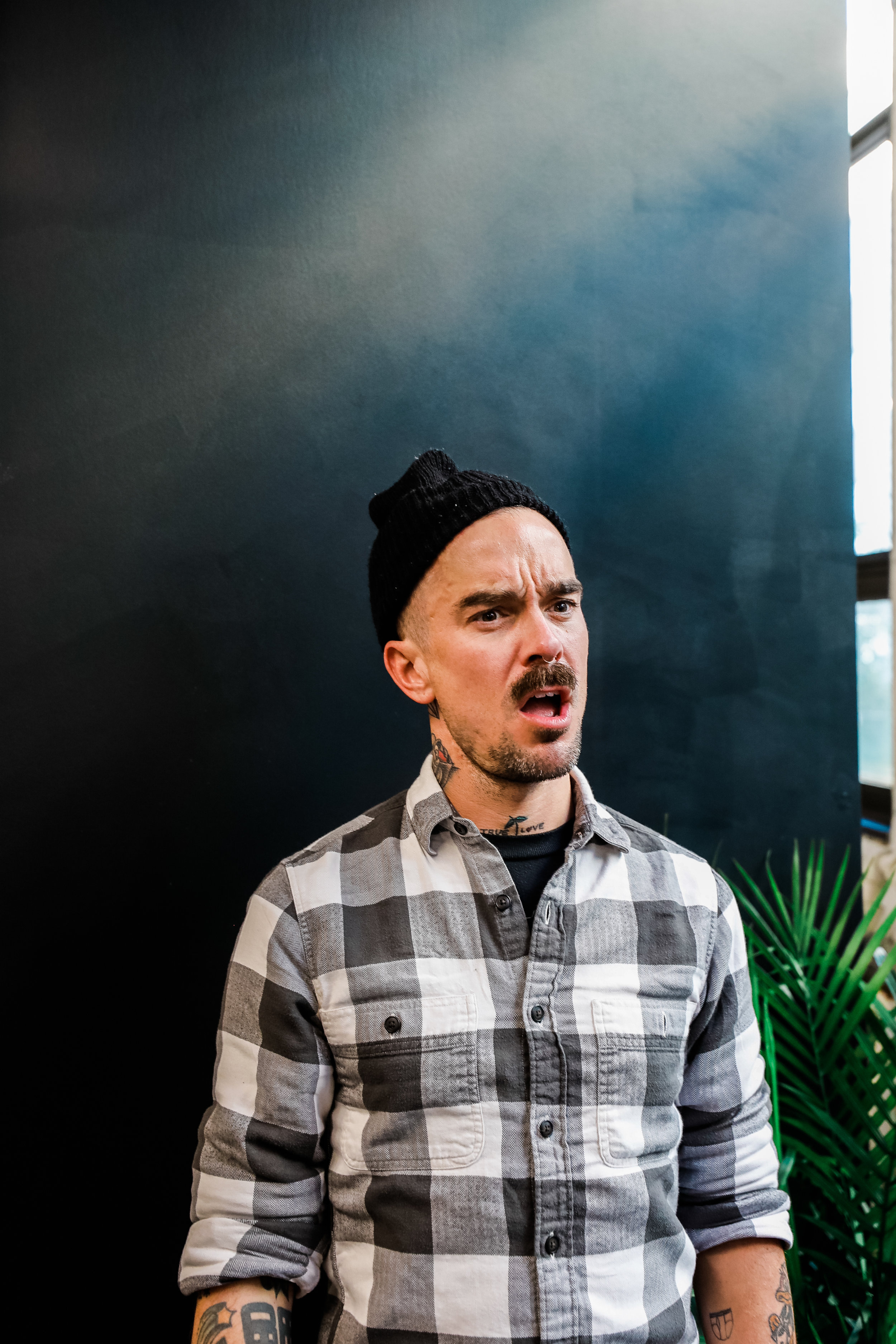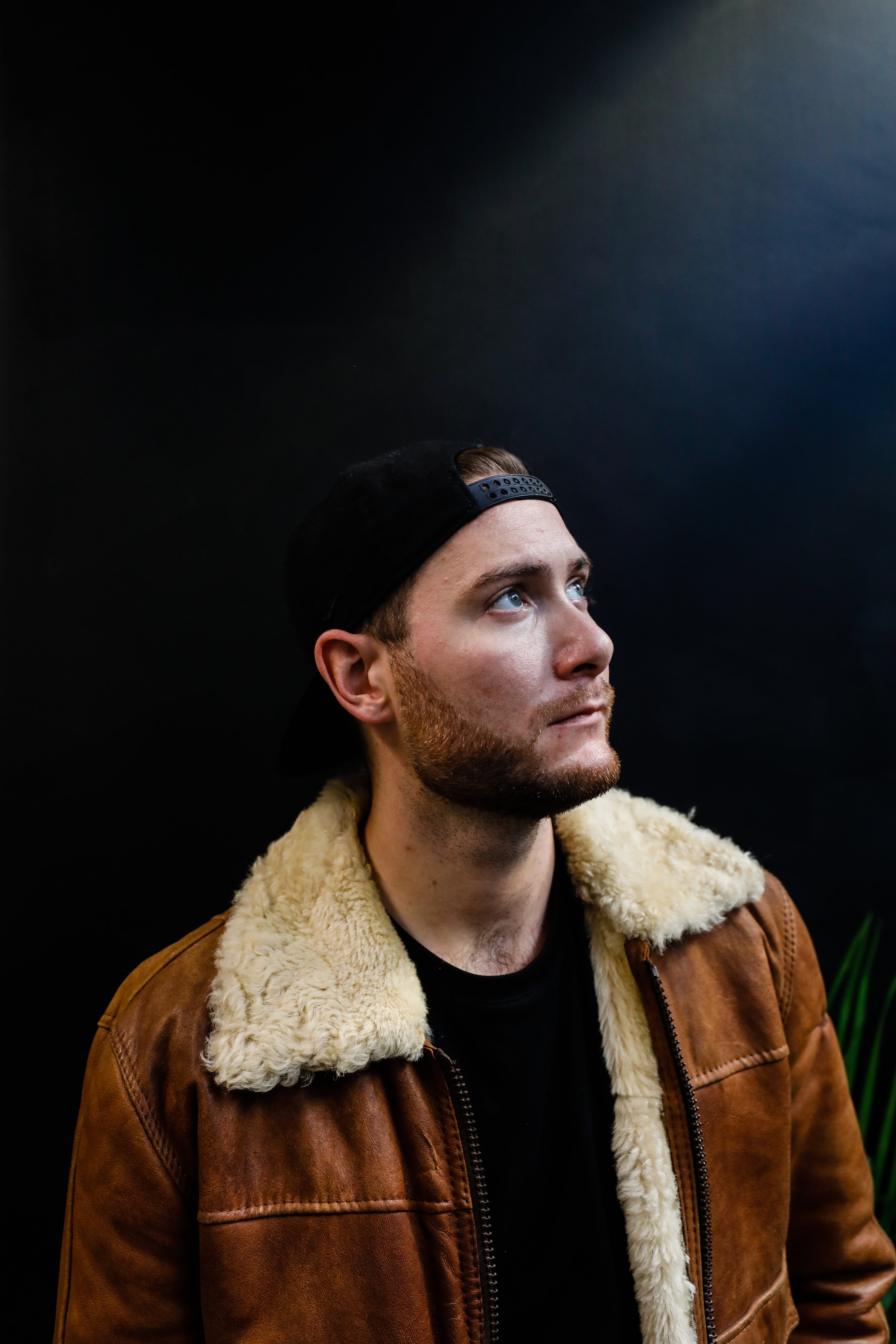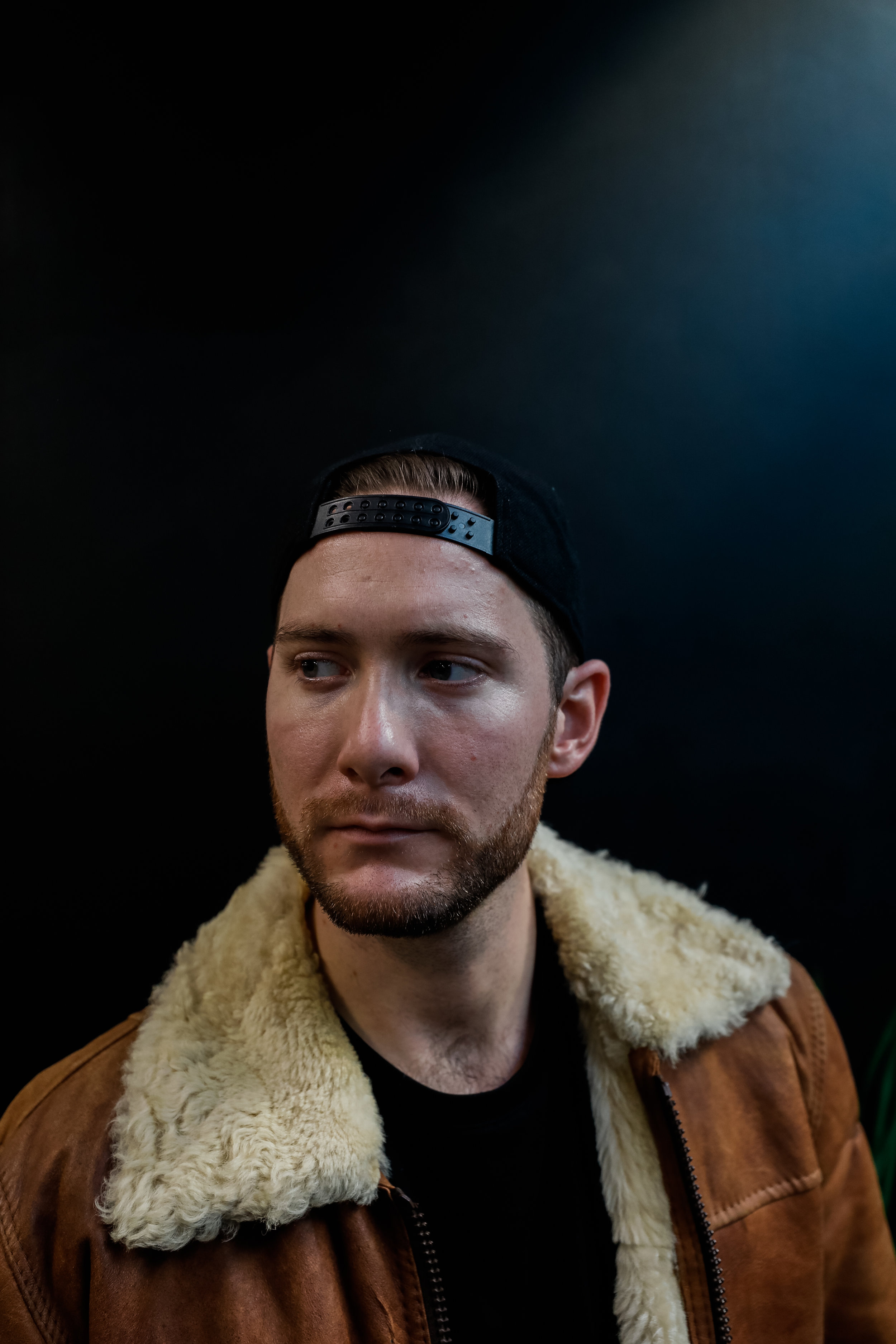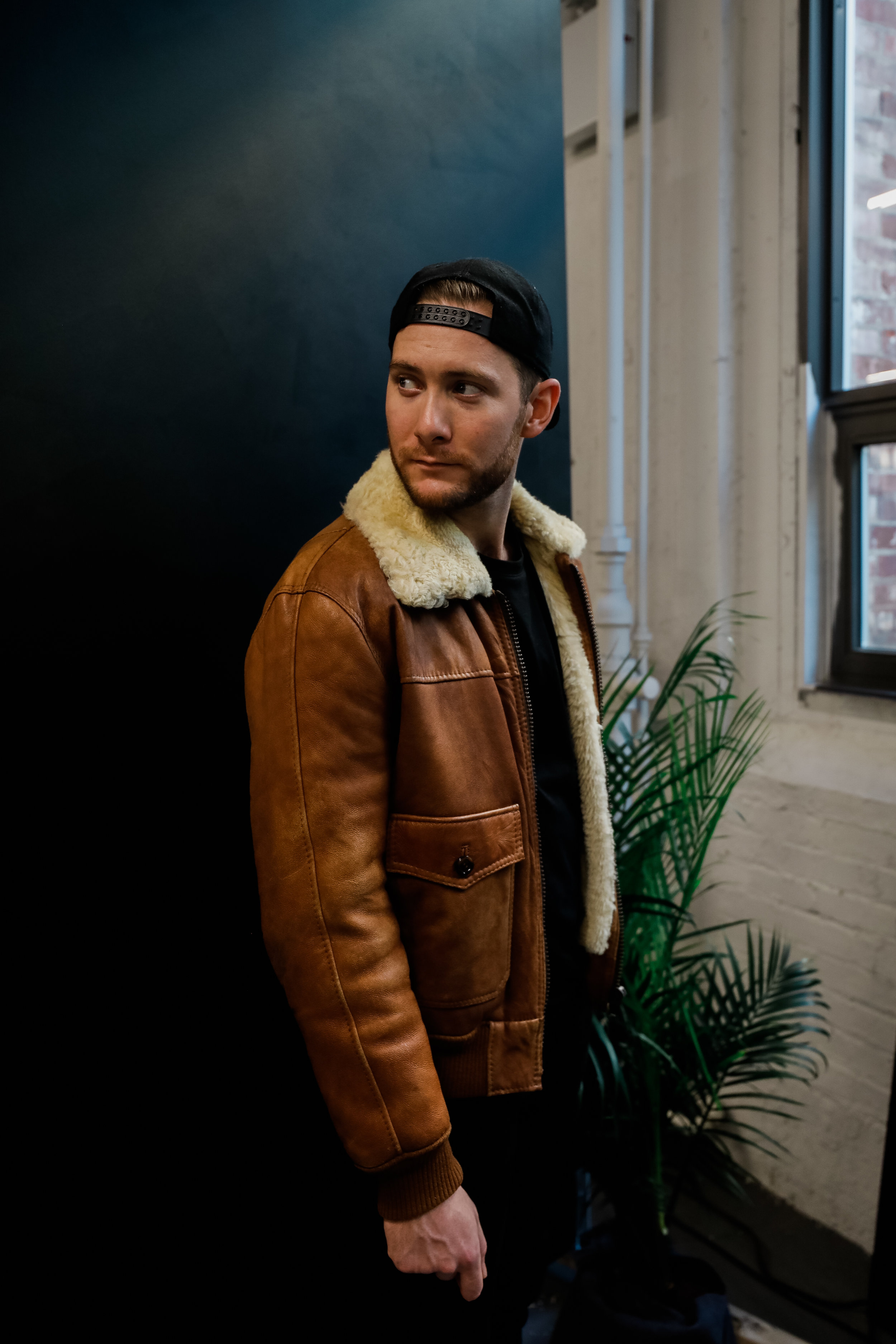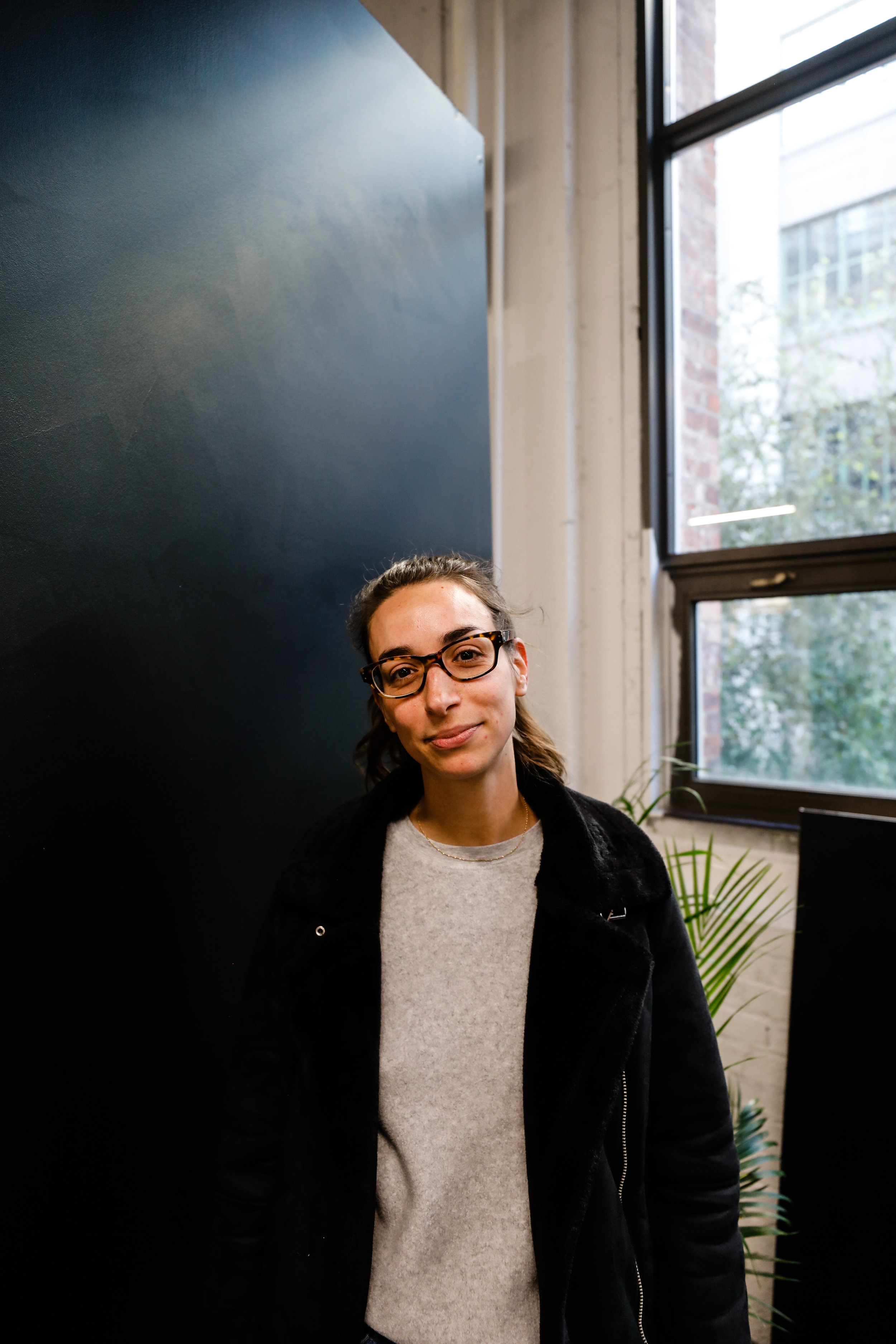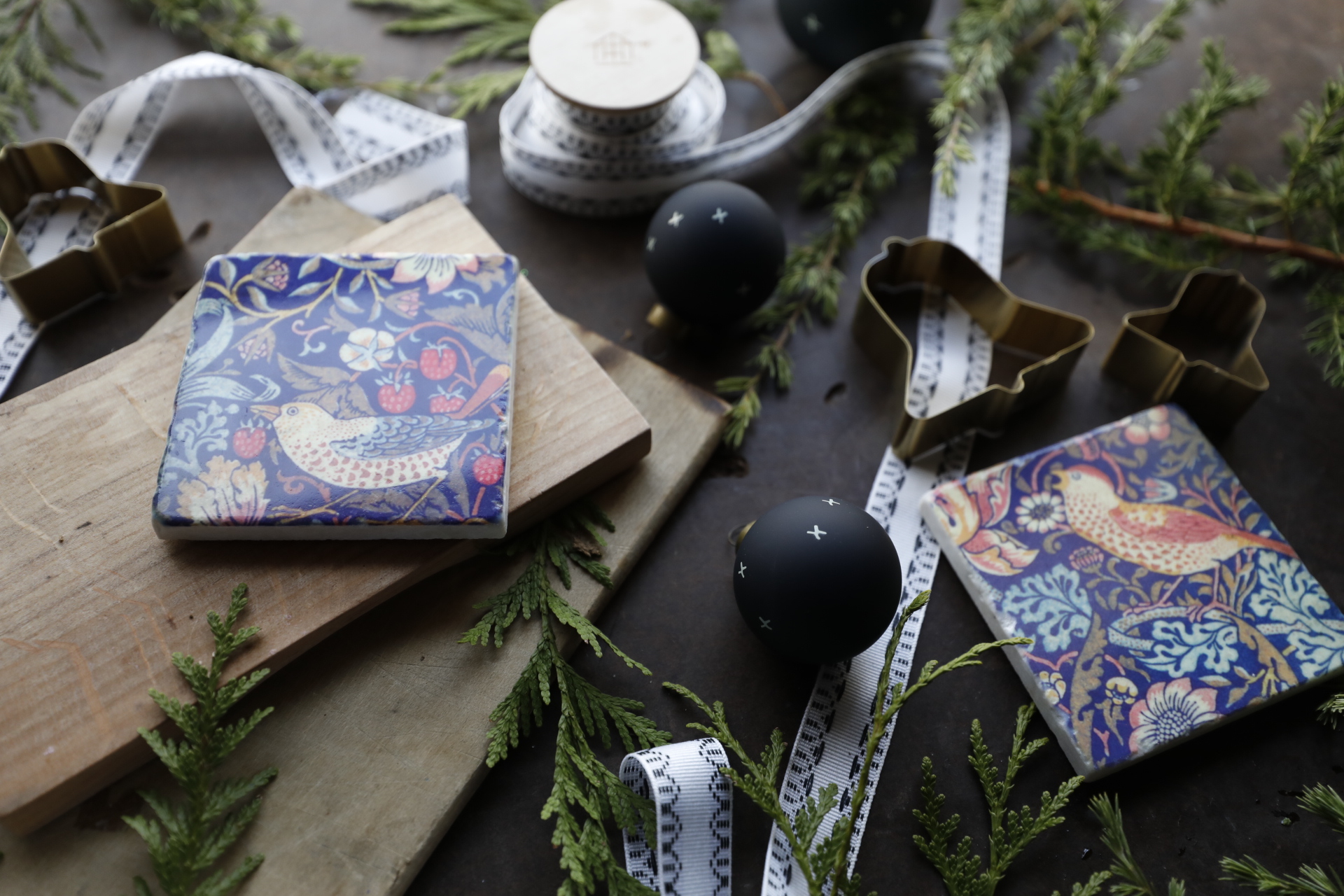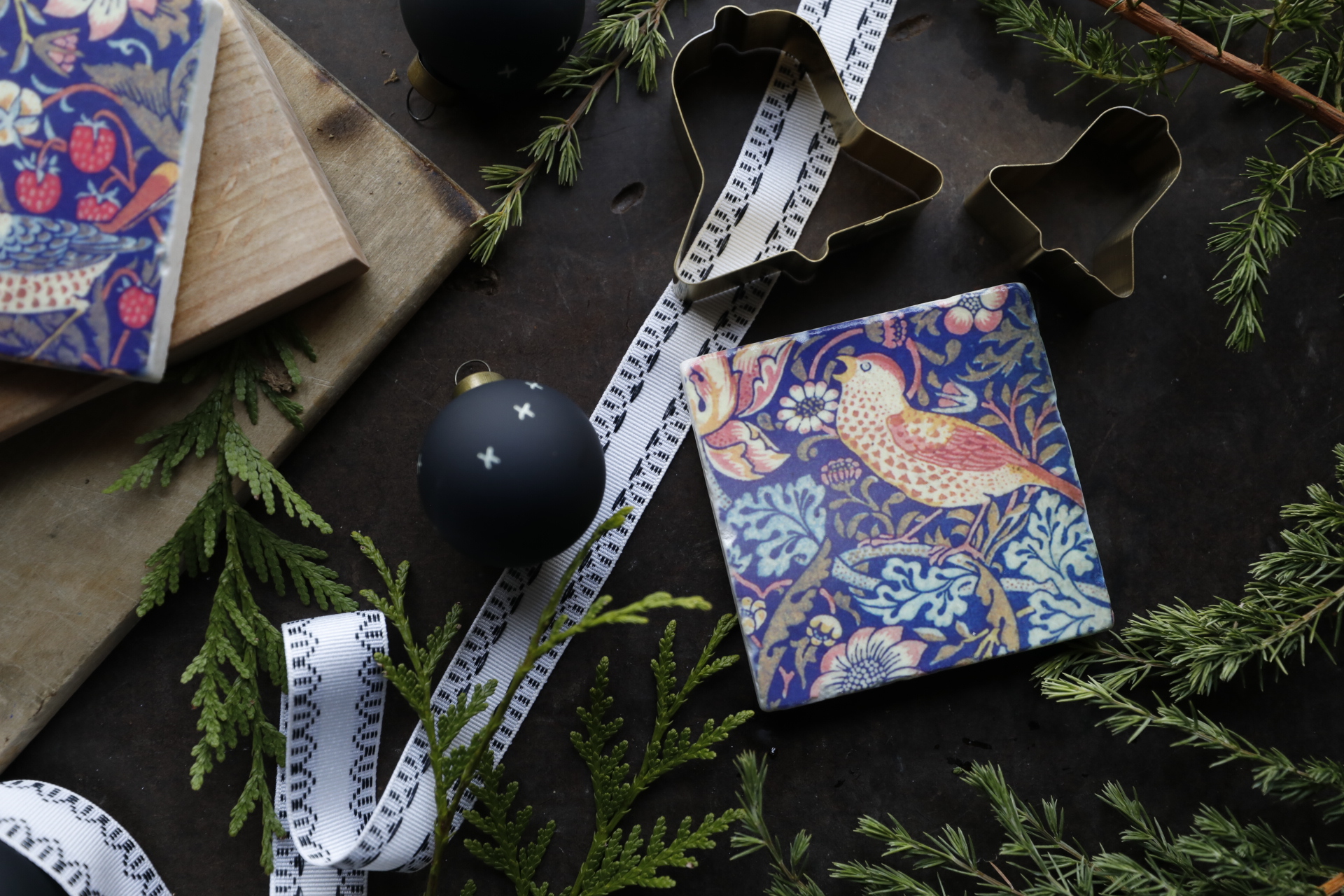What is your business? We make quilts from personal items that carry a lot of significance to people. Basically, people call on us when they want to clear out storage bins of unused, but significant pieces of clothing or linens. Instead of taking up space in the attic, unseen, their items that hold memories can now be seen and used everyday. Most commonly, we work with collections of outgrown children's clothes, an eclectic collection of t shirts, select items from a loved one's wardrobe who has passed away, a combination of items from multi-generations of family members, wedding party attire, and even grandma's crocheted doilies. You name it, we quilt it.
Did you come from the corporate world? Were you always a maker? My background is education. My degree is in elementary education. I taught fourth grade for two years before handing in my resignation and looking for ways outside the walls to teach and inspire people.
Tell us about your process to becoming a maker. It started with my mother always telling me that a man should have a toolbox and a woman should have a sewing machine. I never understood. I could buy anything I needed, so why should I make it? Until one day, when I needed a gift and no store had what I had in mind. So, because my mom won the battle of me owning a sewing machine, I was able to make that gift. Not knowing how to sew, I literally lost sleep trying to figure out how to sew squares together, maneuvering around corners and how to put an edge on a finished quilt. What way did I need to fold the fabric? How did I need to cut the pieces? How do I cut fabric? I needed to figure it out myself. My own stubbornness held me from learning in conventional ways. I didn't want to be told how to do it, I just had to try. And it was so much fun, that I made a lot of things for that gift. And I am still making those things that I gave as a gift that day.
Why are you still a maker? I am still a maker because of the happiness it makes people feel when they receive what I make. To give someone a tangible way to hold memories in their hands is something that I will never tire of making.
Is this your main job? Yes, second only to raising our family of six kids.
Tell us about your creative process and the evolution of that process as you've perfect your craft and as you've grown as a business. Listening is the biggest part of our creative process. Reading people's handwritten stories pinned to articles of clothing that hold their memories, hearing the trembling in a voice on the phone telling us they don't know how many more days their loved one will have to live, reading descriptions of siblings' bubbly and artistic personalities, holding the fabrics that memories were made in is where it all starts for us. We make quilts, but we also write the stories of people's lives within those squares. And so, we don't operate under strict rules. Rather, we let what is important to each customer lead us.
What inspires you? Colors and stories. Colors inspire us as if each one carries it's own frequency, creating visual melodies and harmonies when they are combined. And stories of families, generations and heritages sit cozy in our hearts, surfacing as squares of colors that become a quilt.
Who inspires you? Anyone with a story to share stirs our hearts. Nostalgic stories about traditions laid forth by grandparents, love stories that celebrate the little things, stories of loss and the seemingly insatiable heartache it leaves, sporty stories of athletic achievements, childhood stories of our own fast growing children, or stories of our childhood, as told by the worn thin knees of a bell bottom pair of corduroys and a matching peter pan collared polyester knit striped shirt. It all matters.
Who are your role models? Our role models are people who have not missed the opportunity to take a chance. To see a person with a passion so big that they take a leap and put it into action, not knowing if it will work or not, will always be the people we look up to.
Who has been your biggest champion as you've progressed as being a maker? My family. My husband's continued encouragement and belief in this little company that I started has carried me through times in which I didn't know if I had what it took to make it through. He leads me when I get stuck, and helps me handle it when the workload is high, easing my fears and building my determination. And my kids. They see me working when the first wake, and they know that after tucking them in bed at night, I will probably go to my studio to finish the day's work. They look at and point out their favorite squares as the quilts come together. They know that they can do hard things because they see me pushing through, when it would be easier to give up. And to be able to teach them that, by example, makes them champions.
